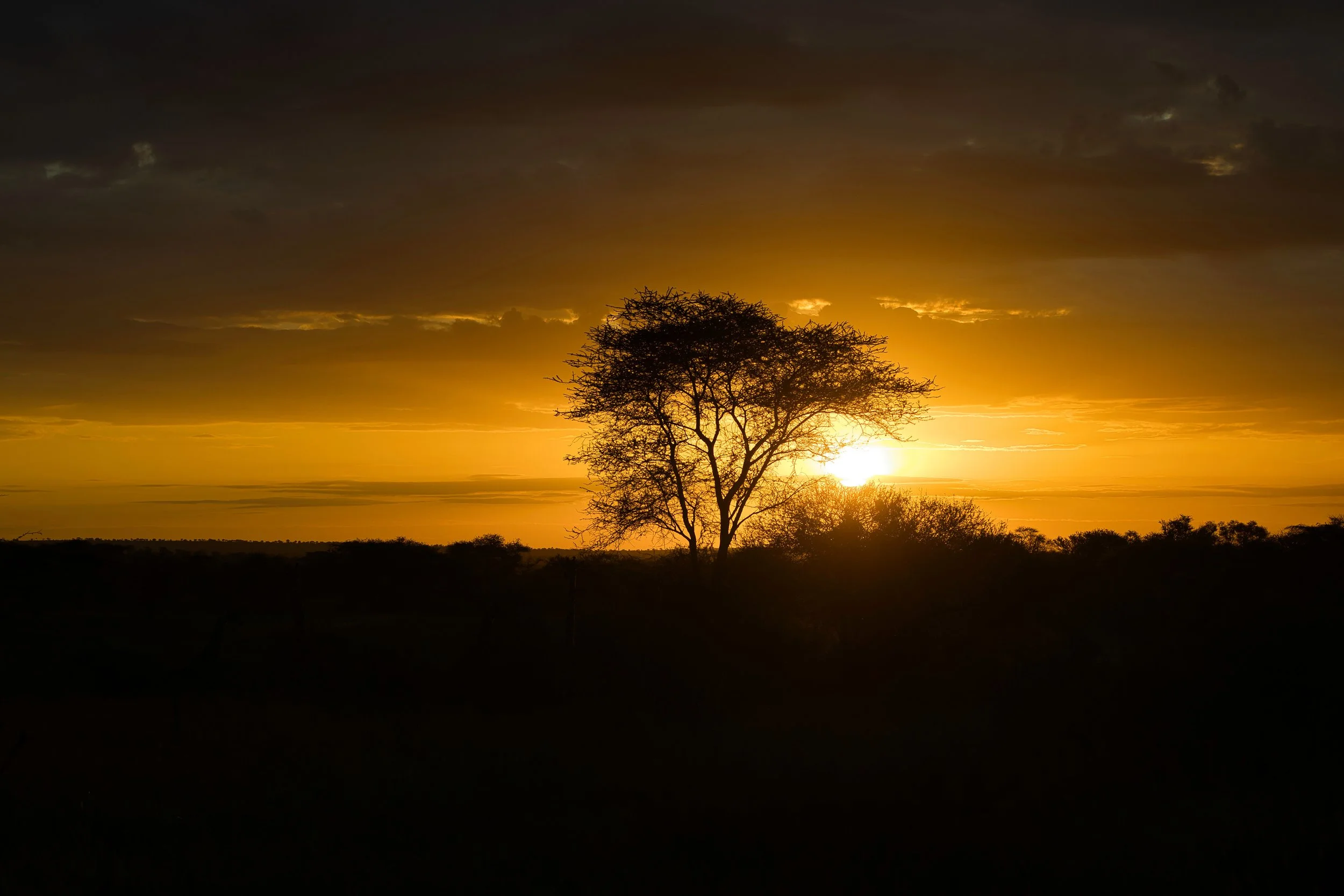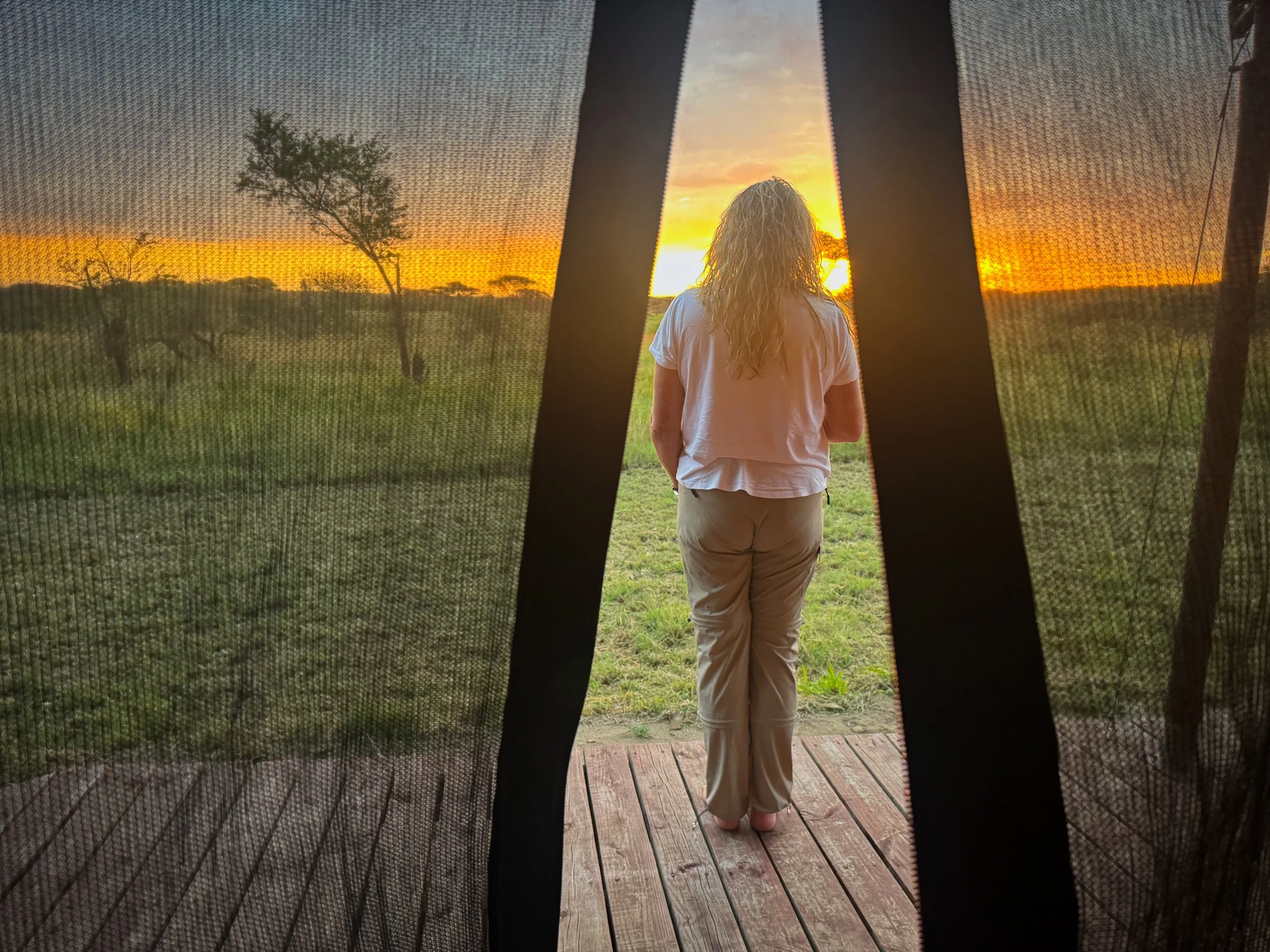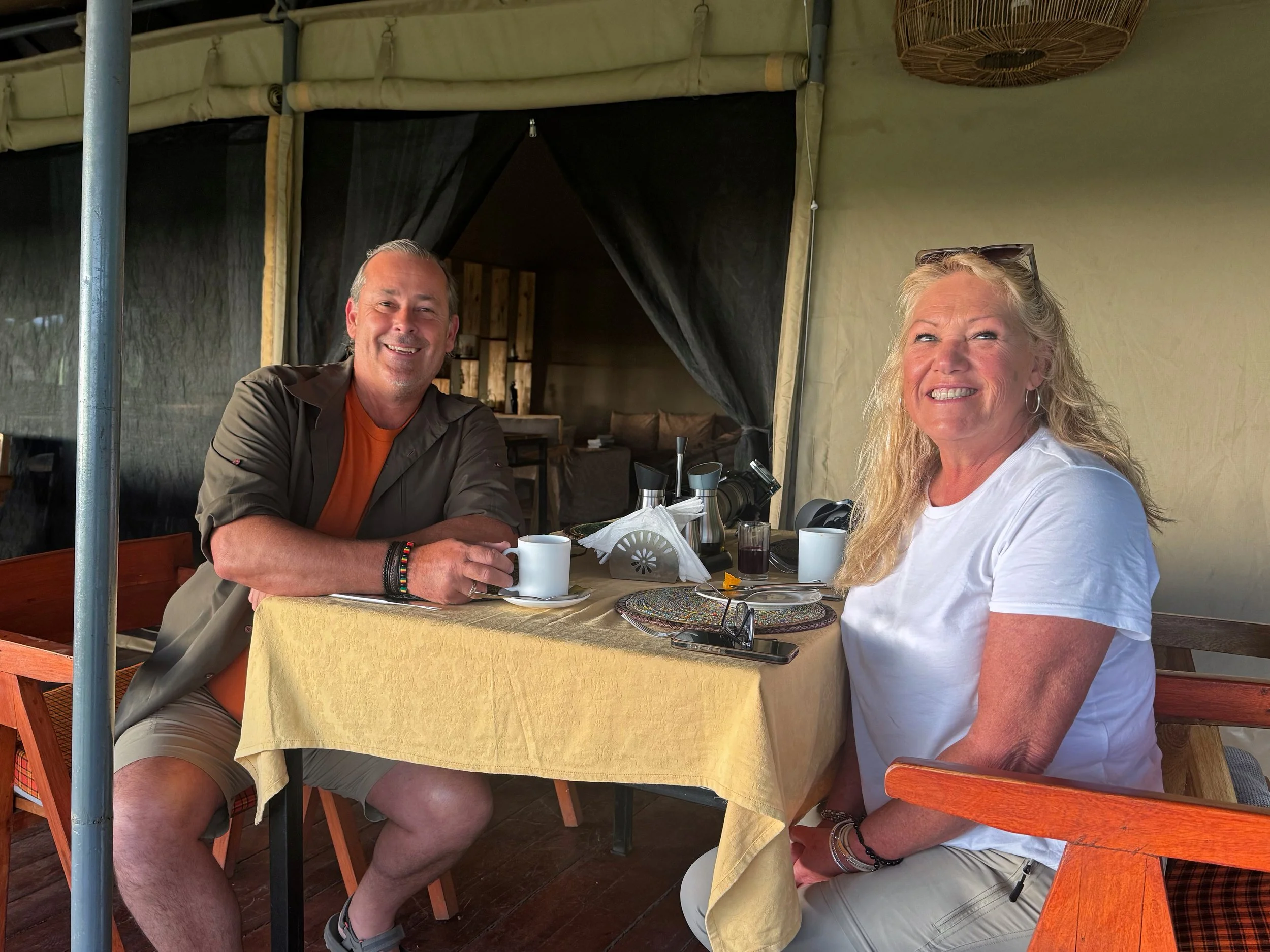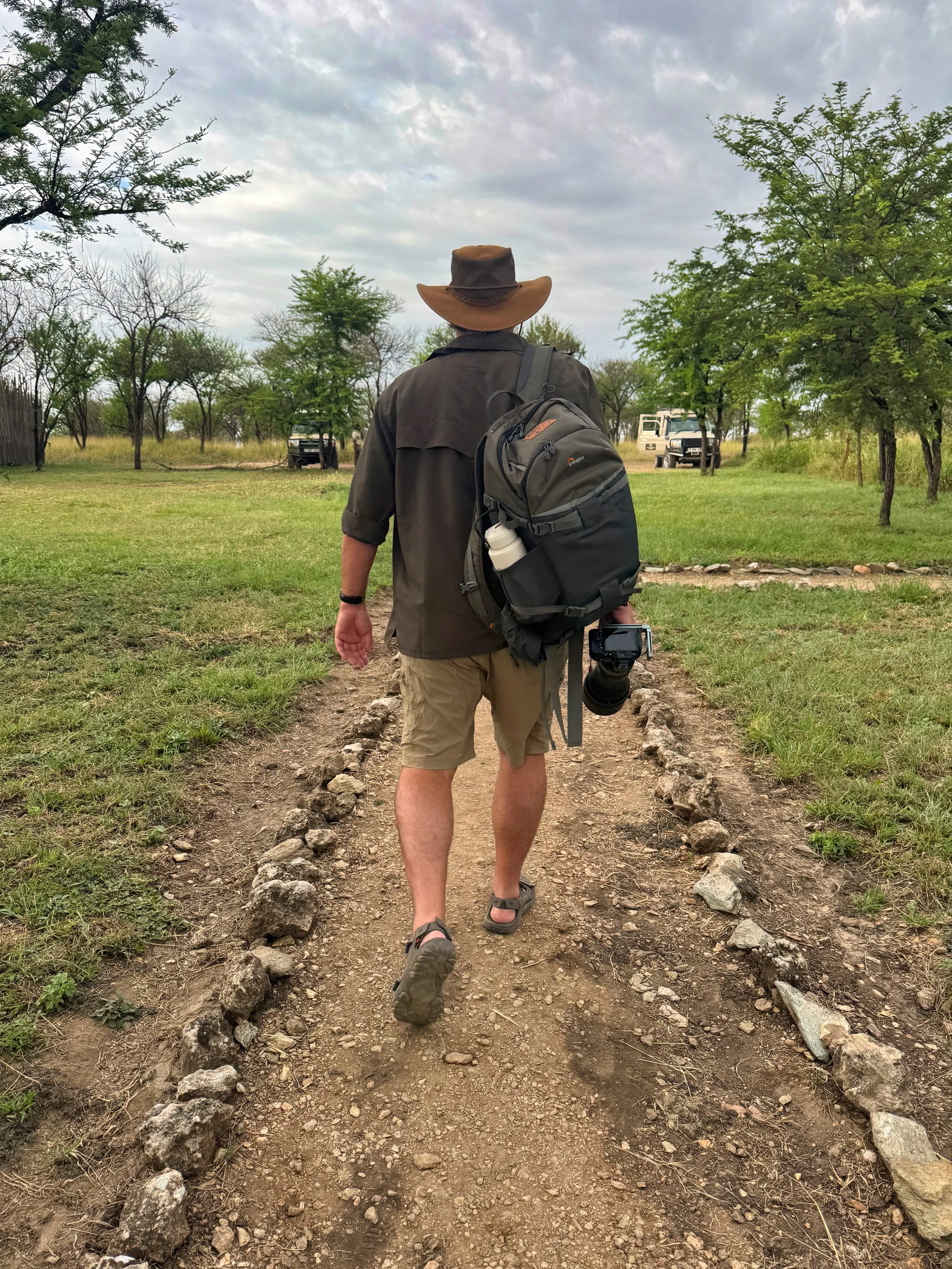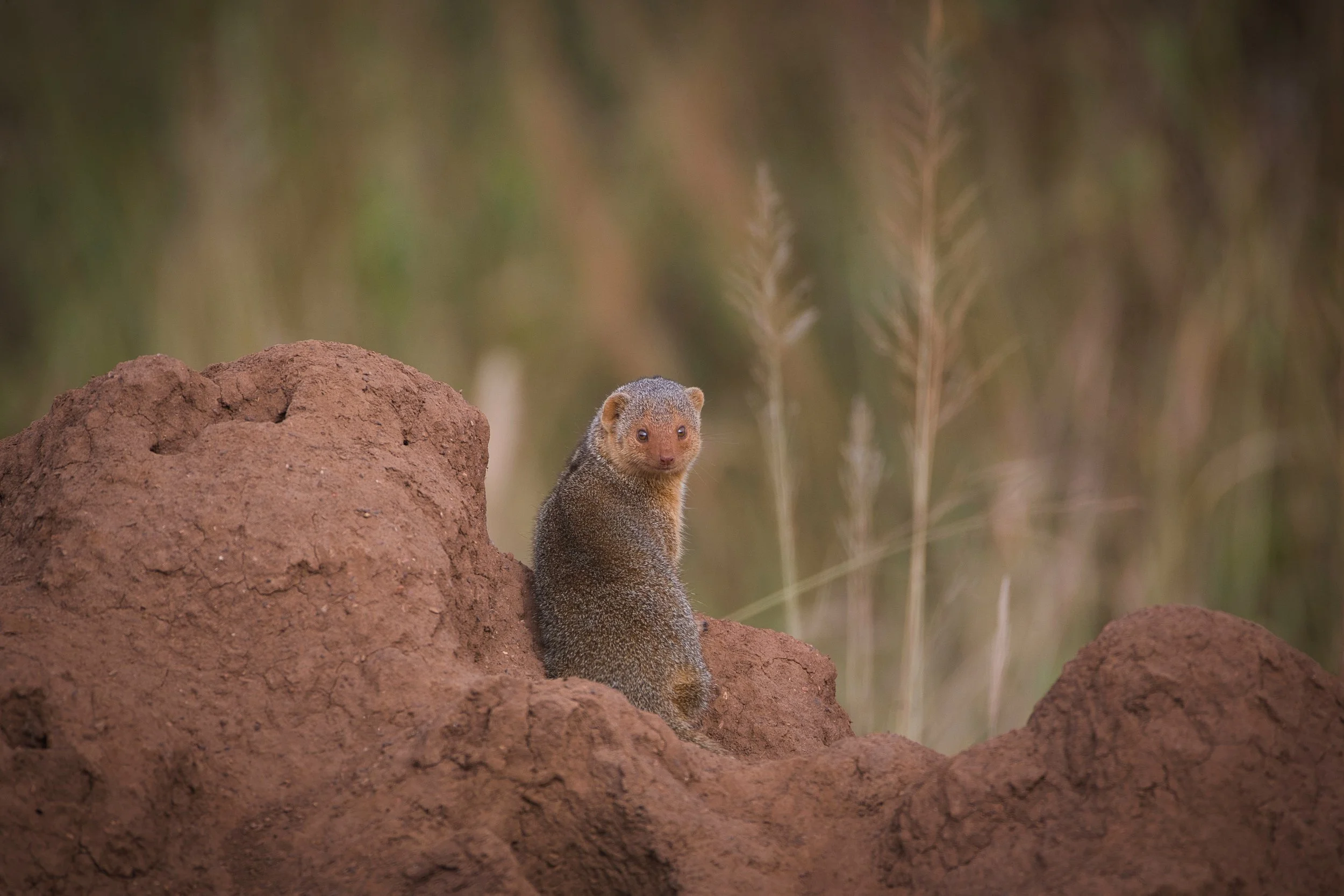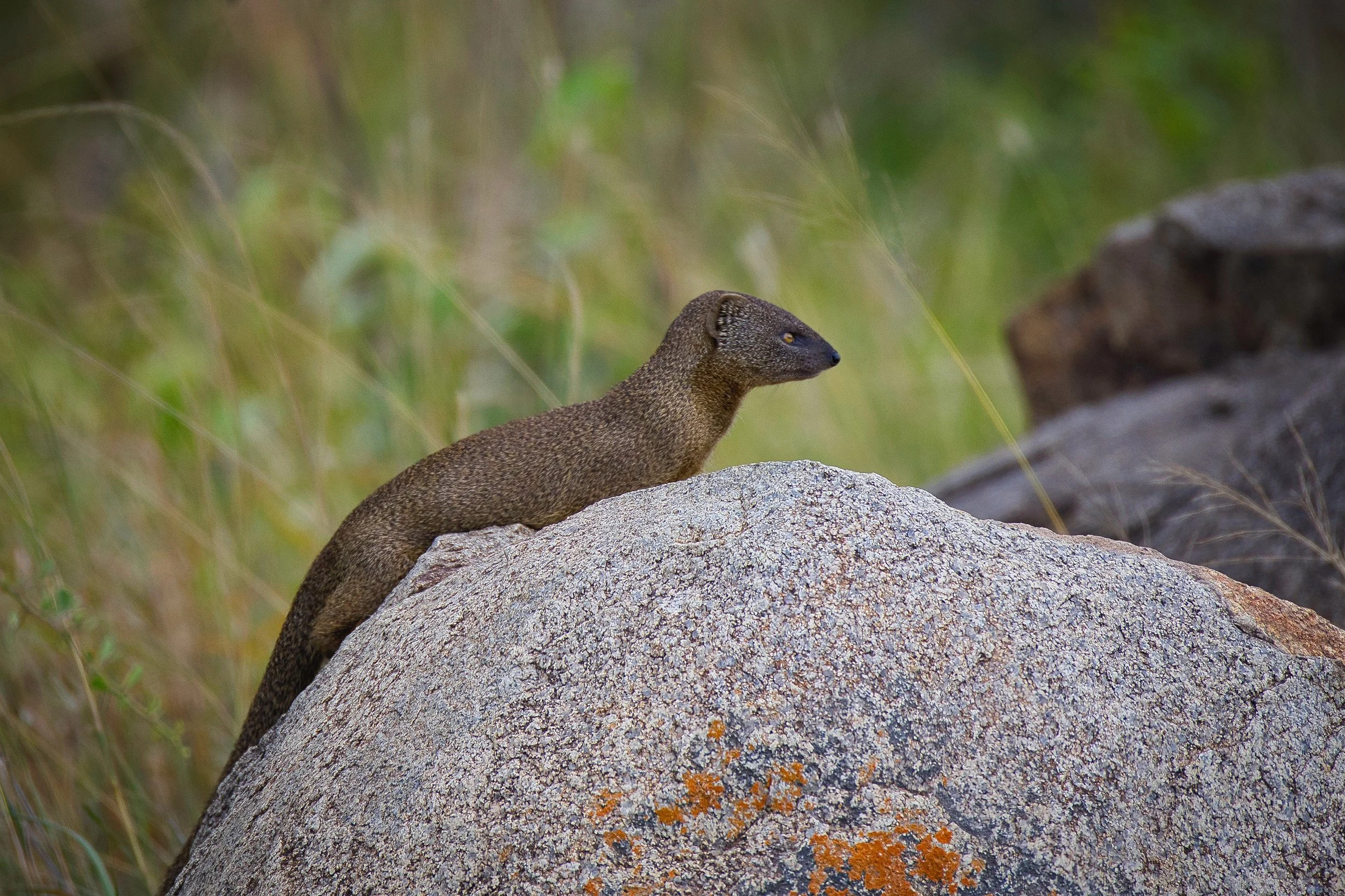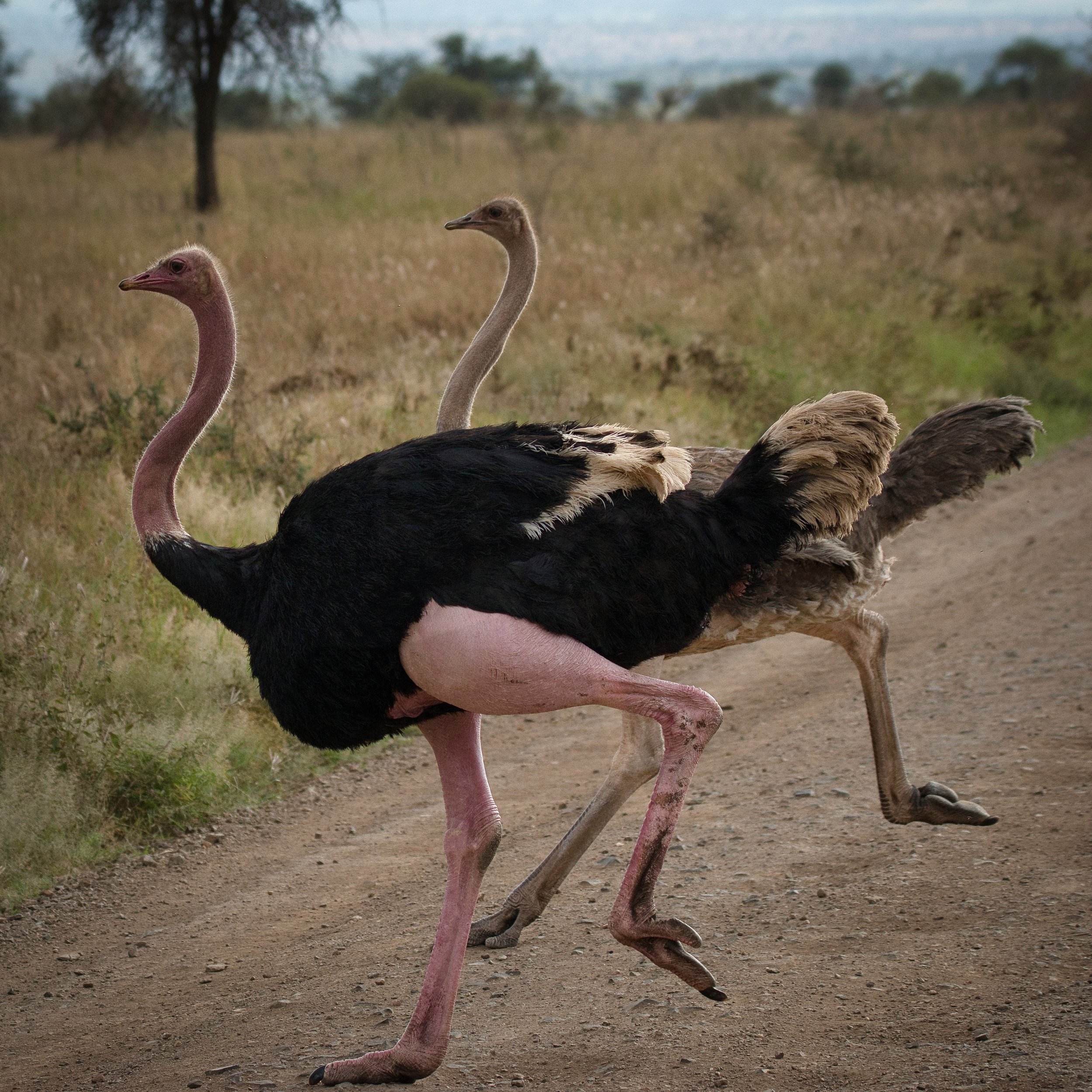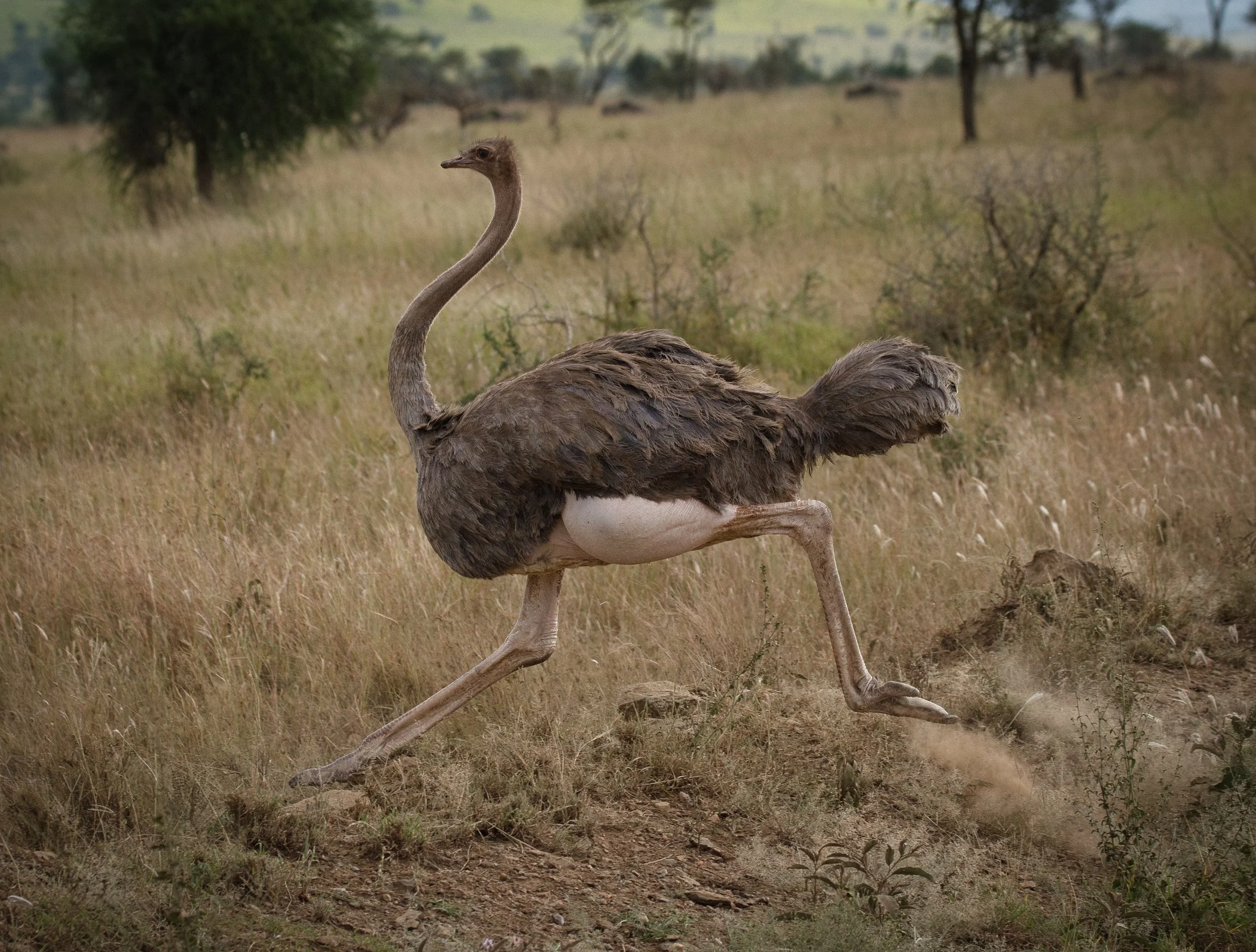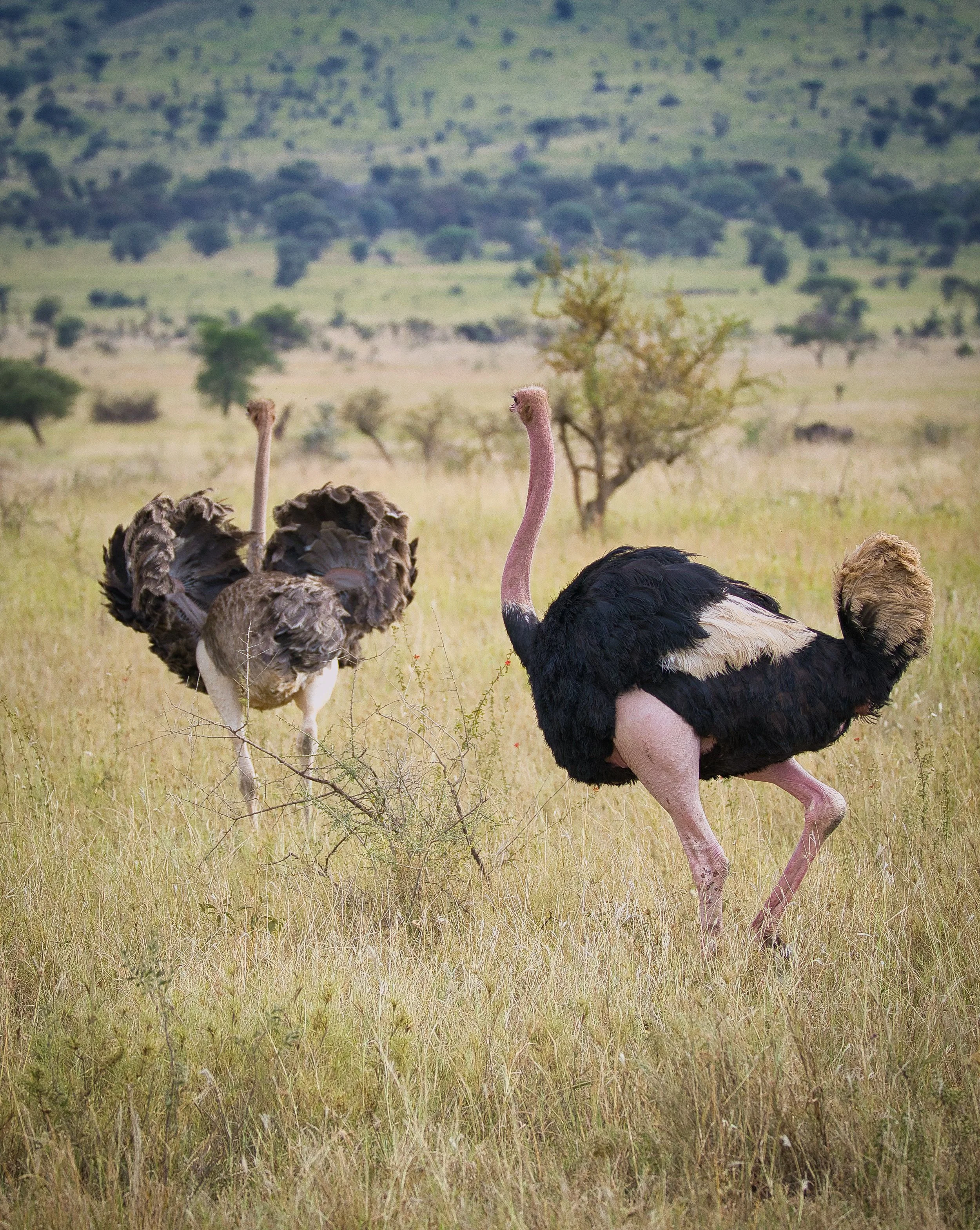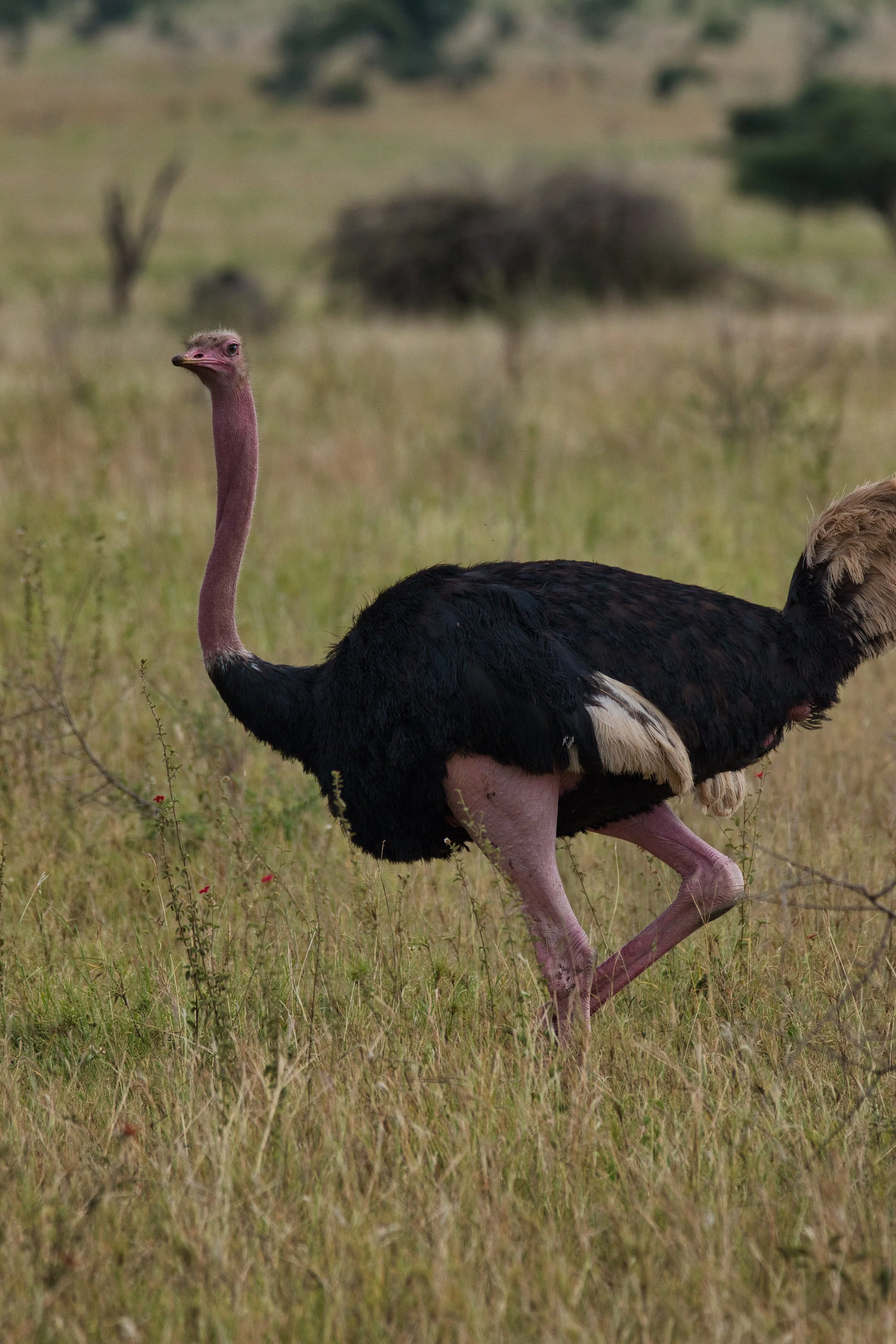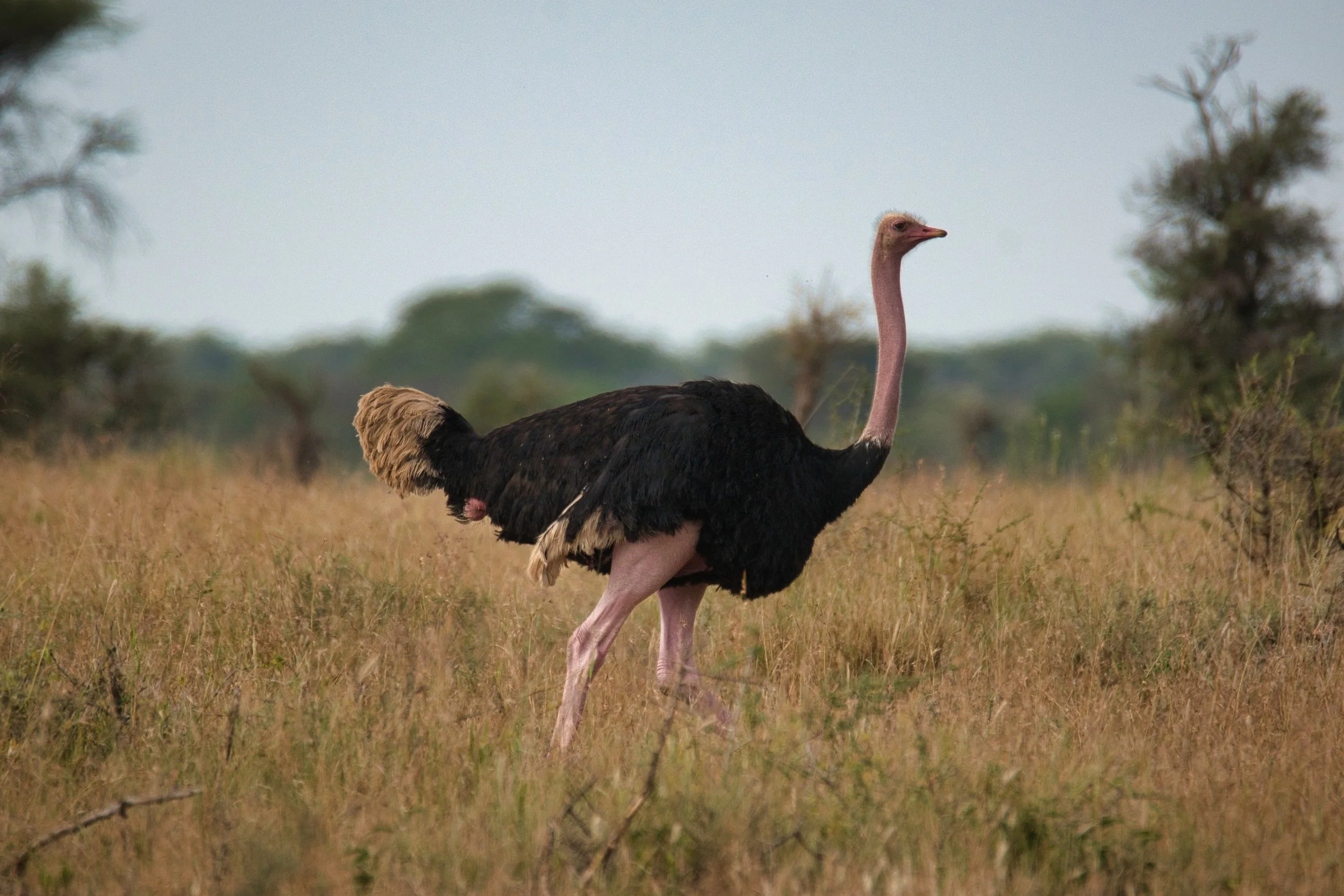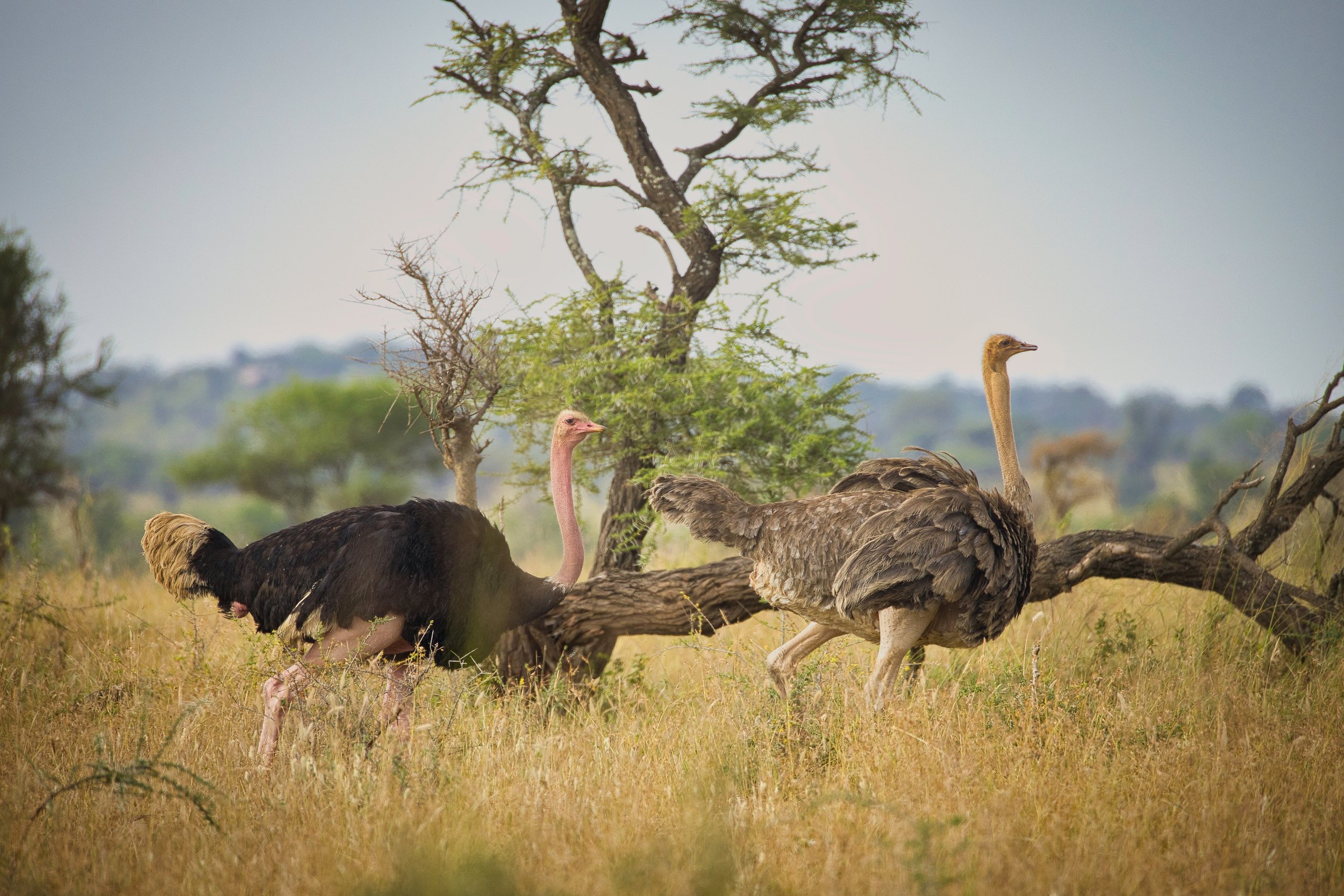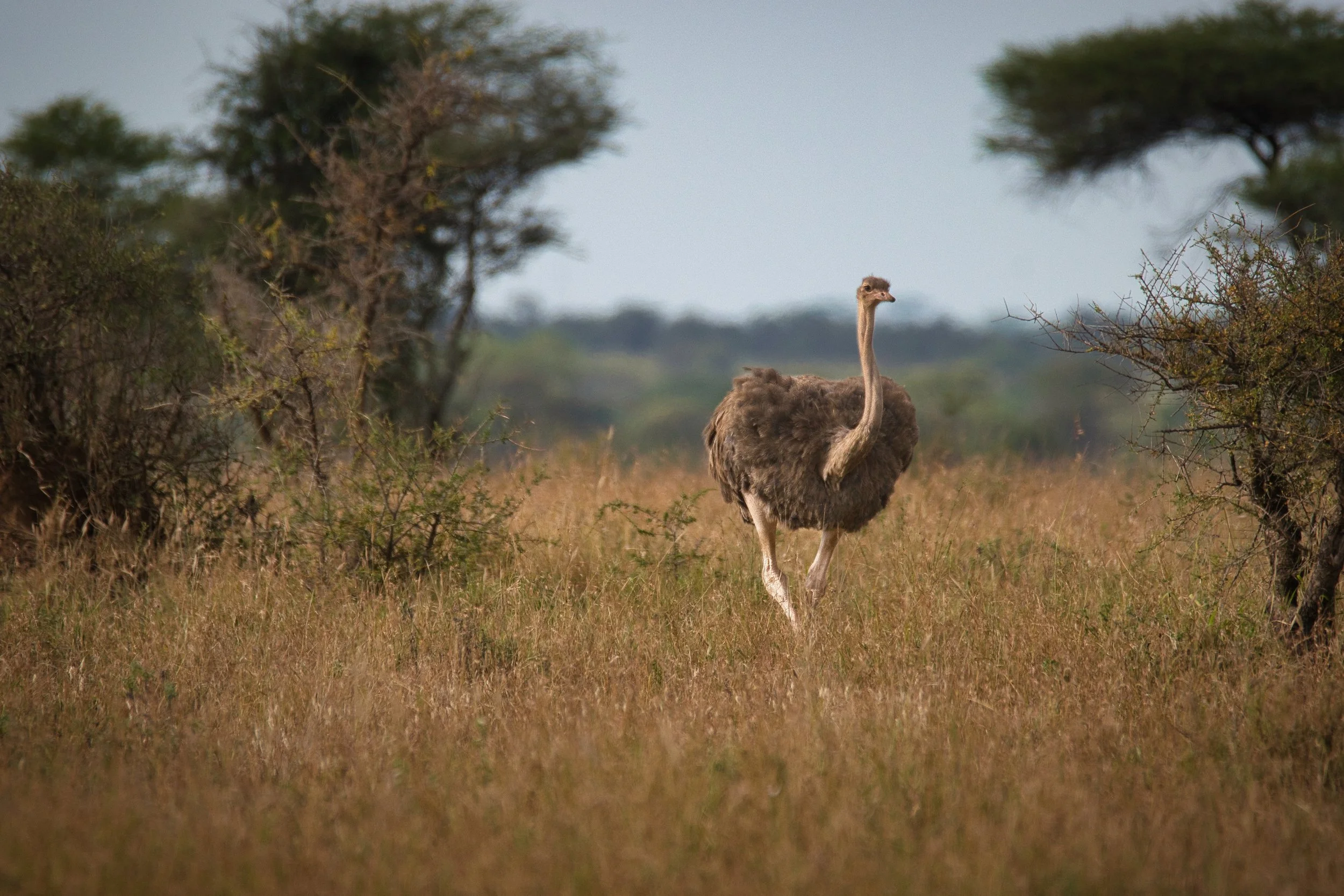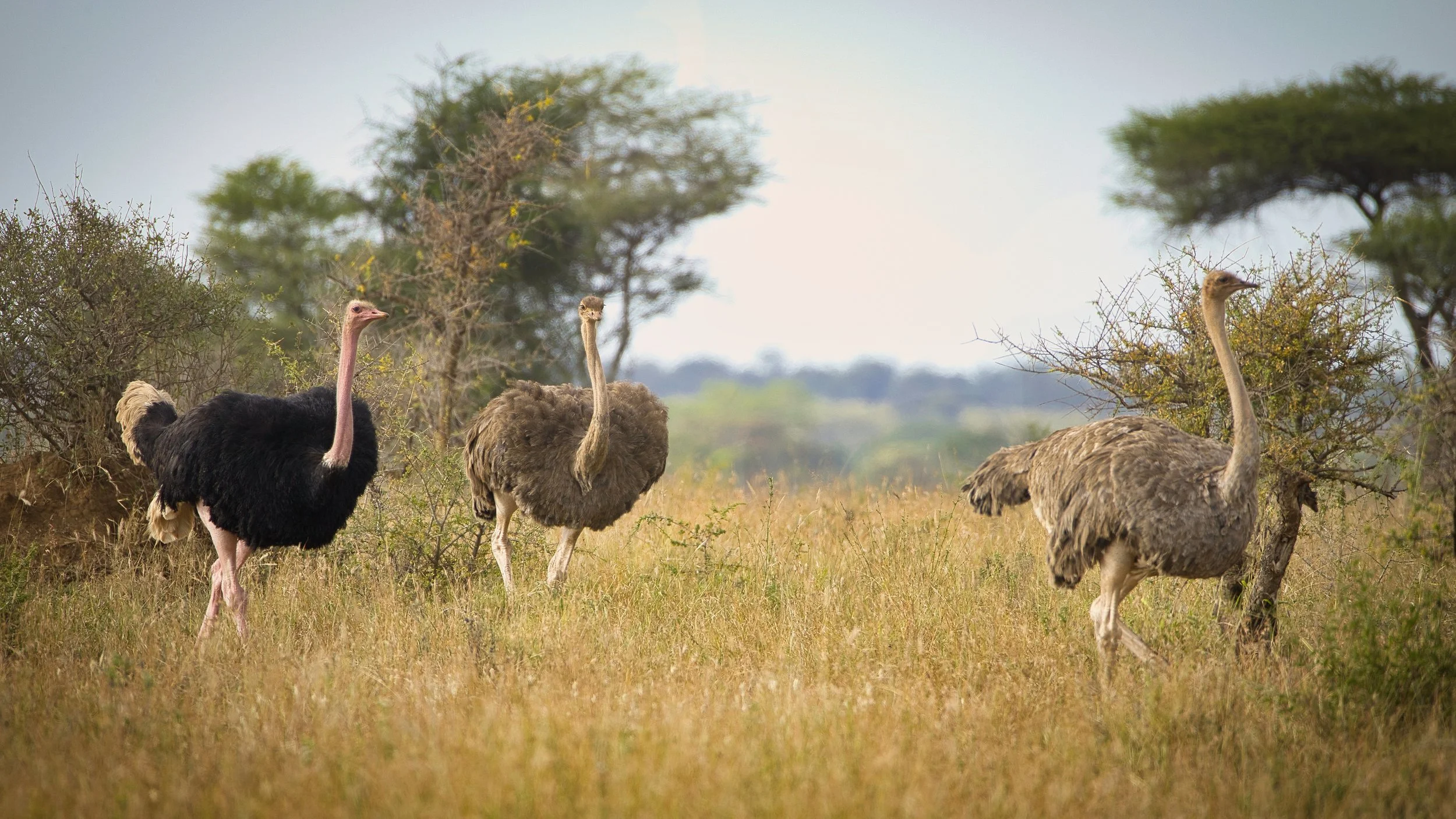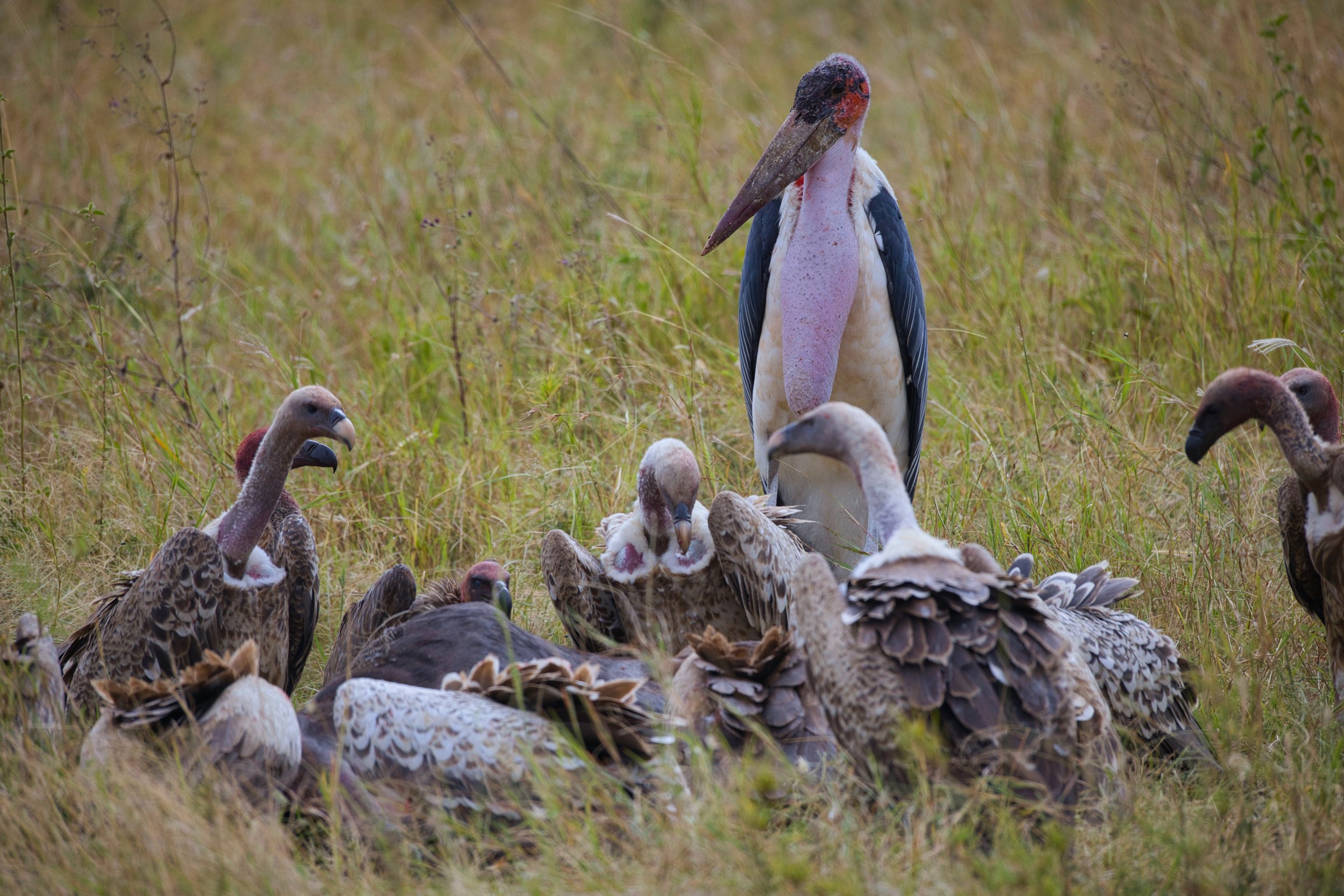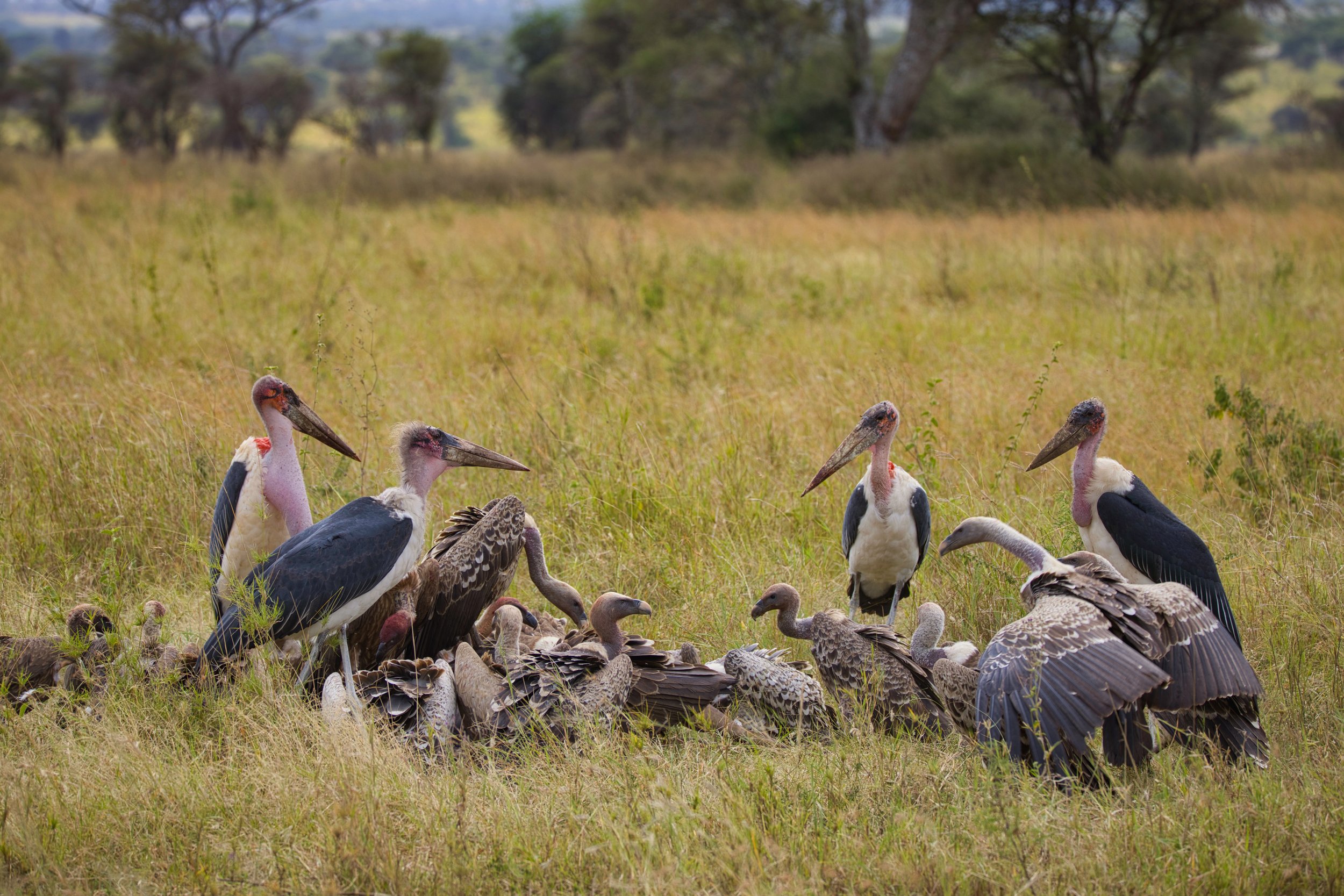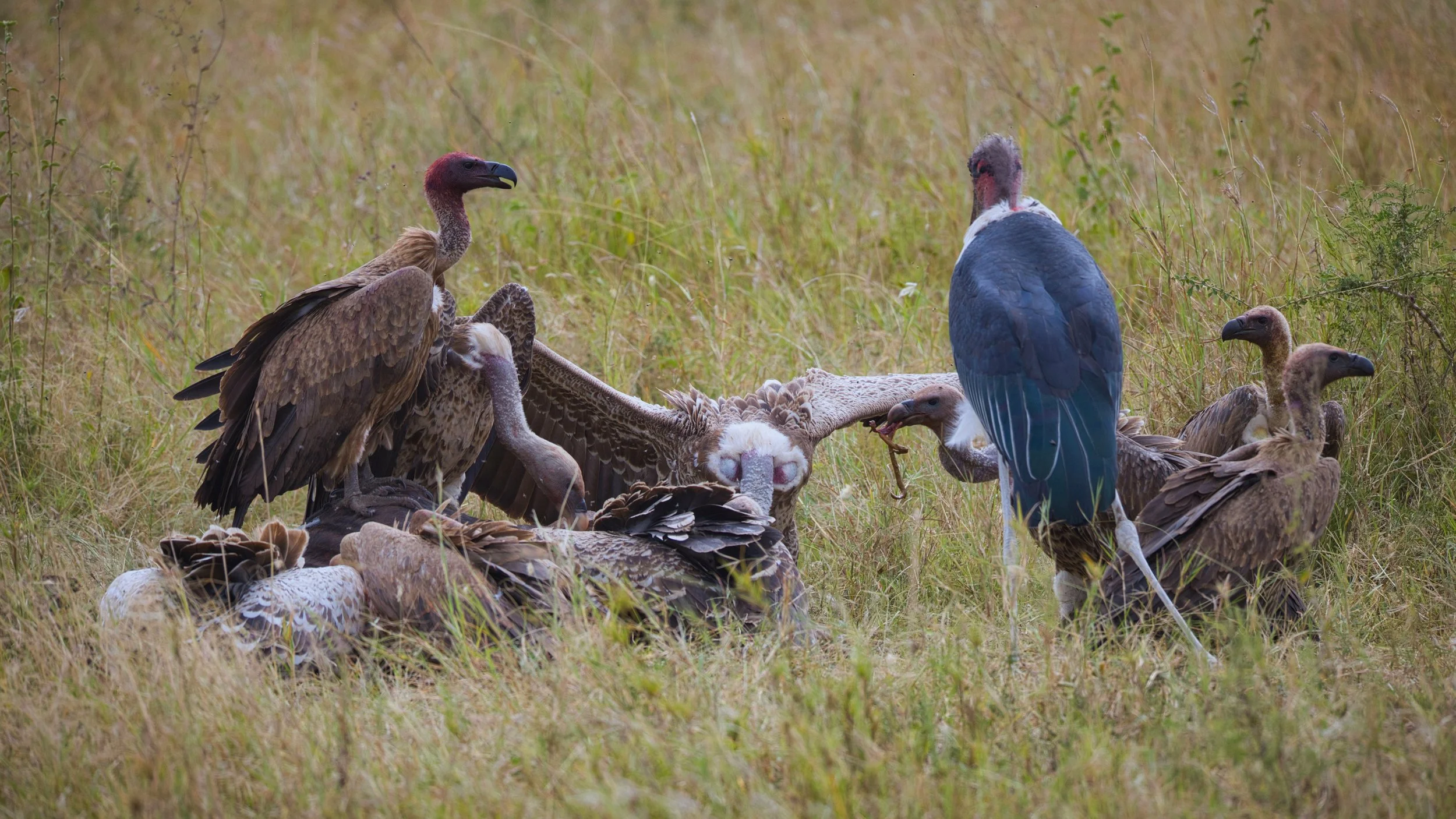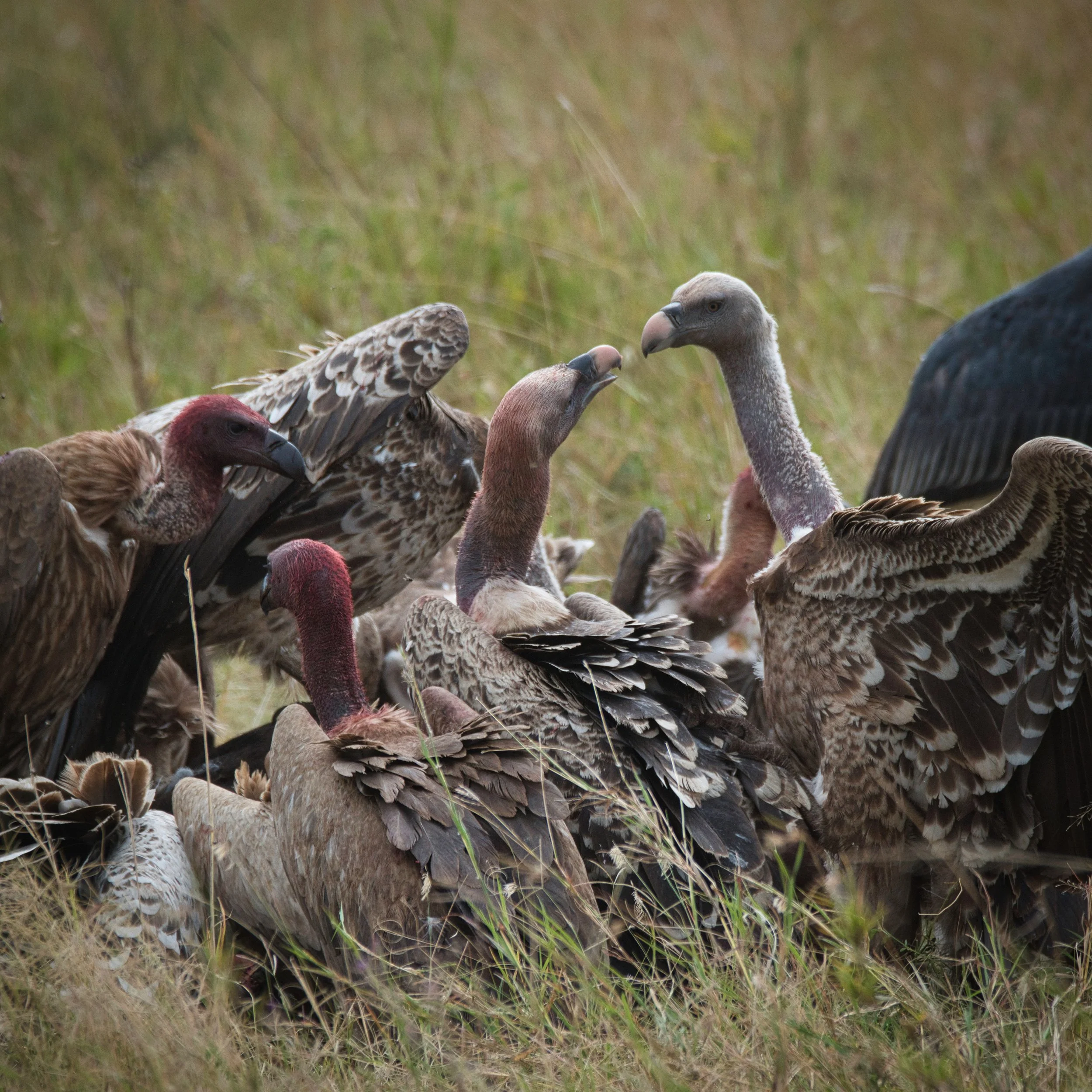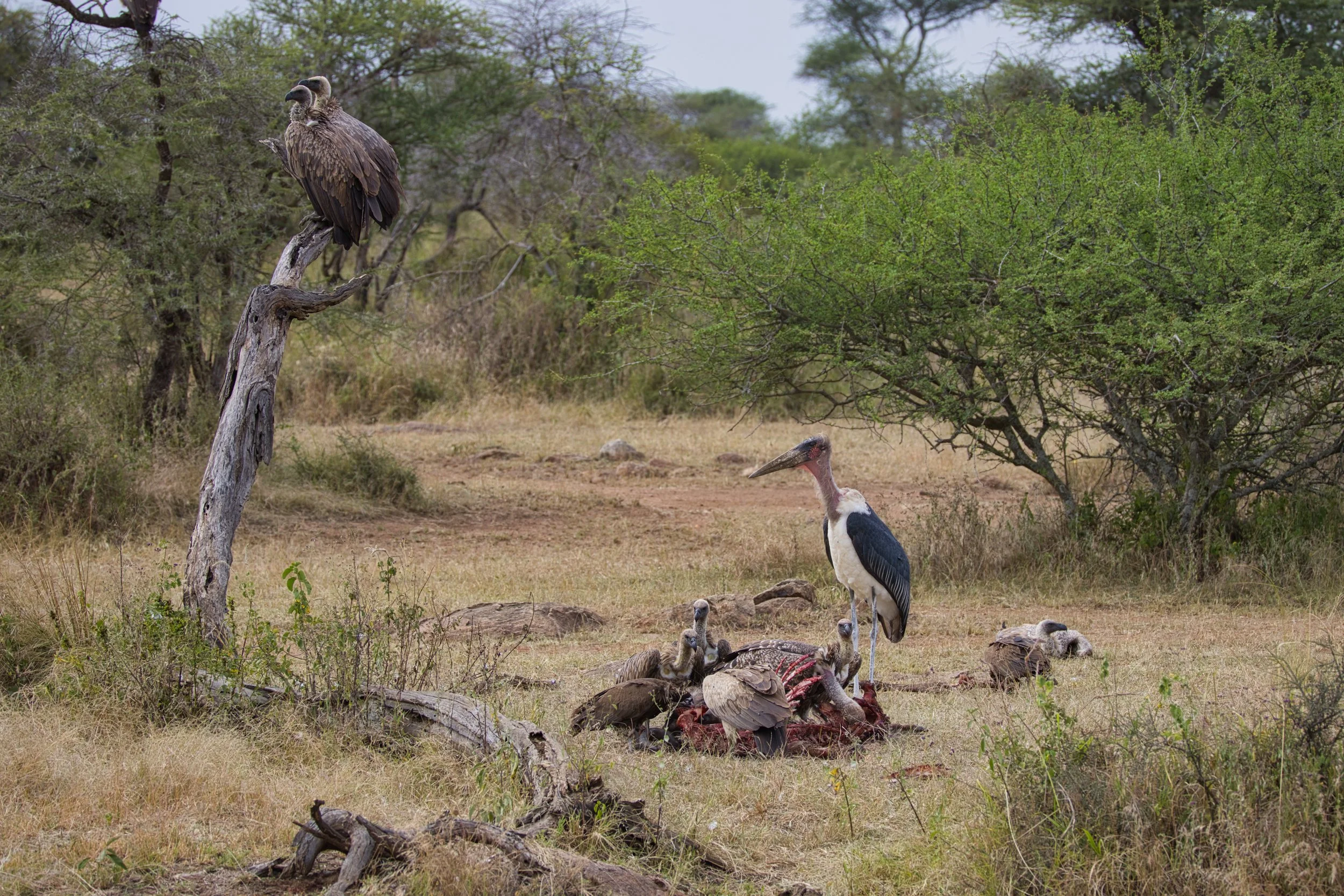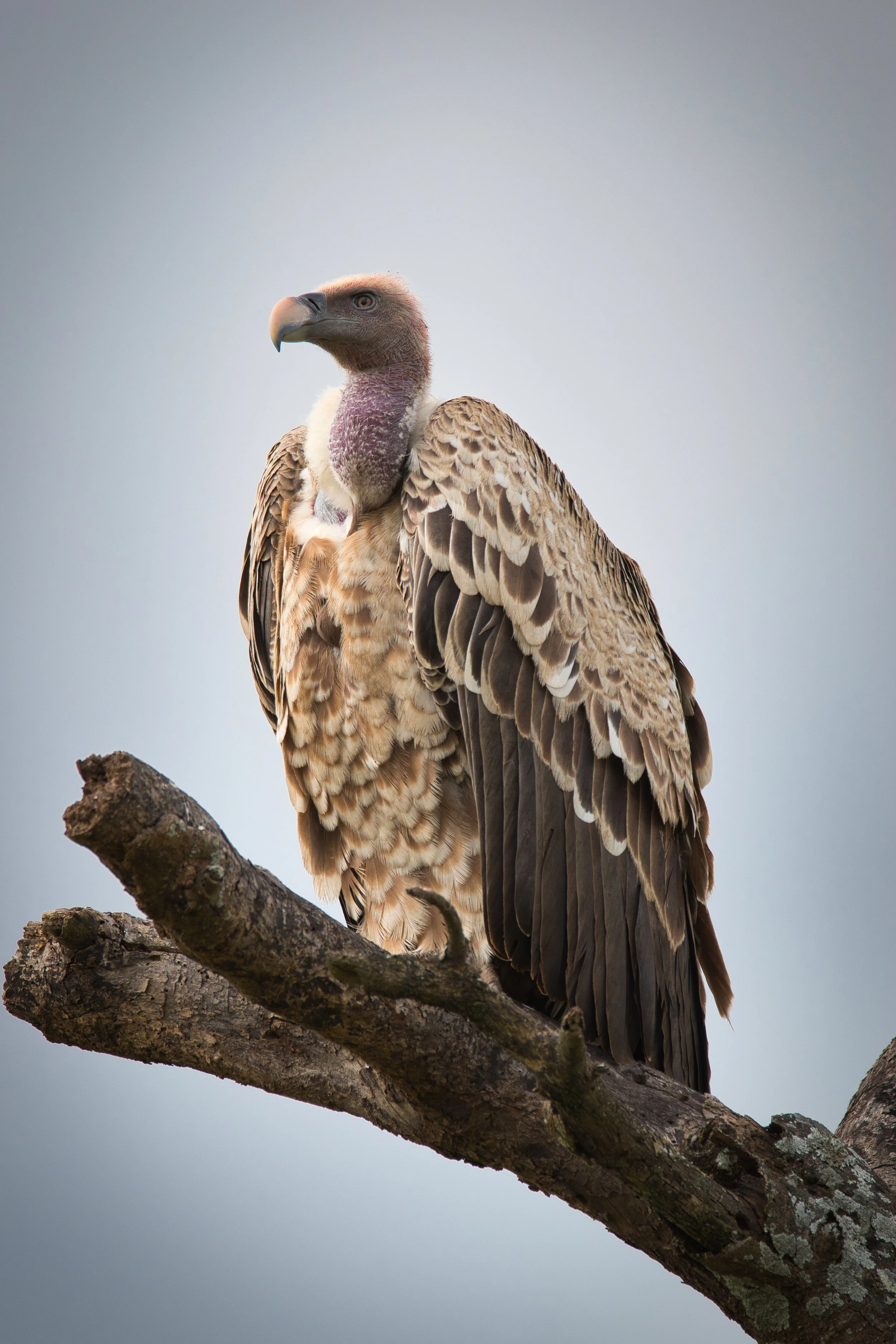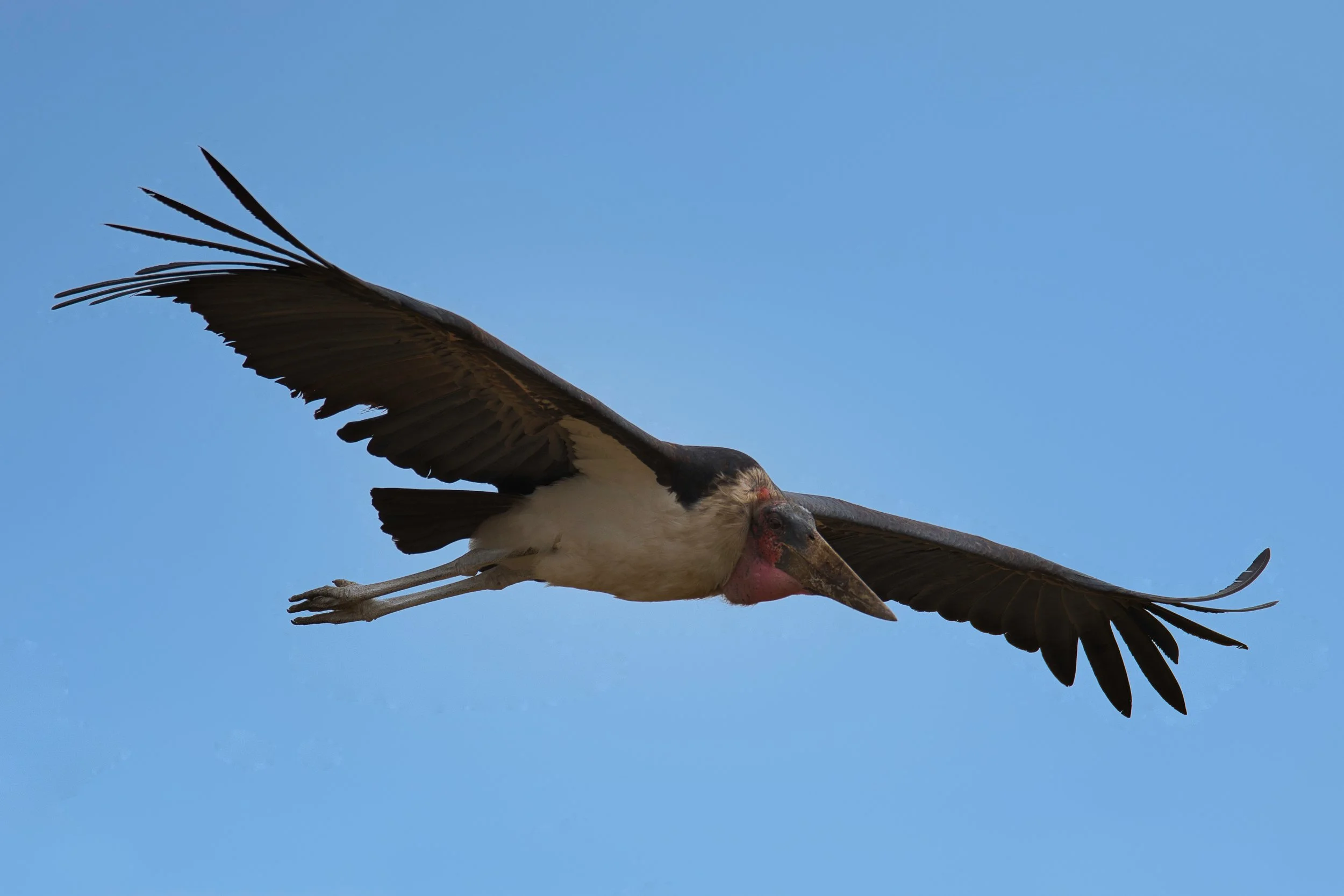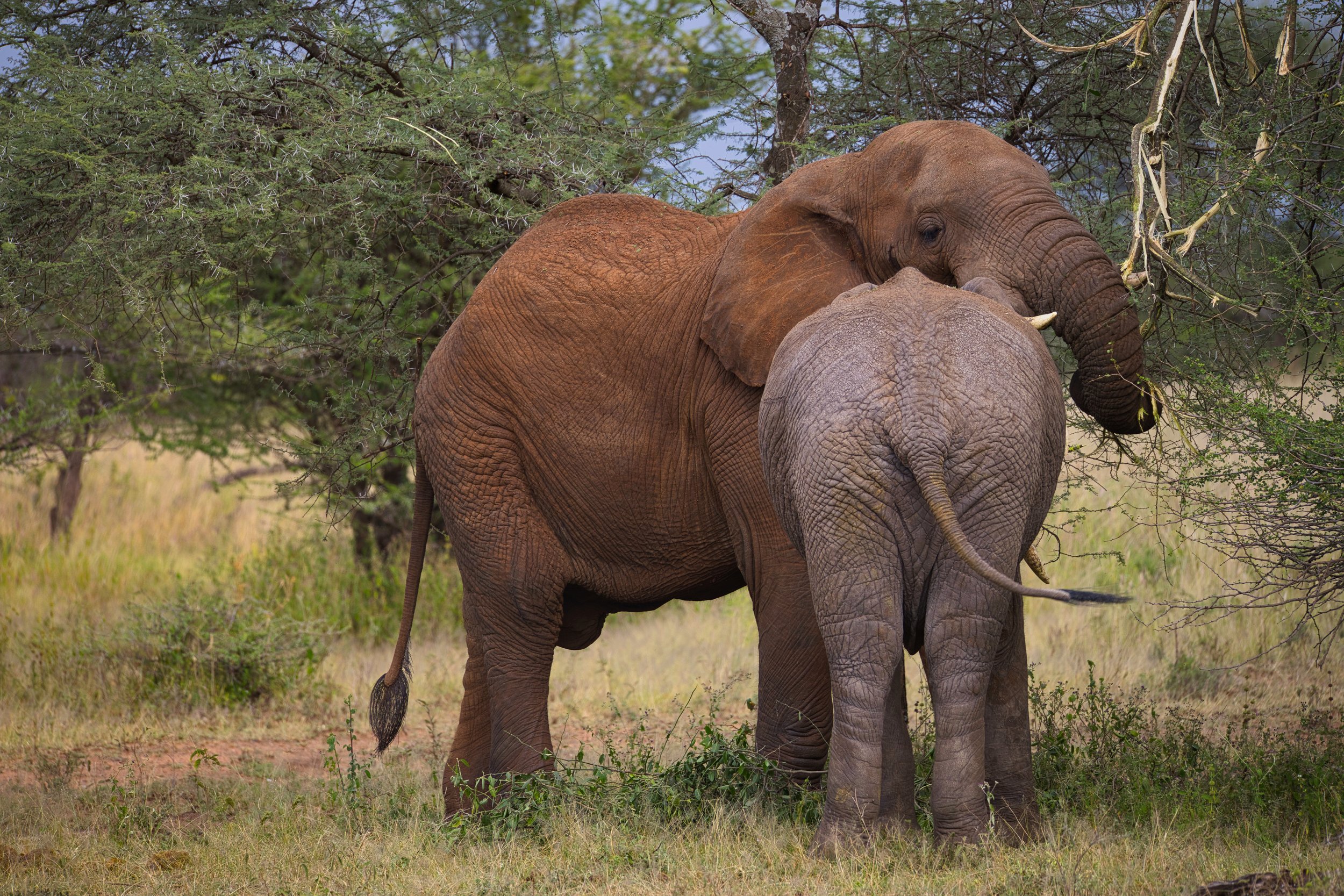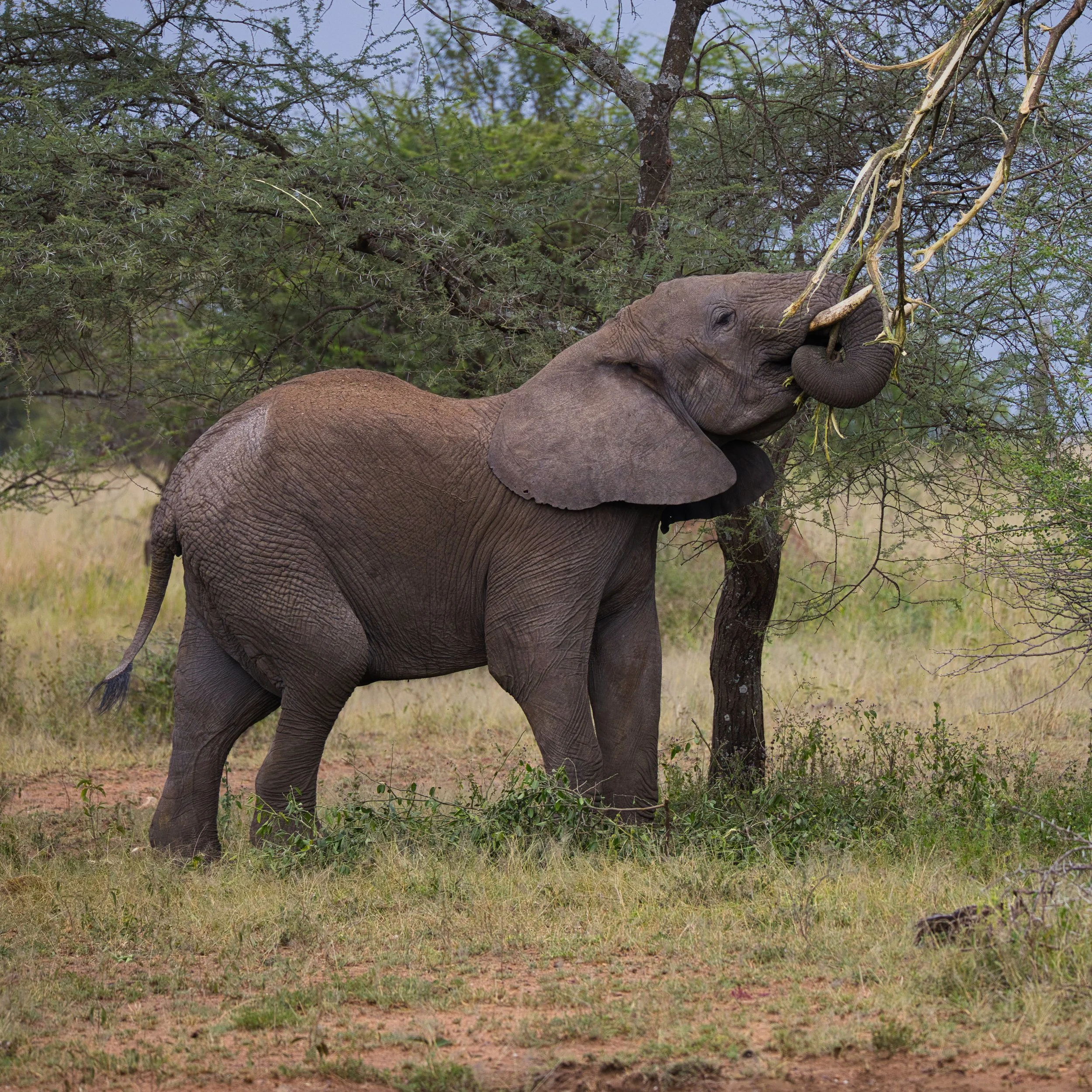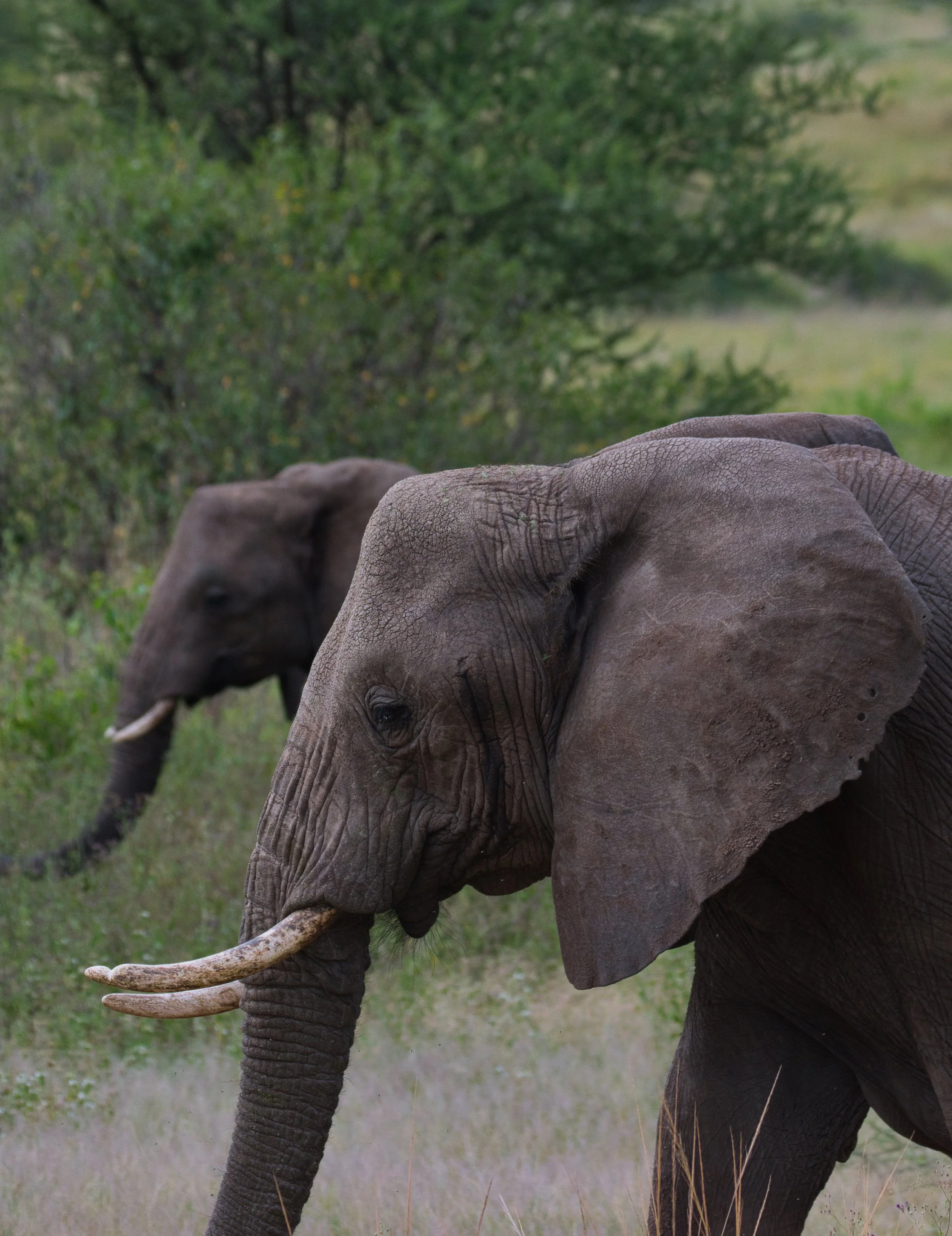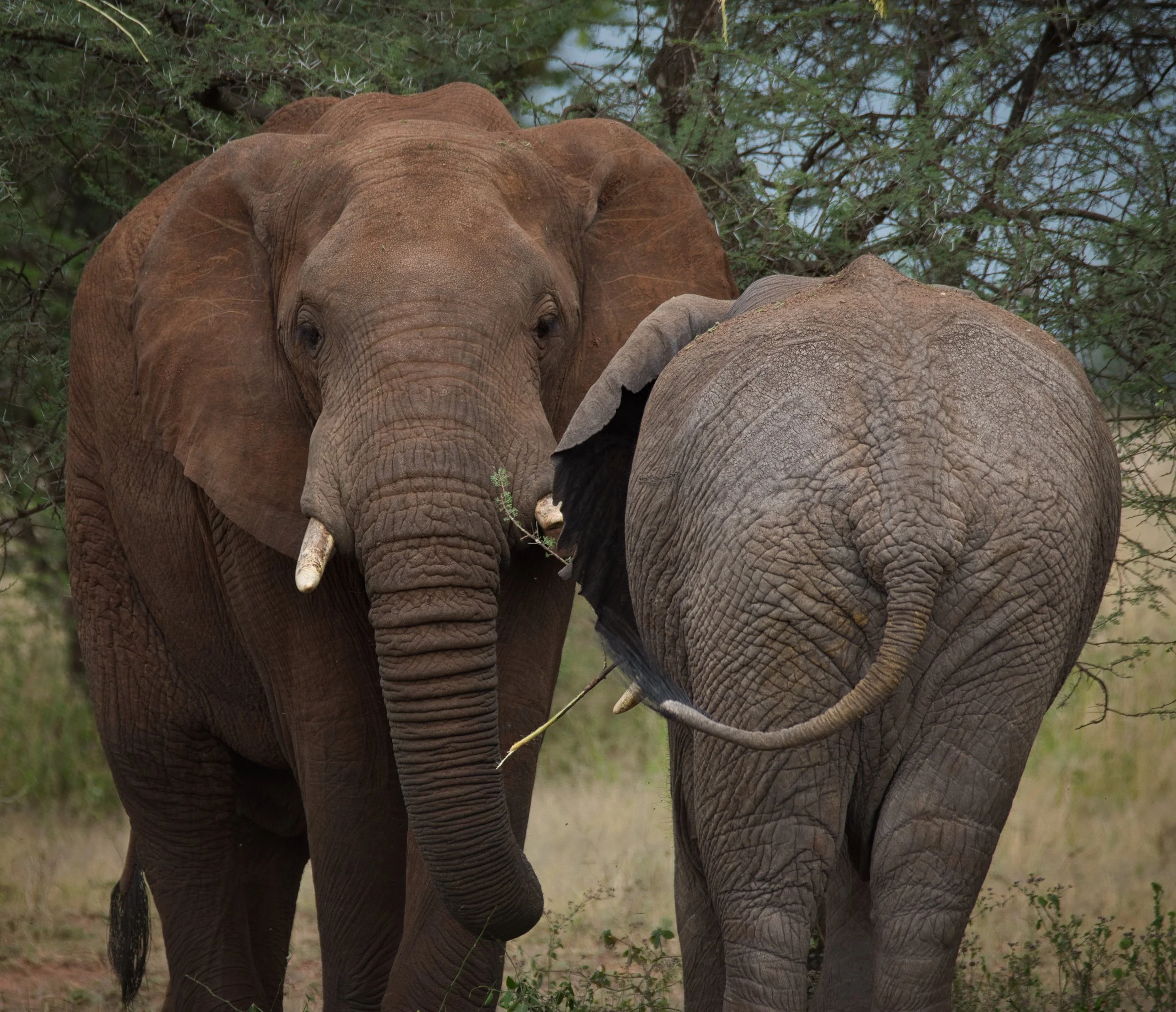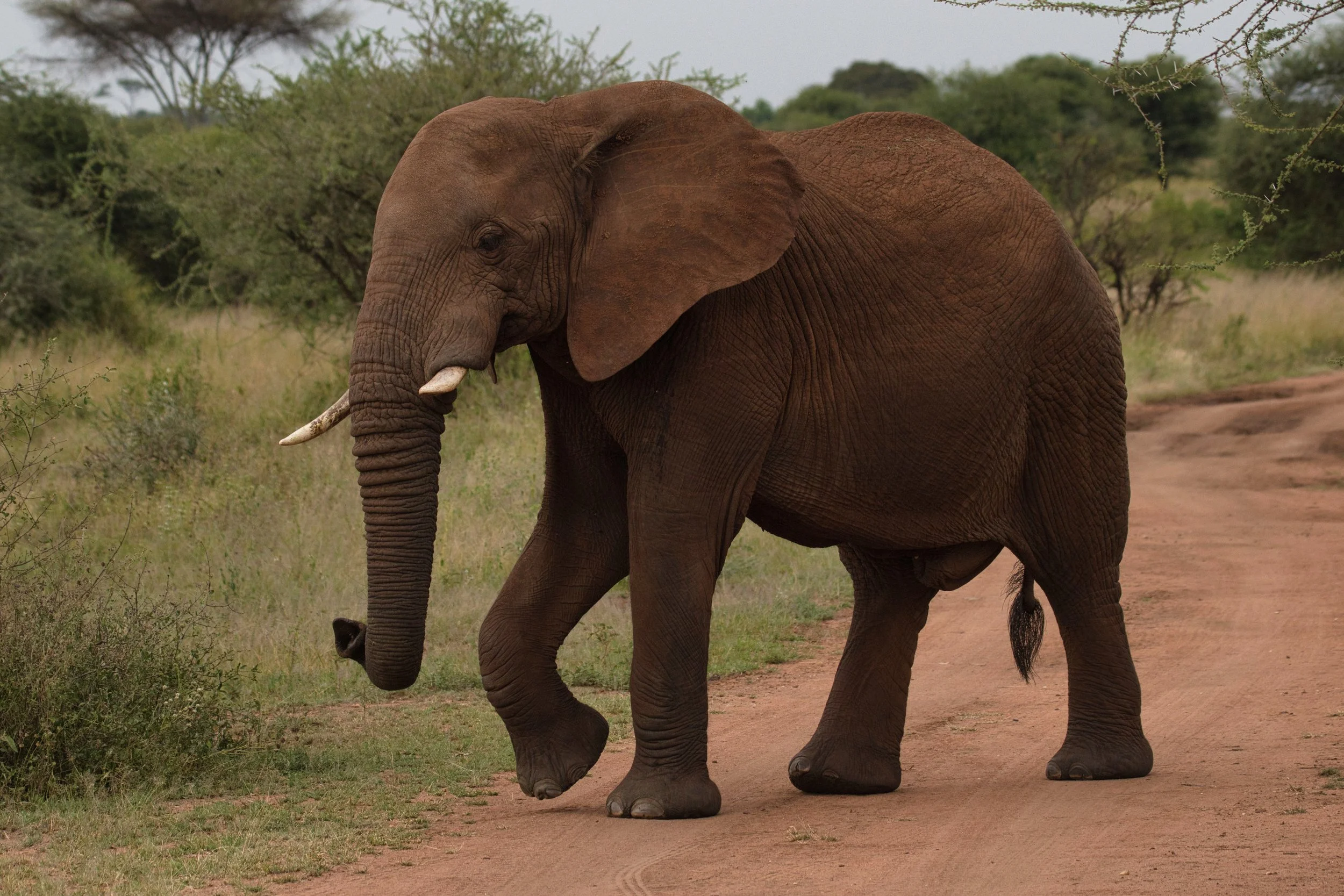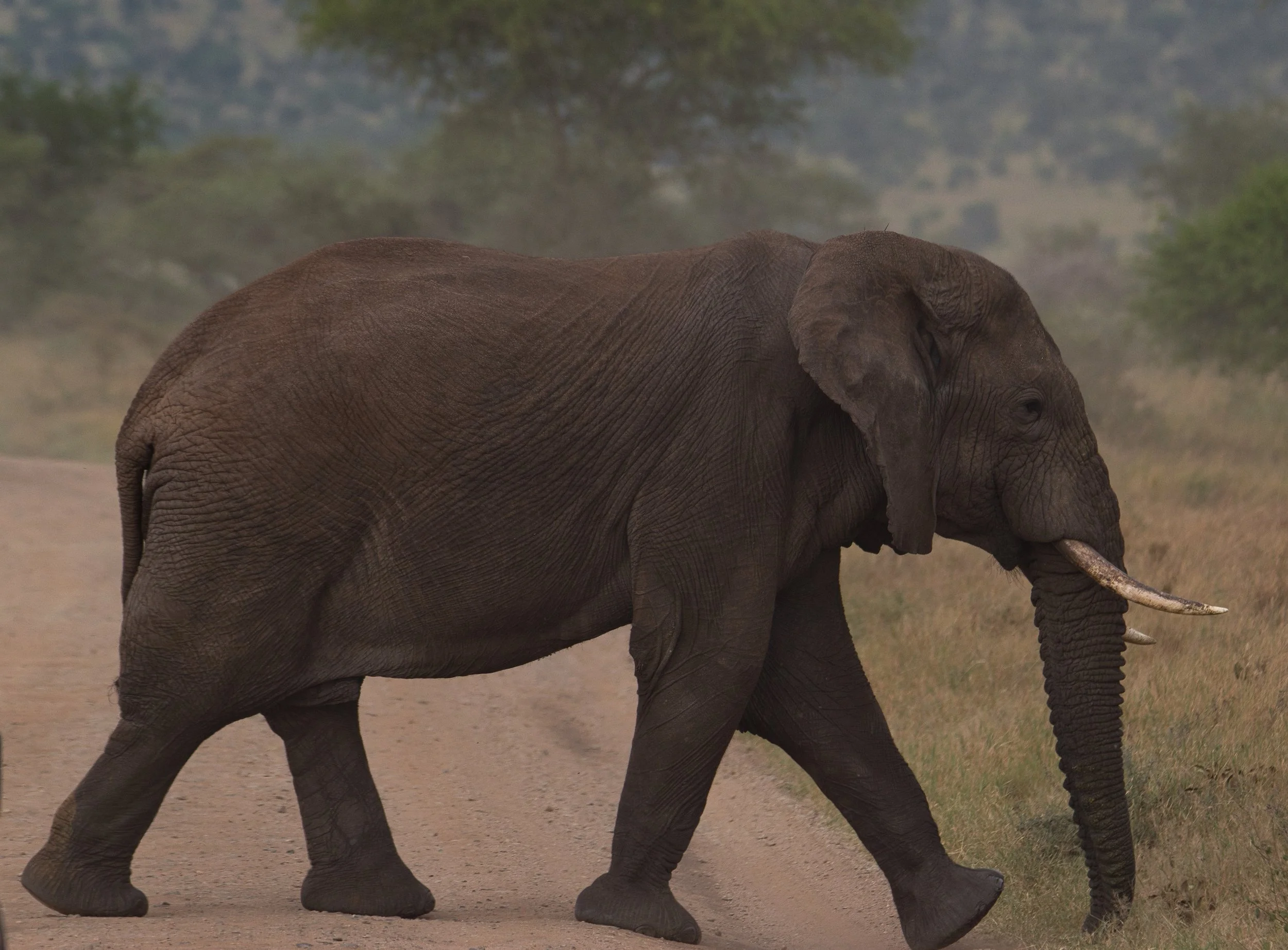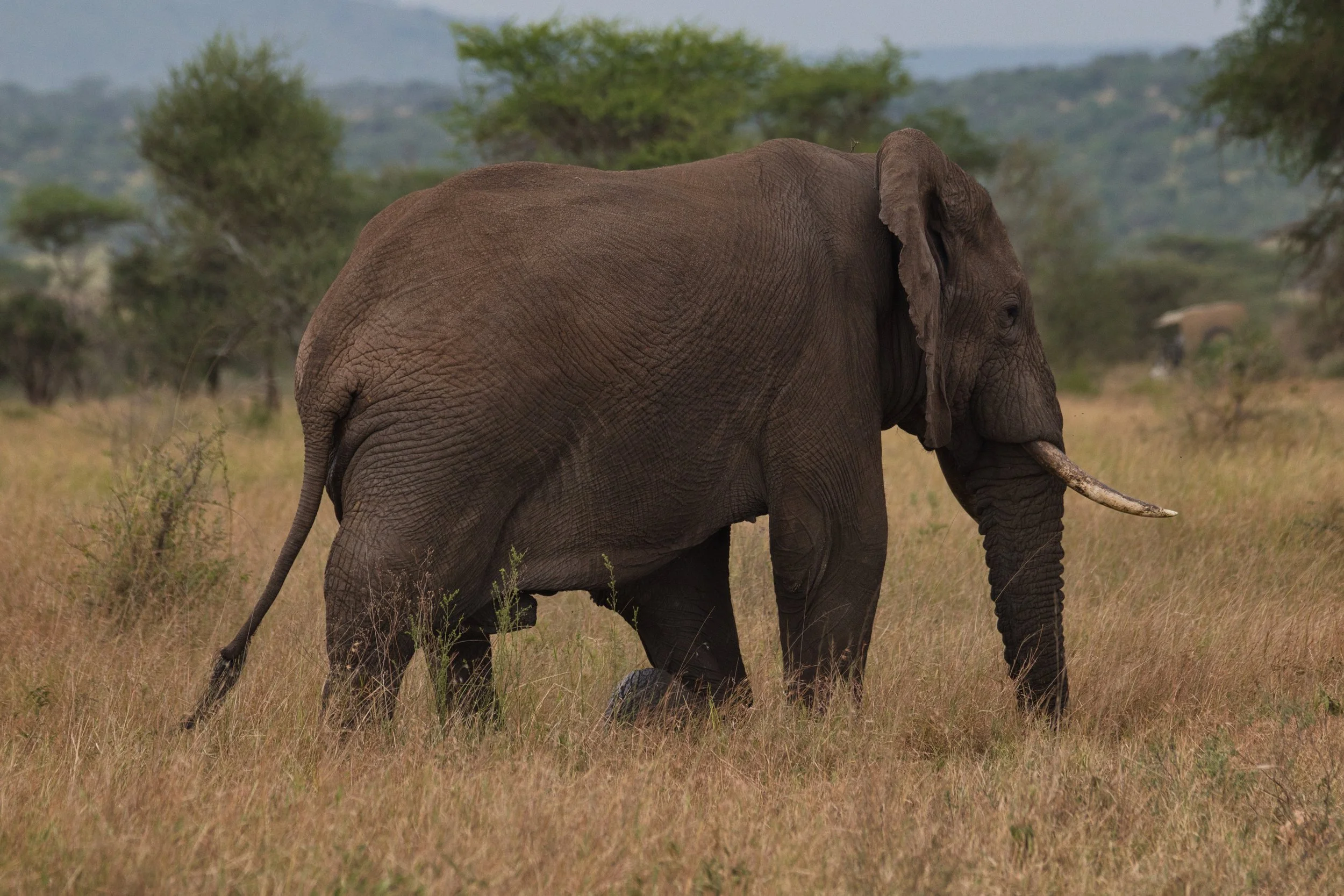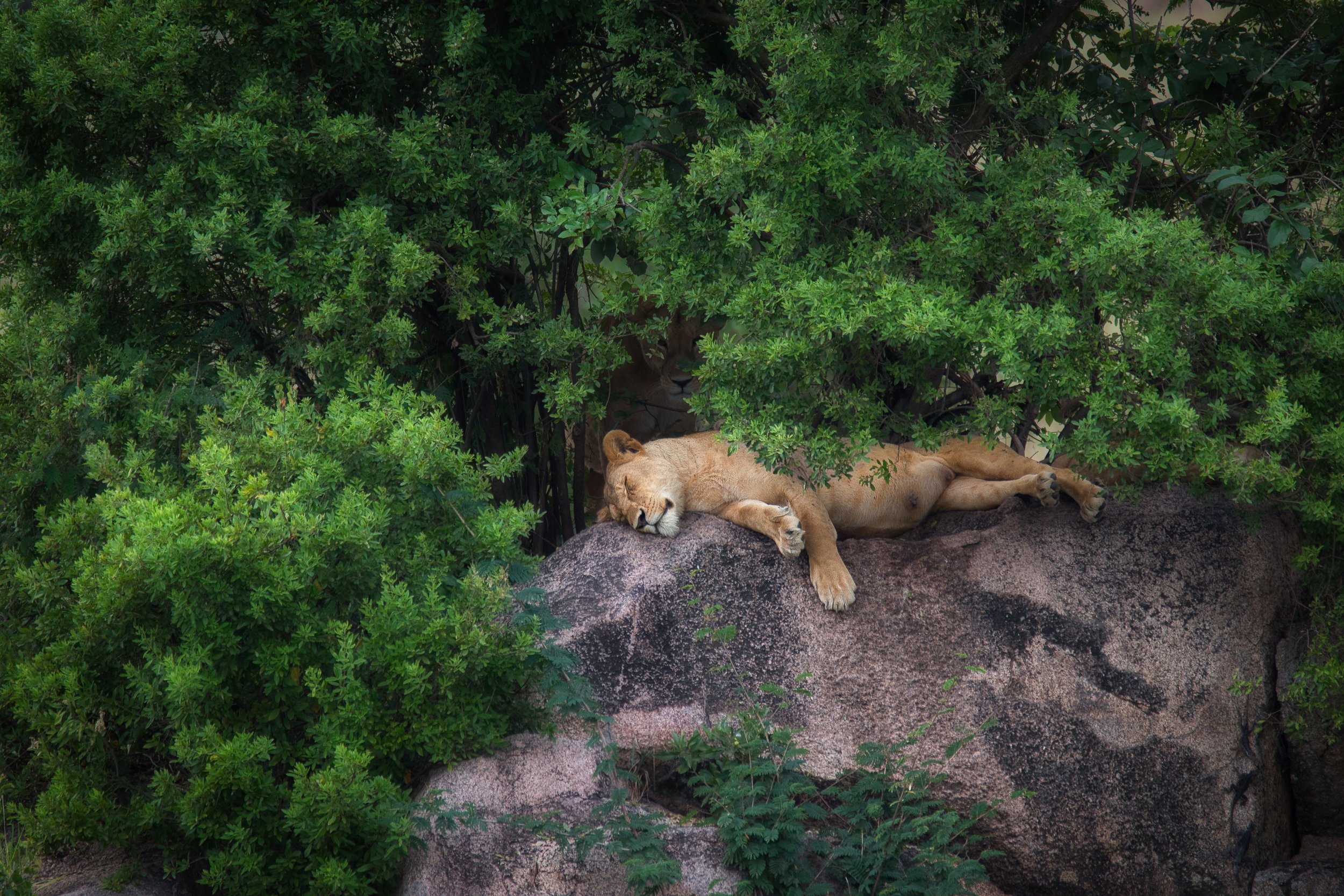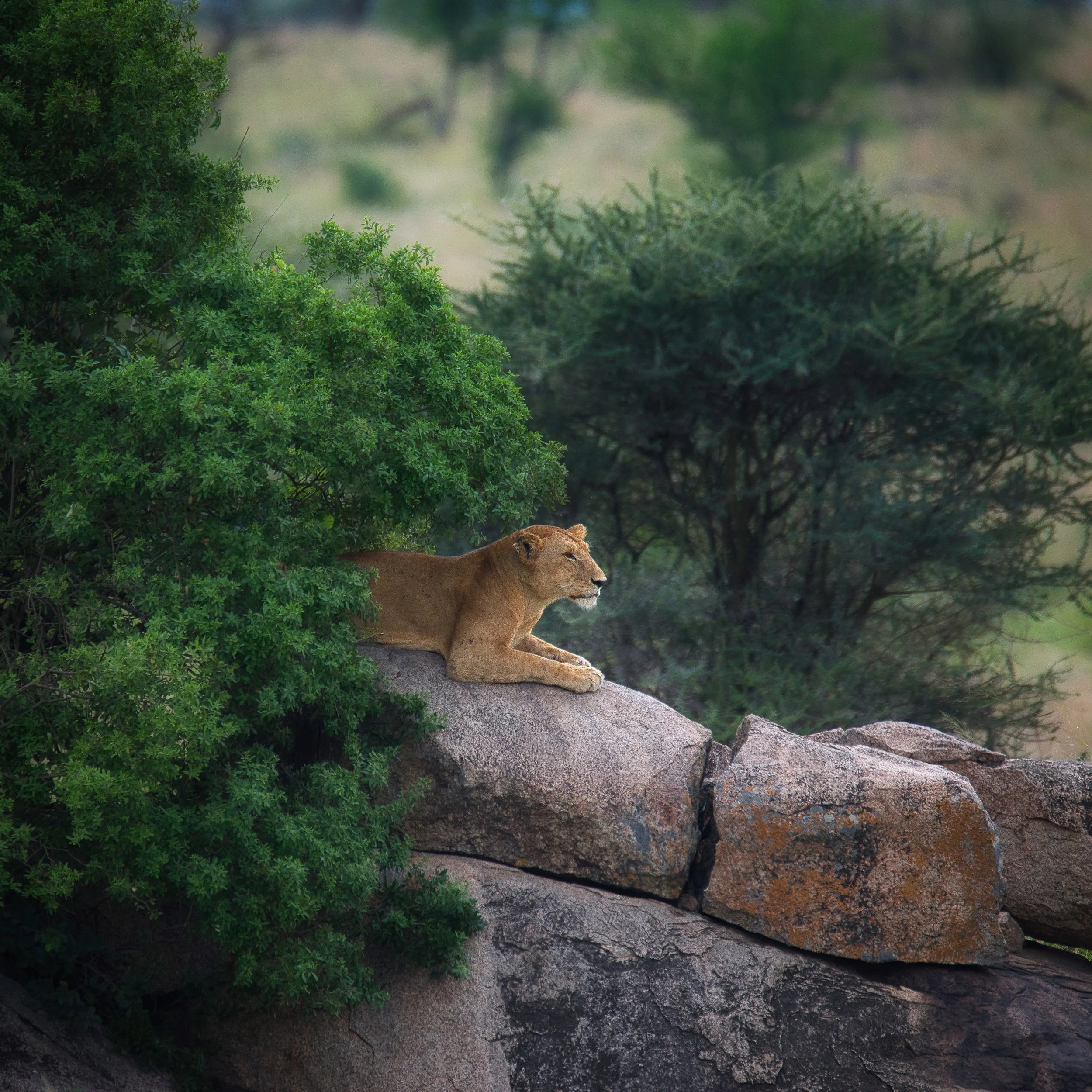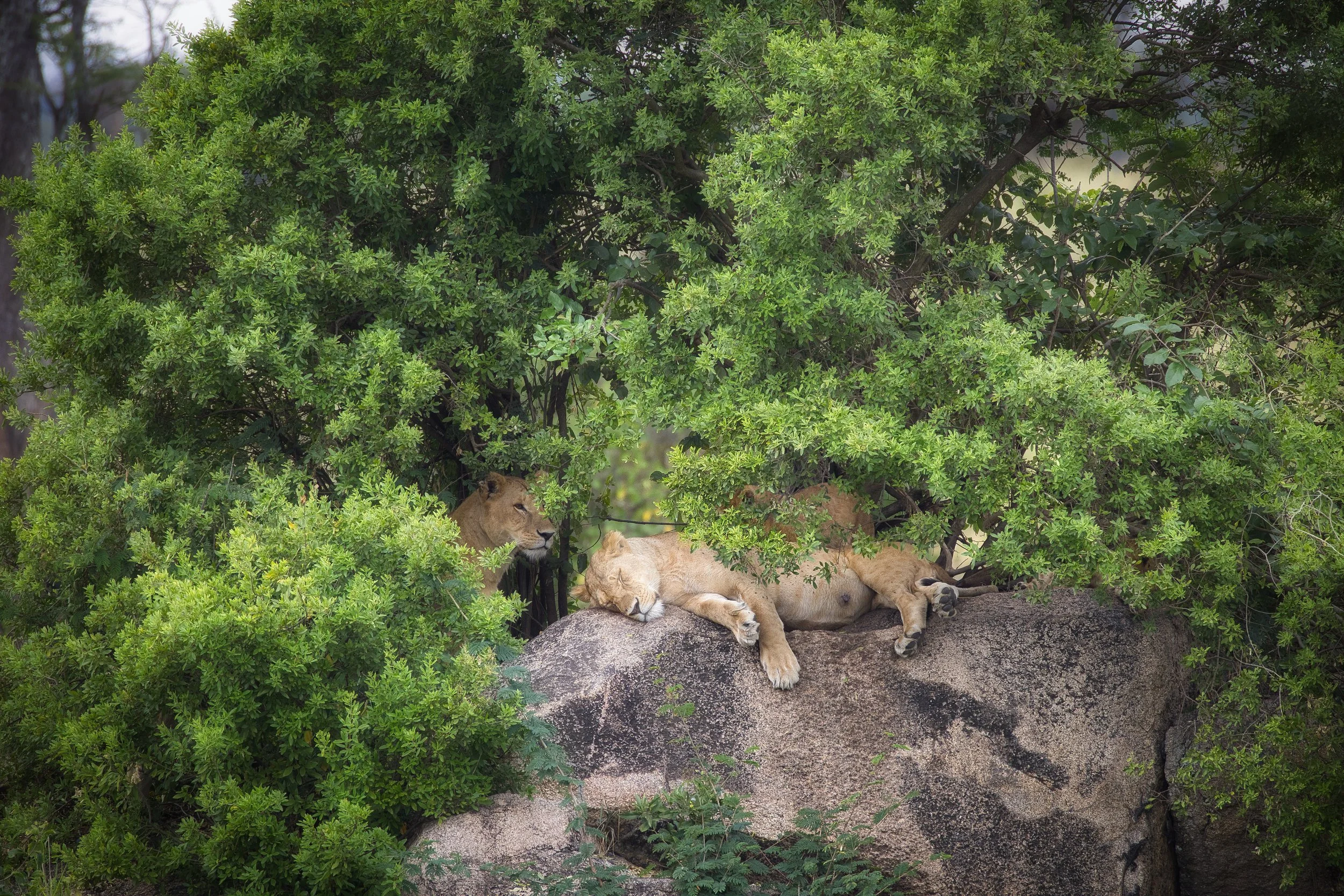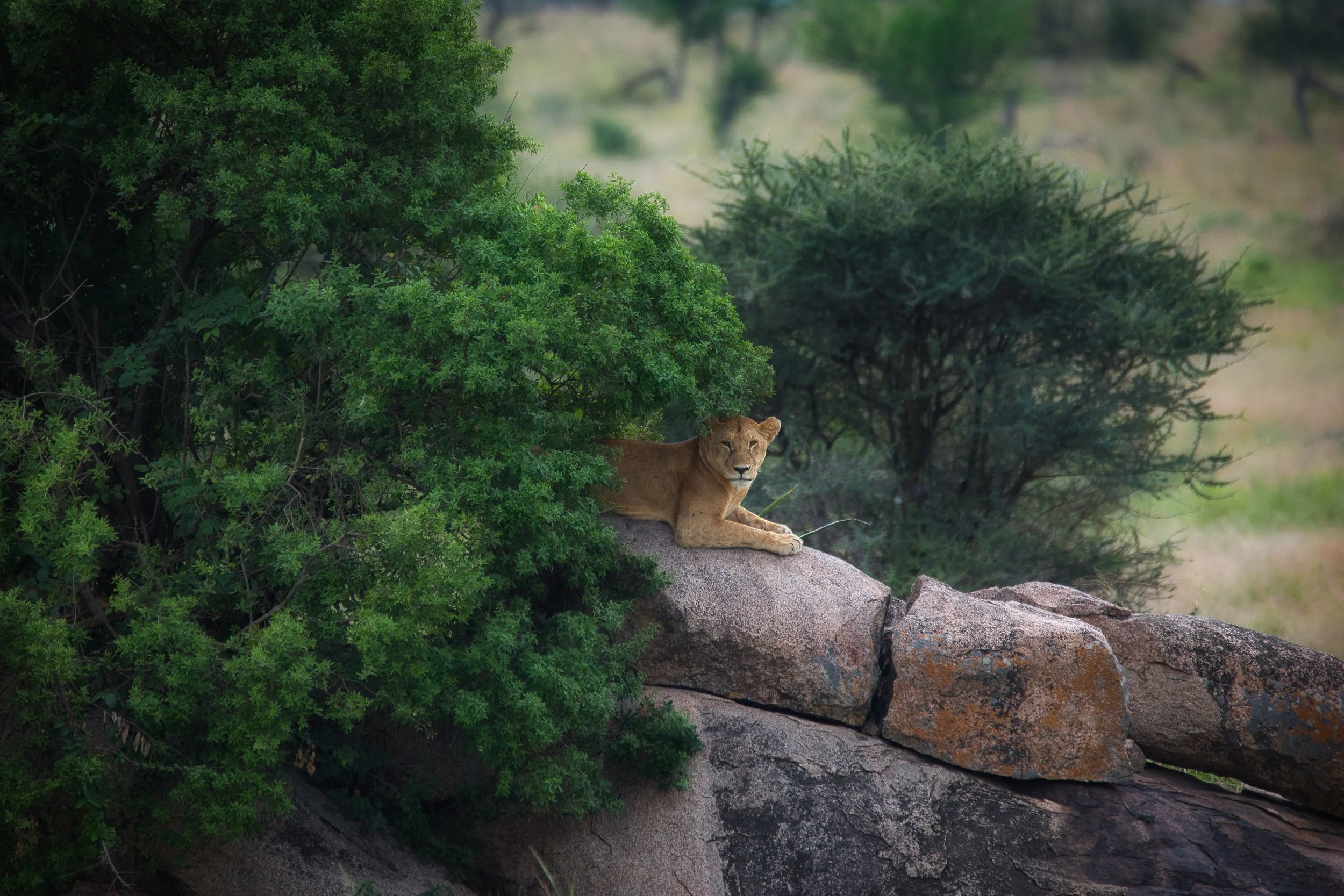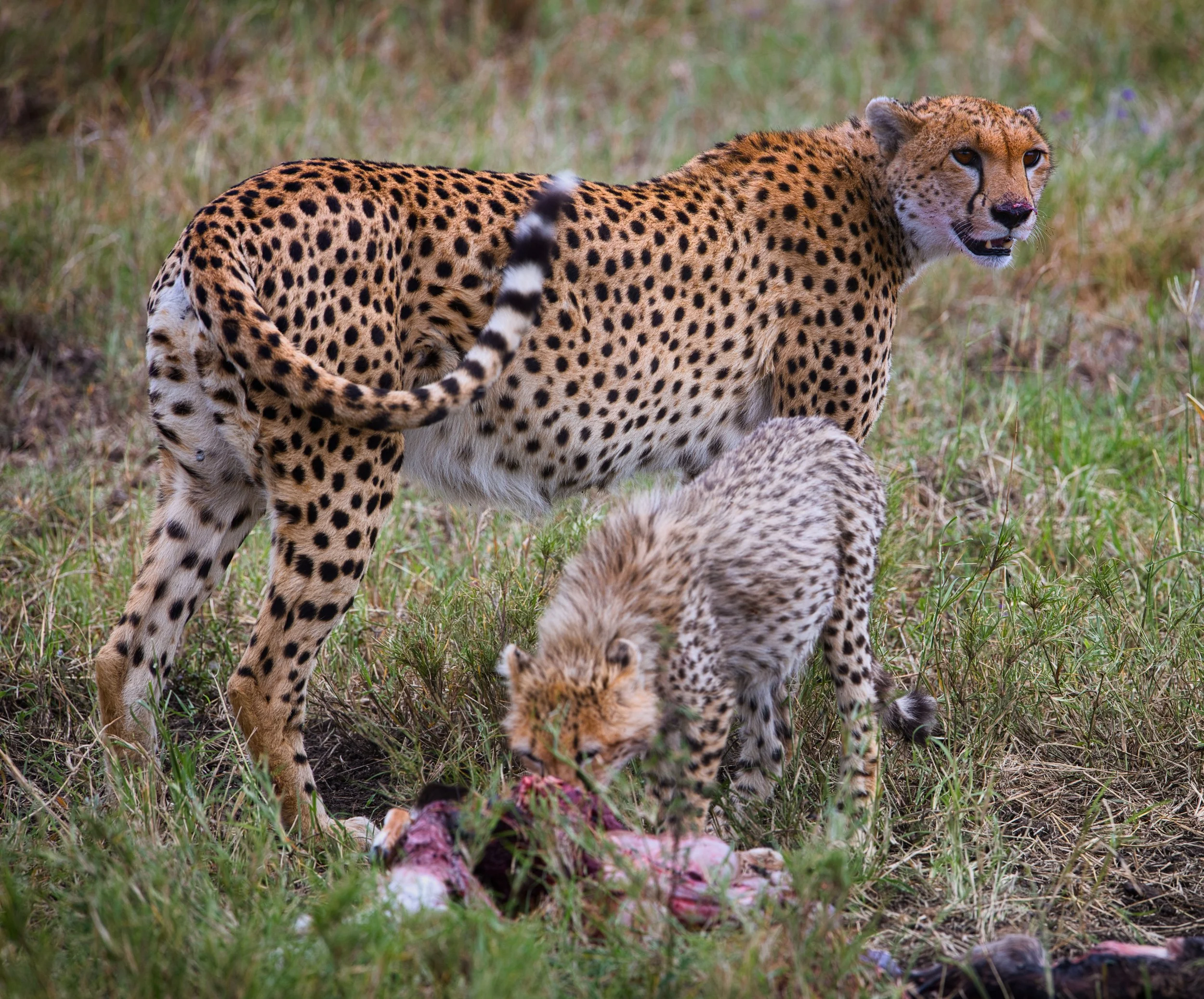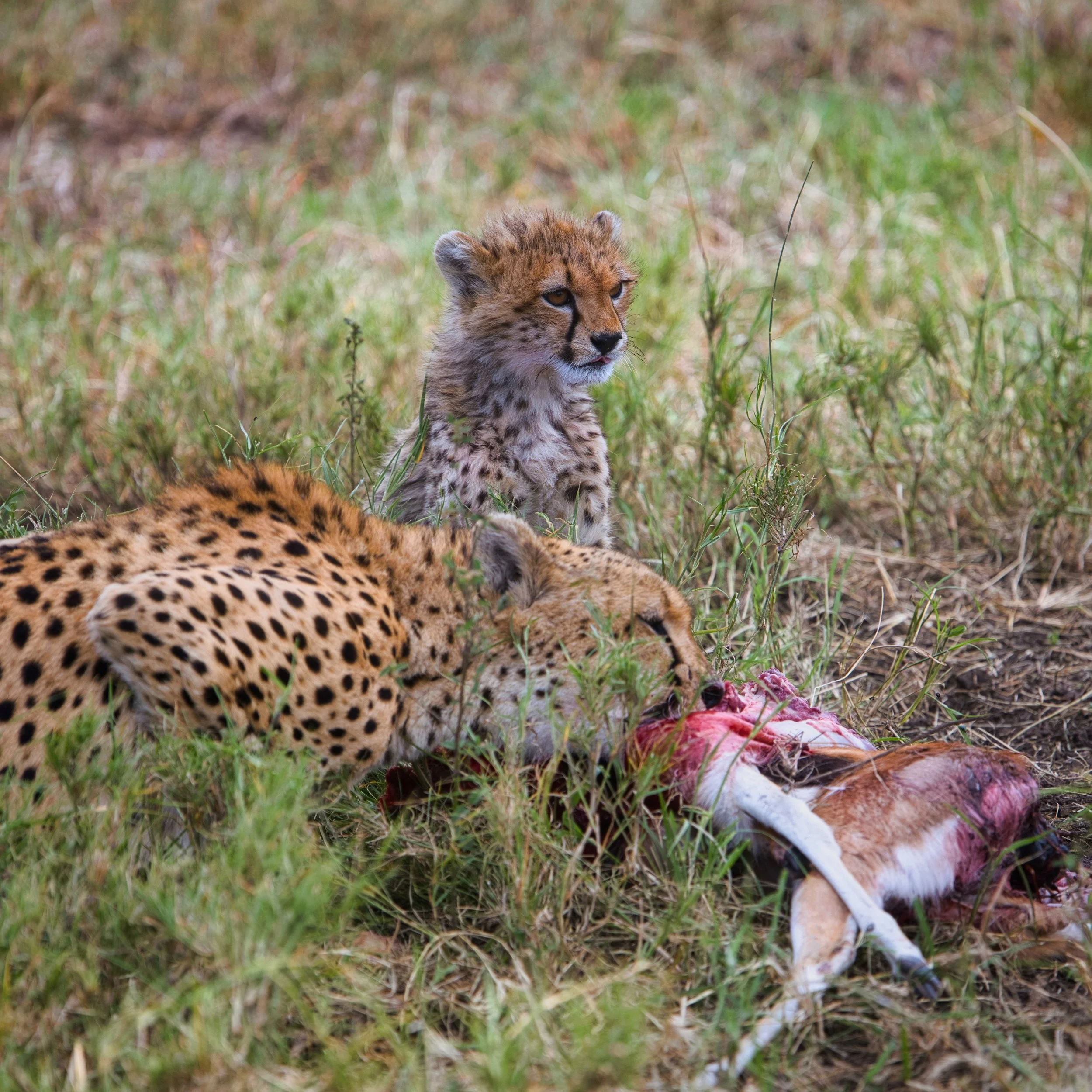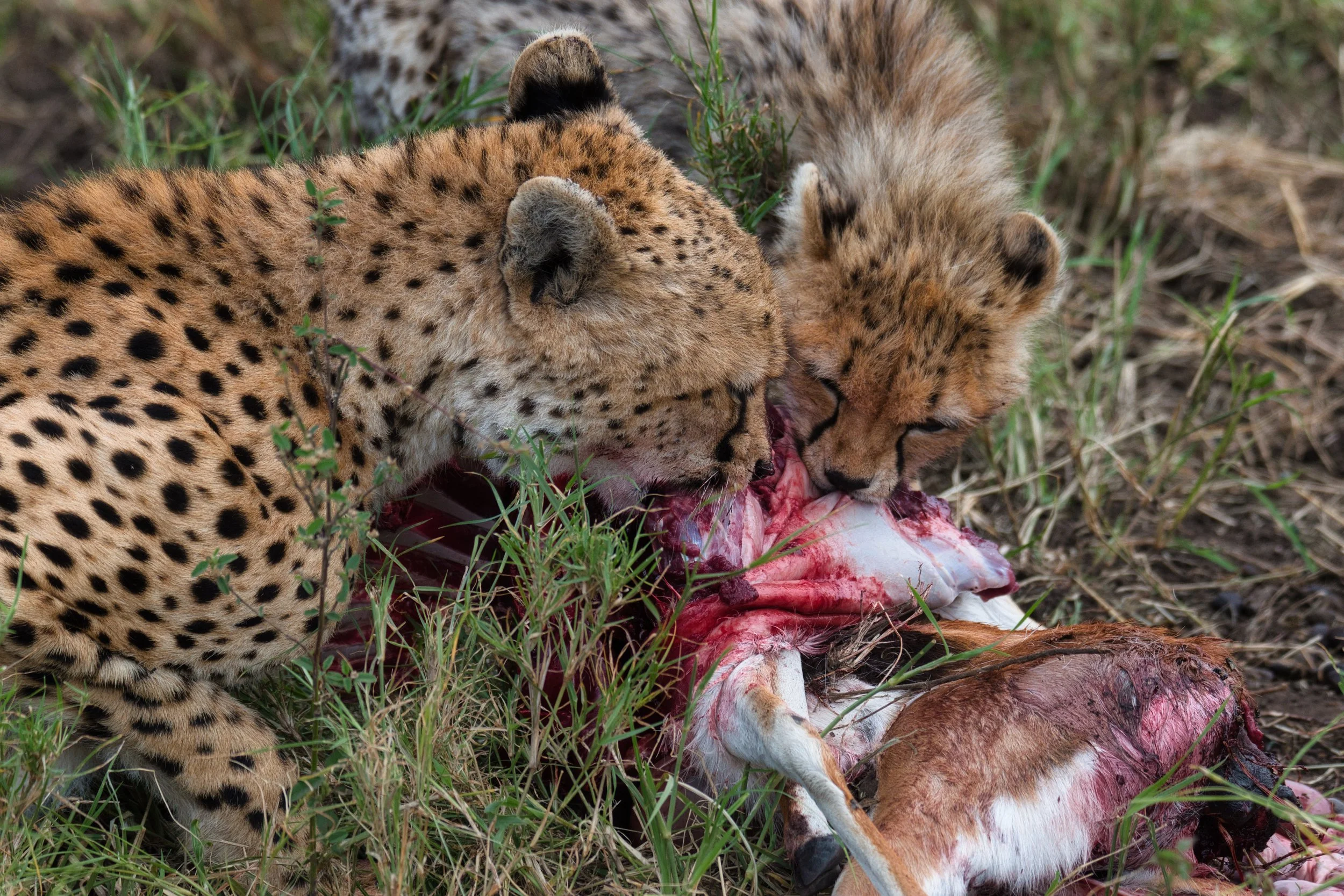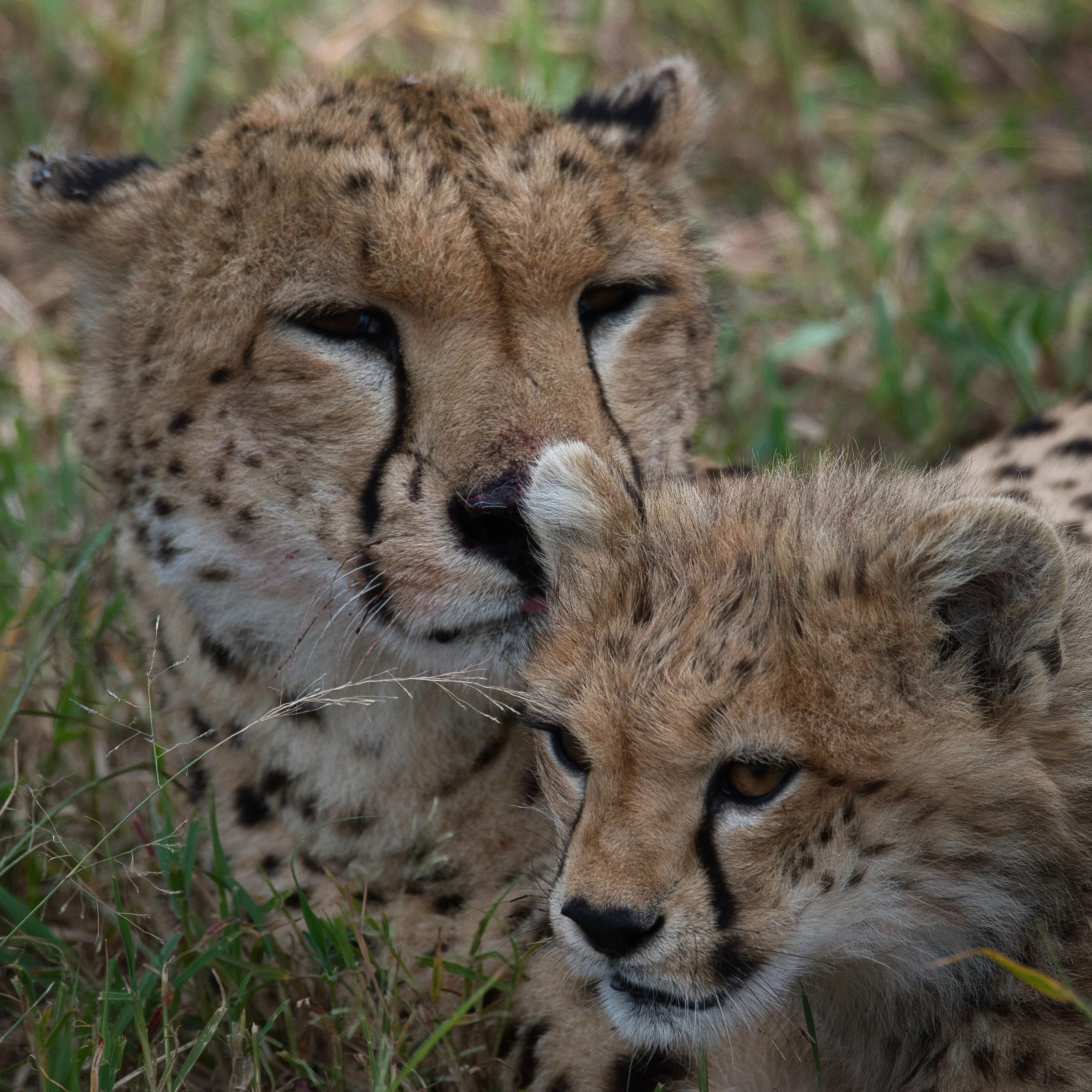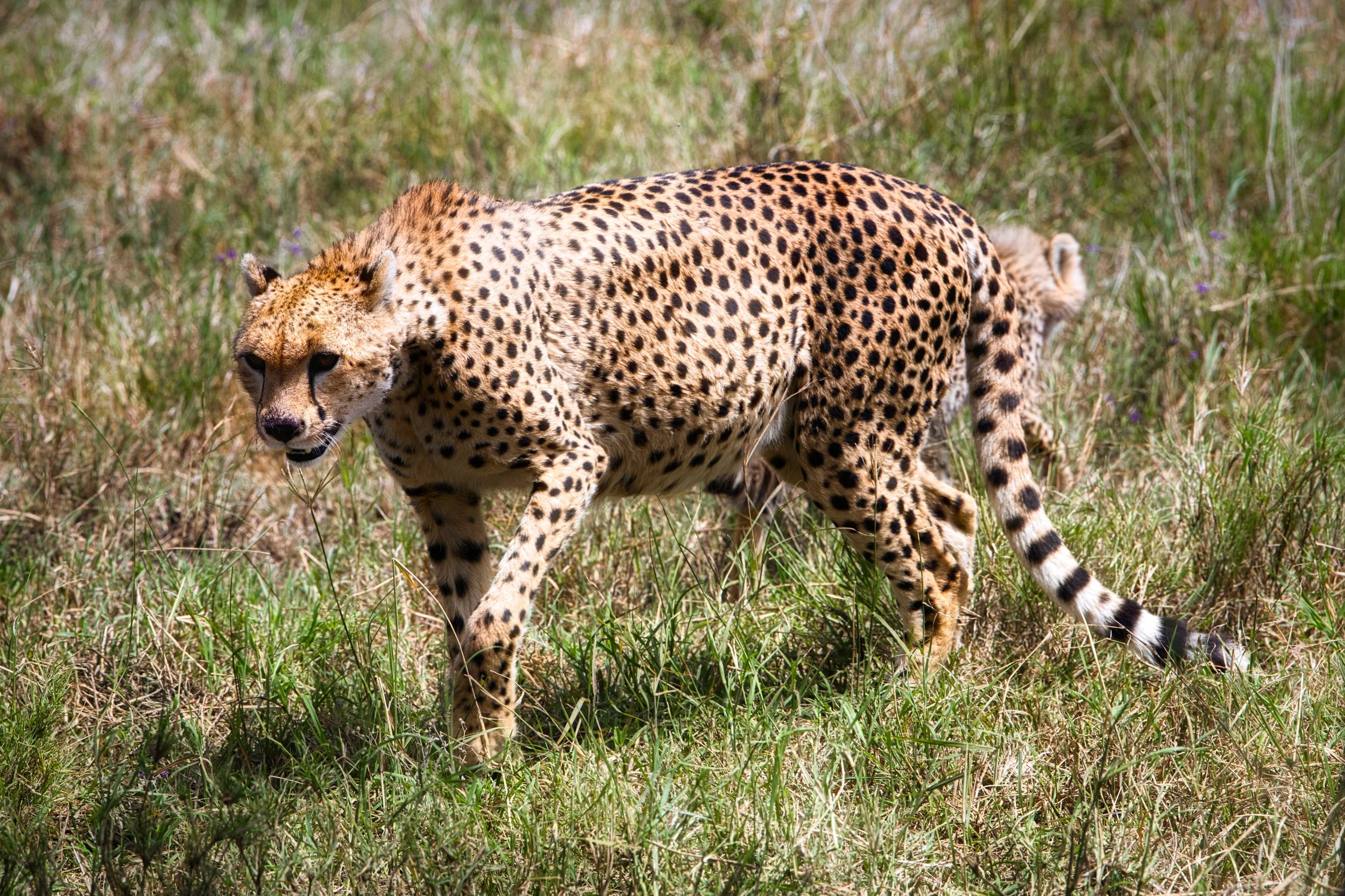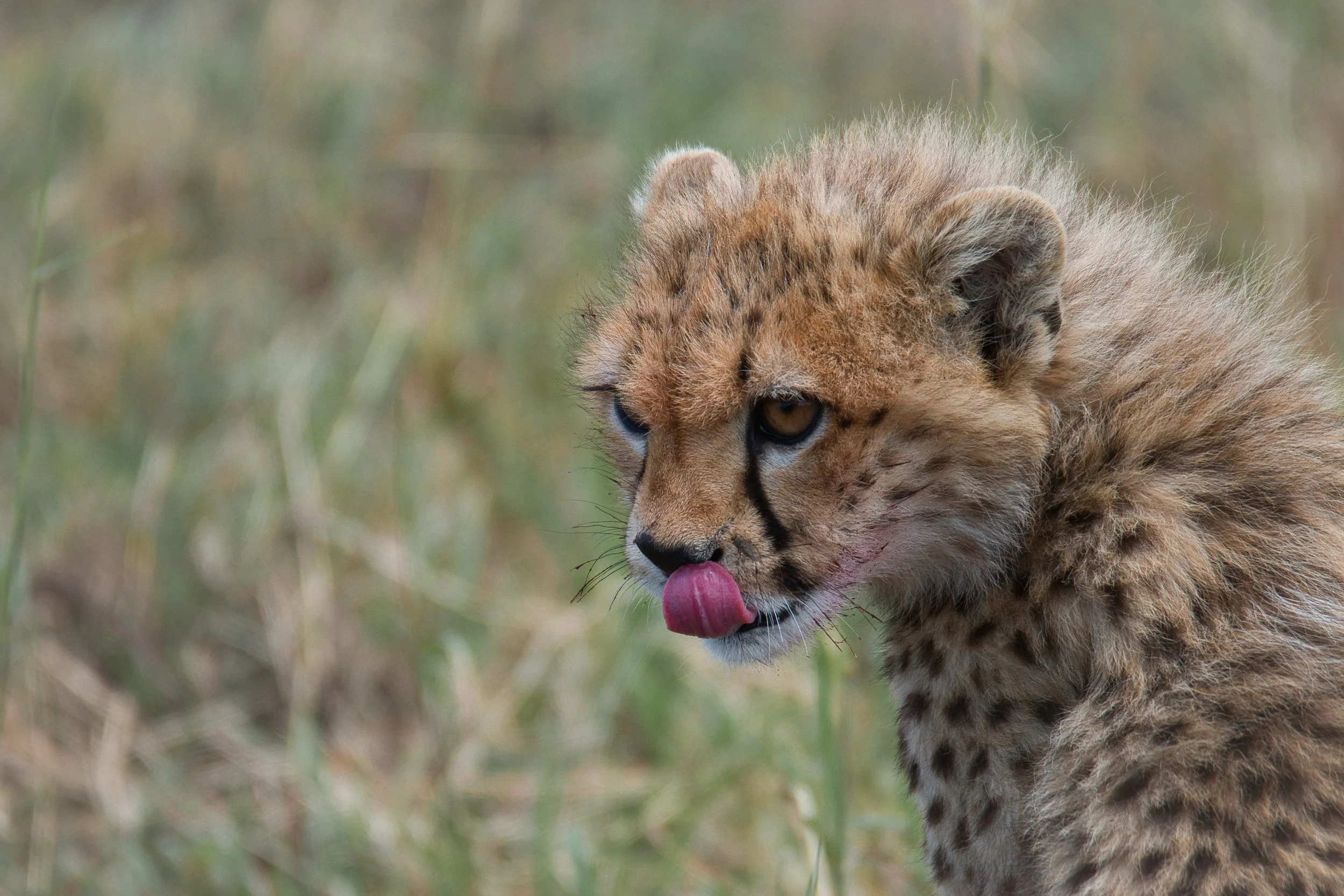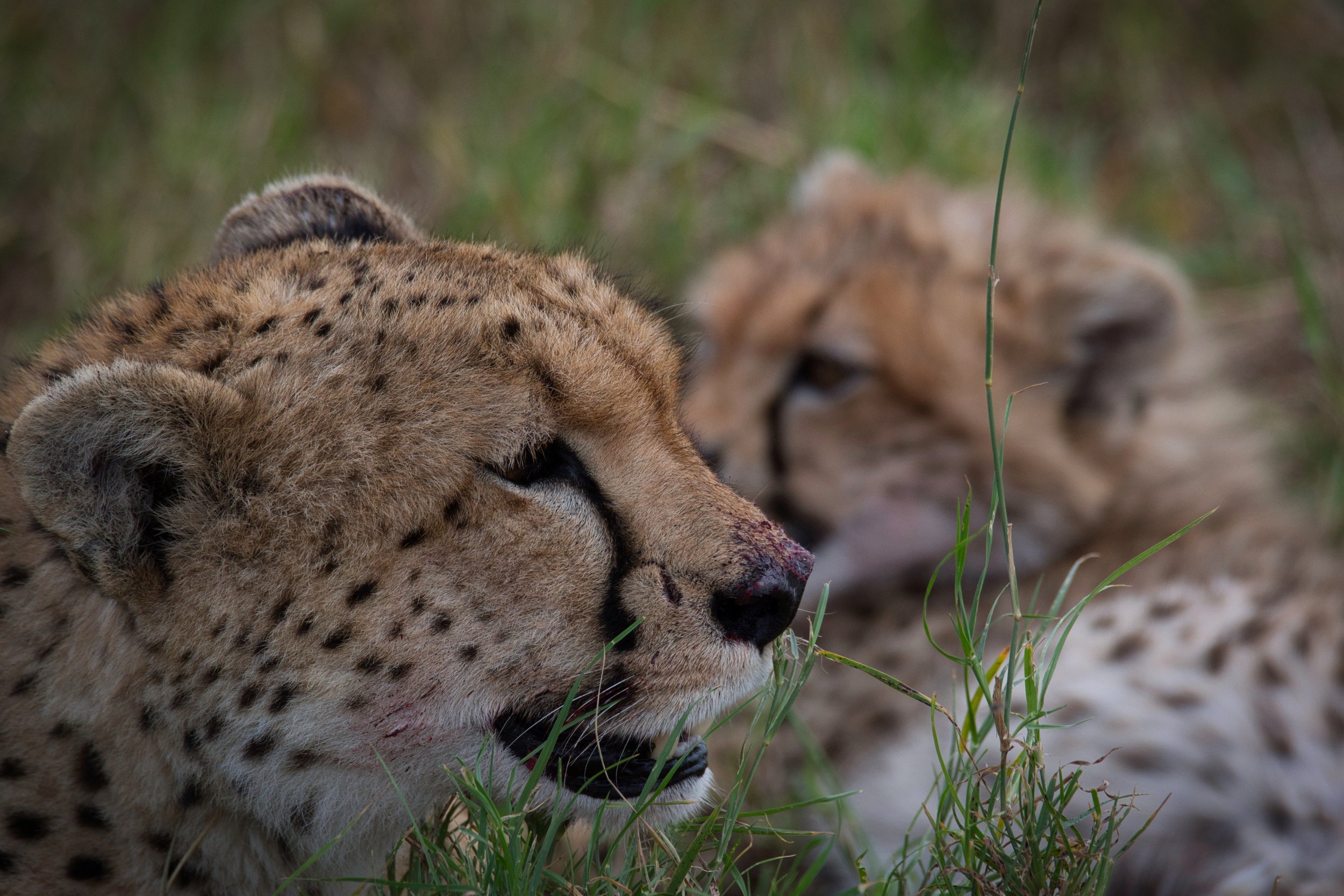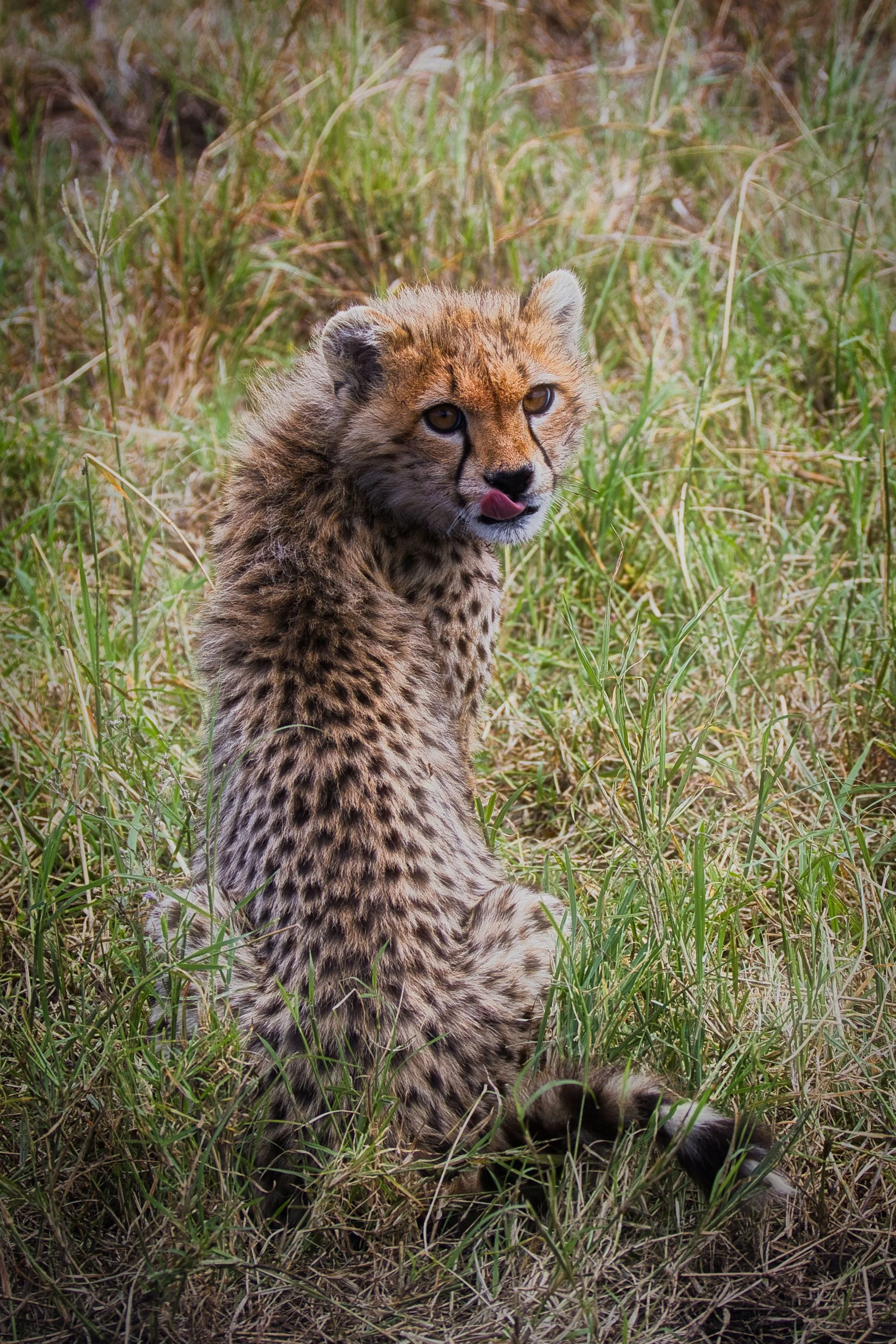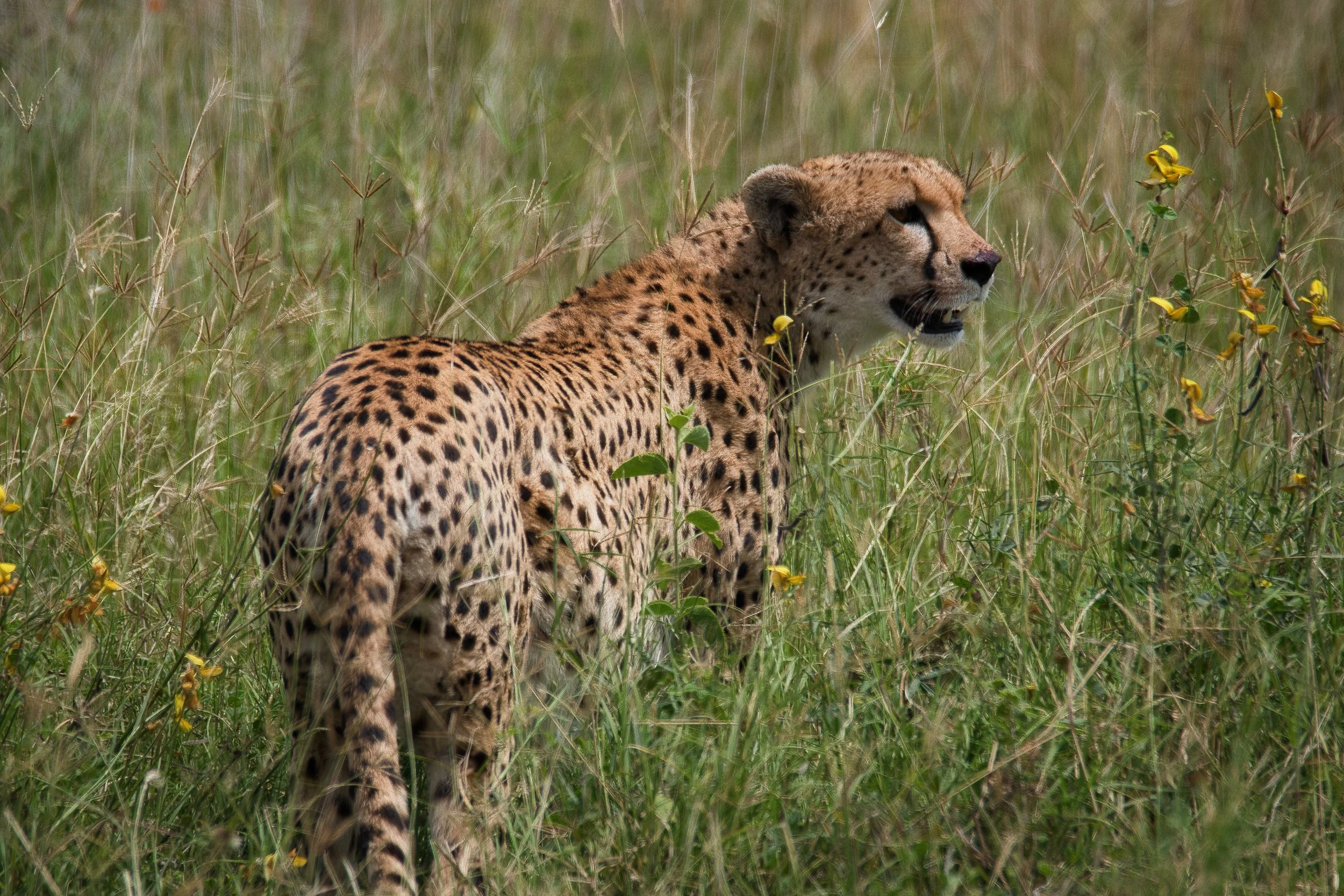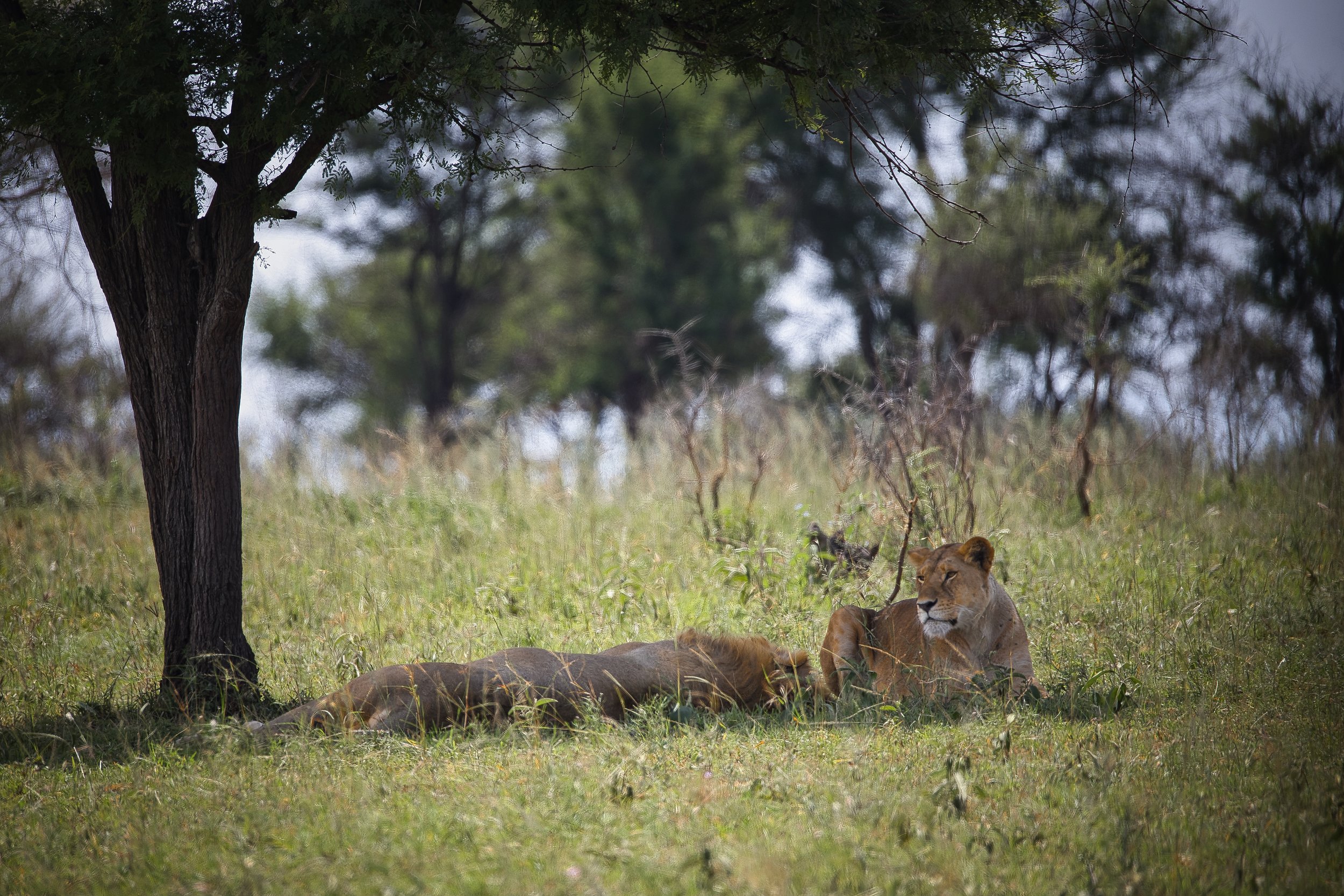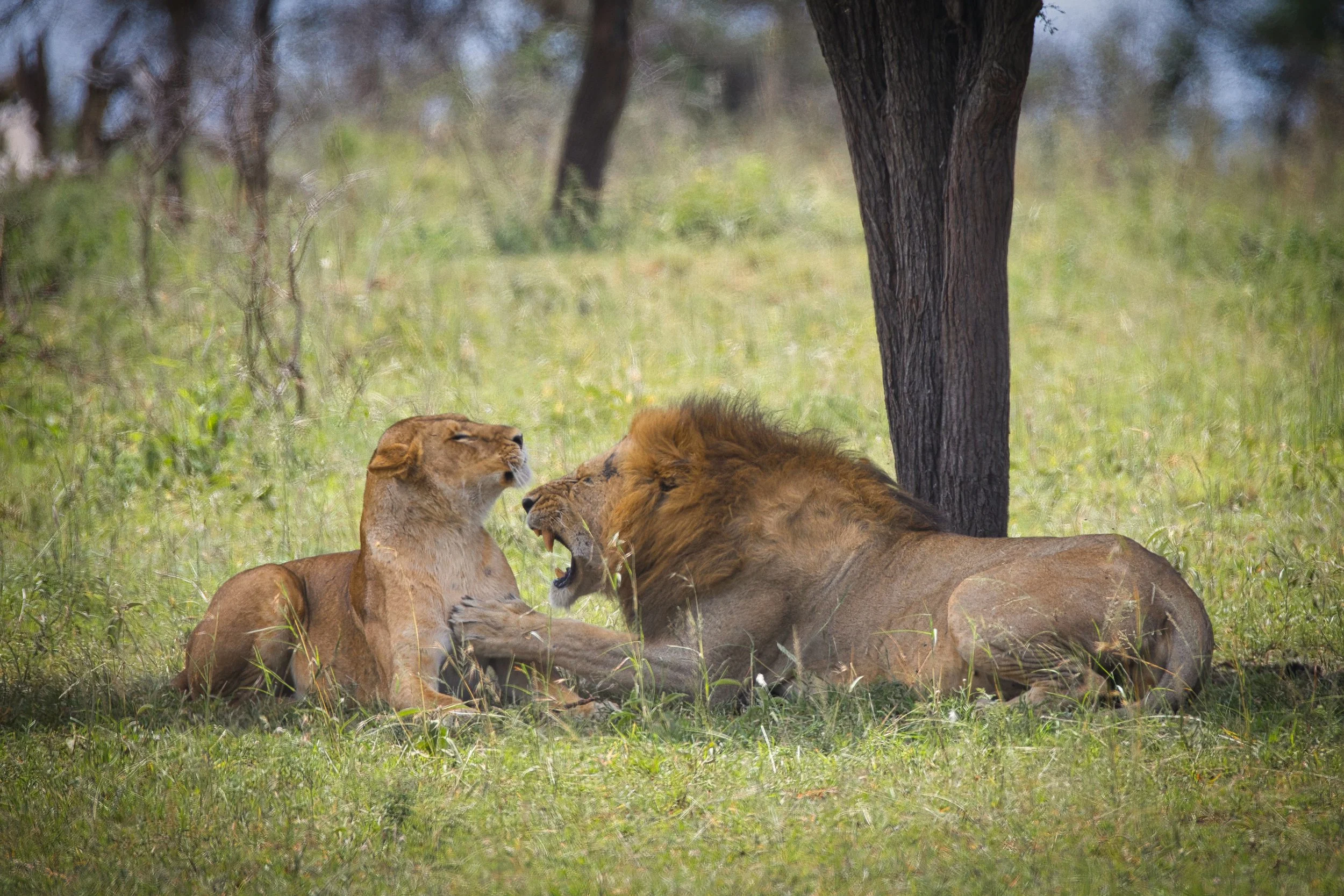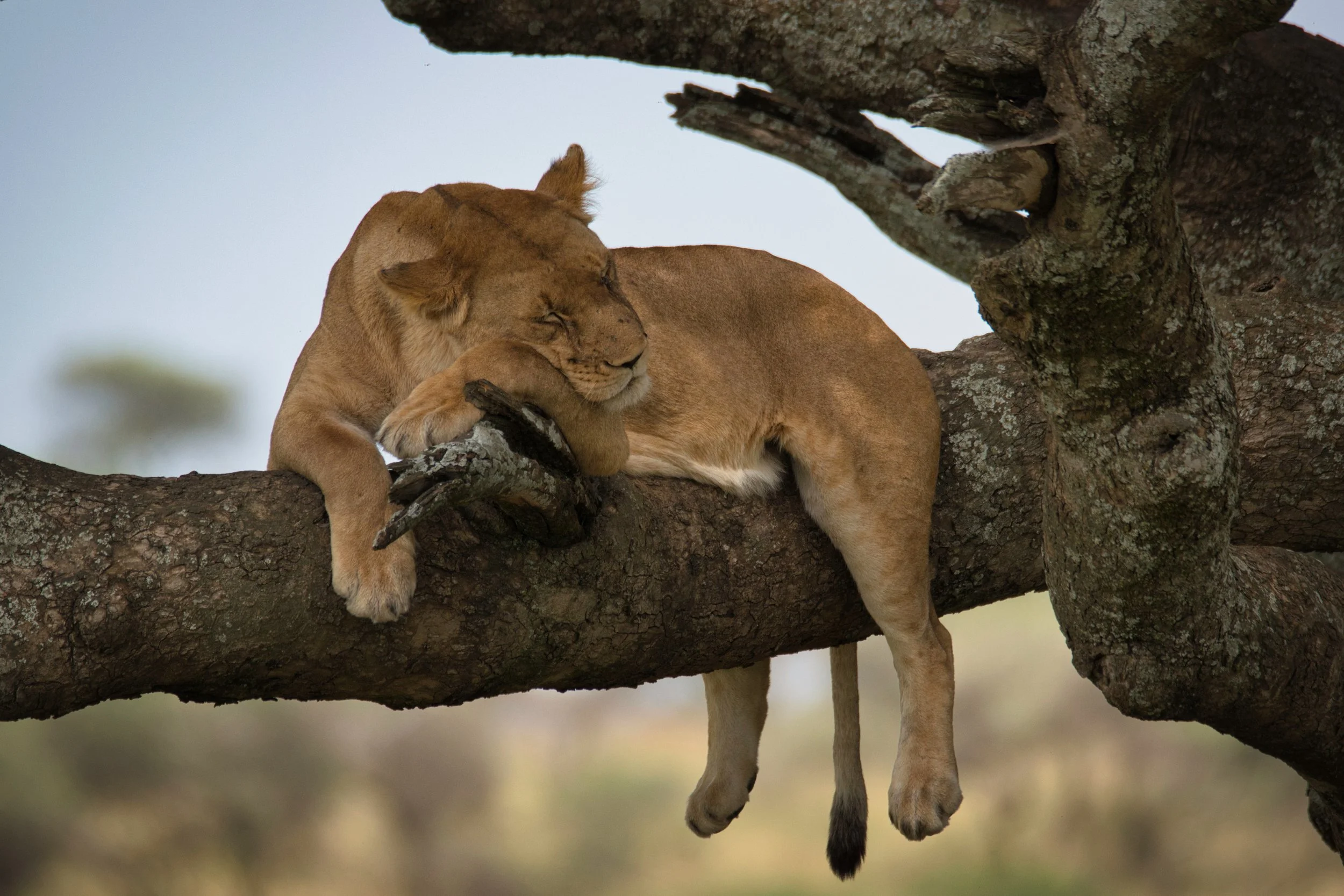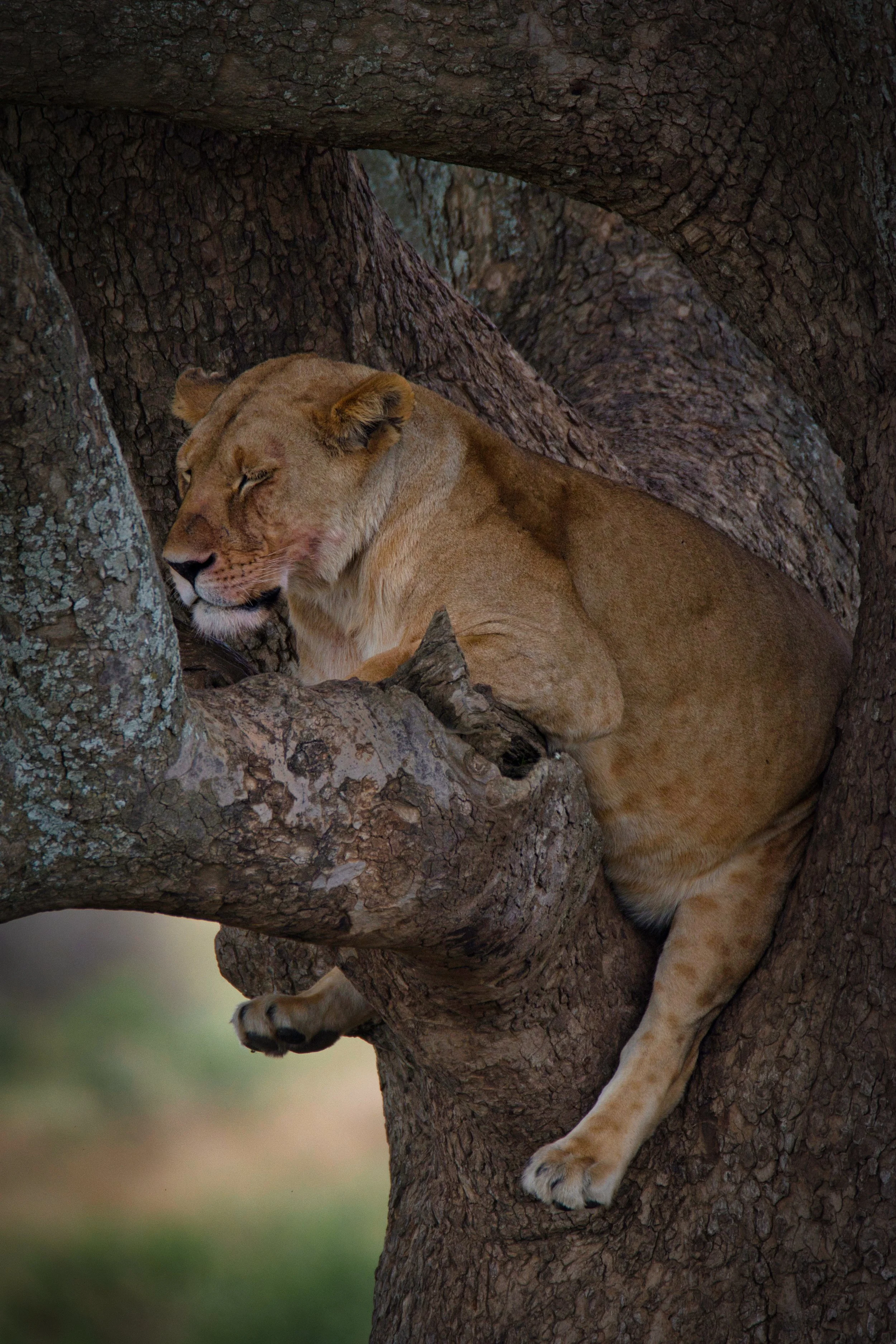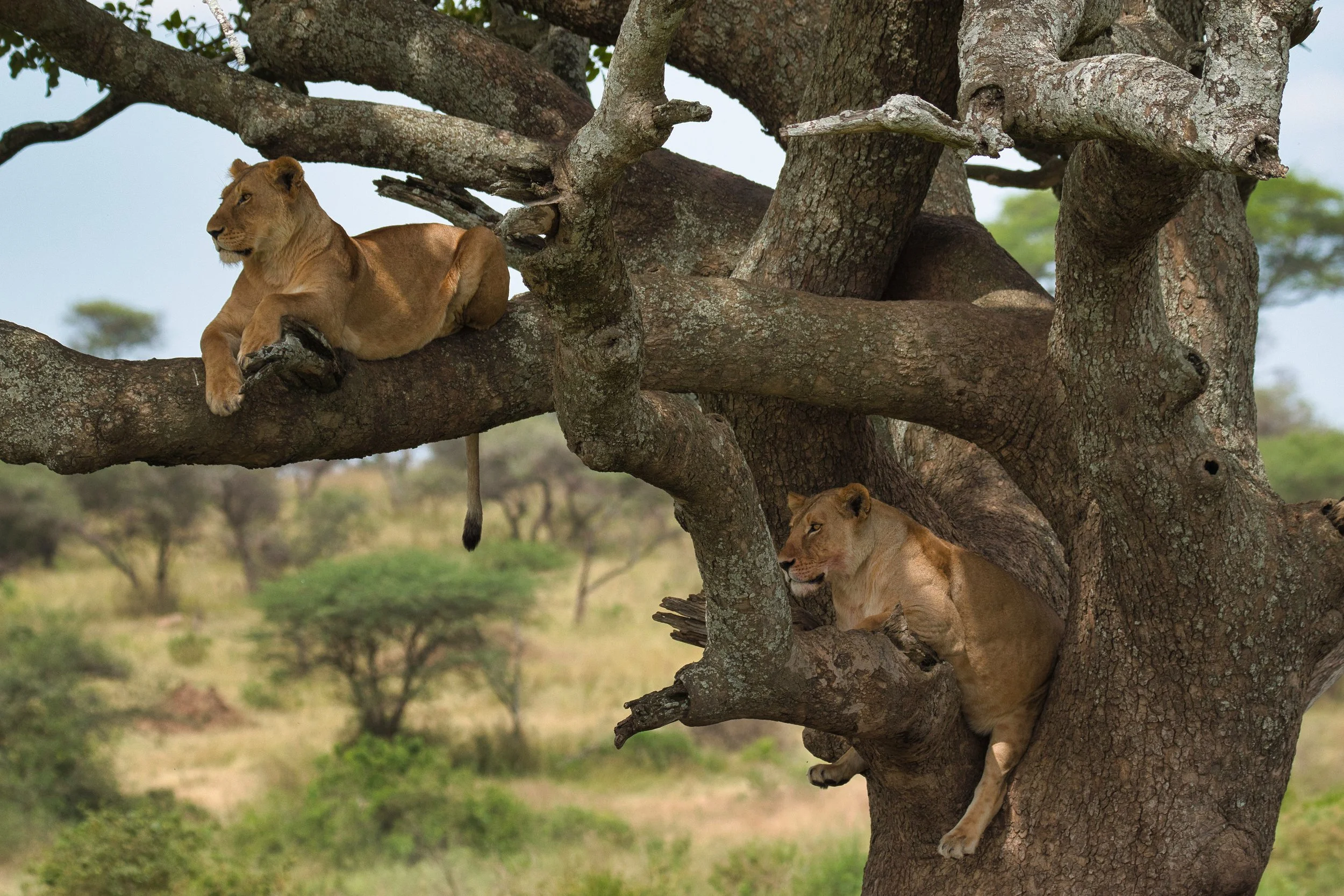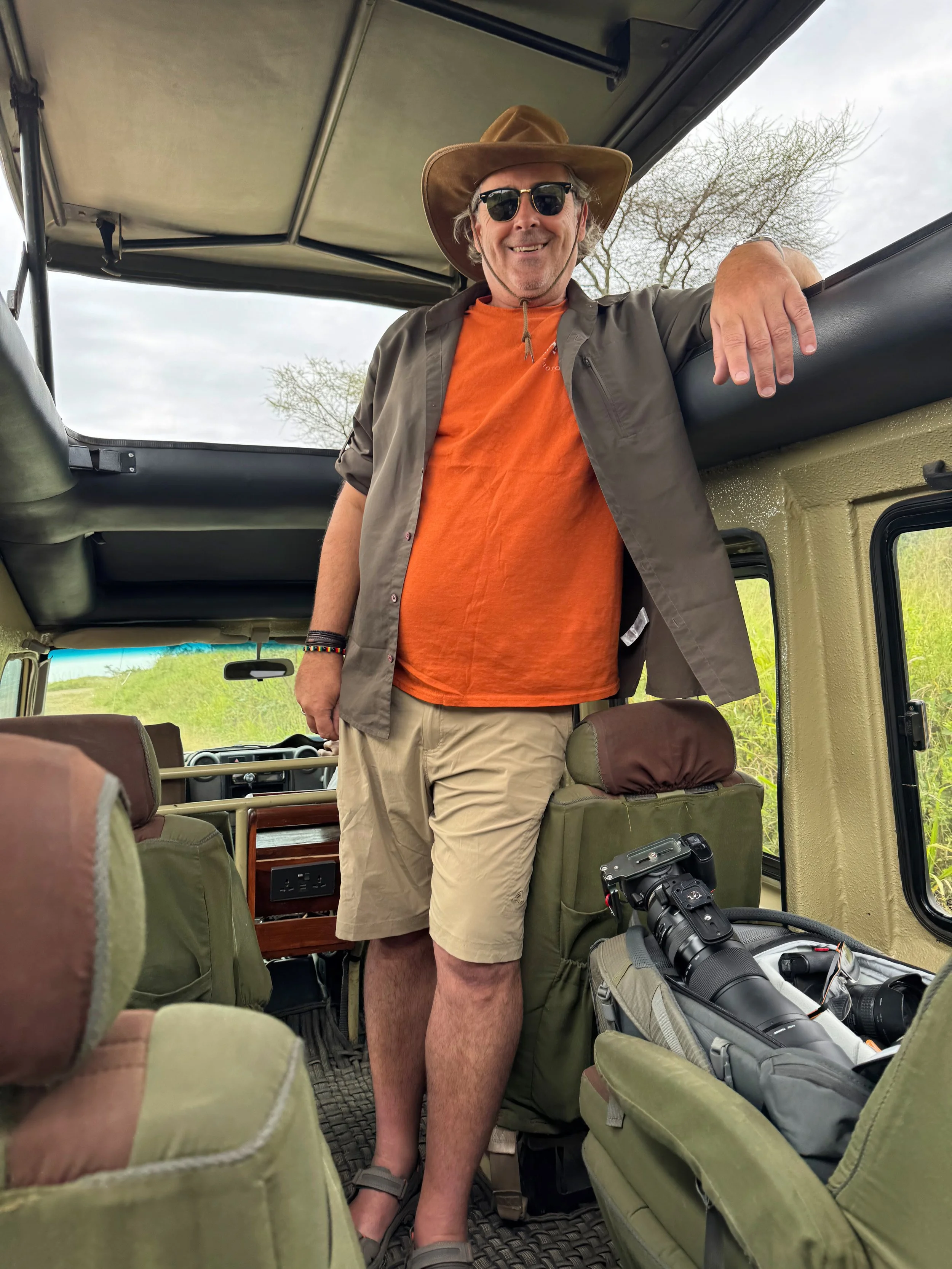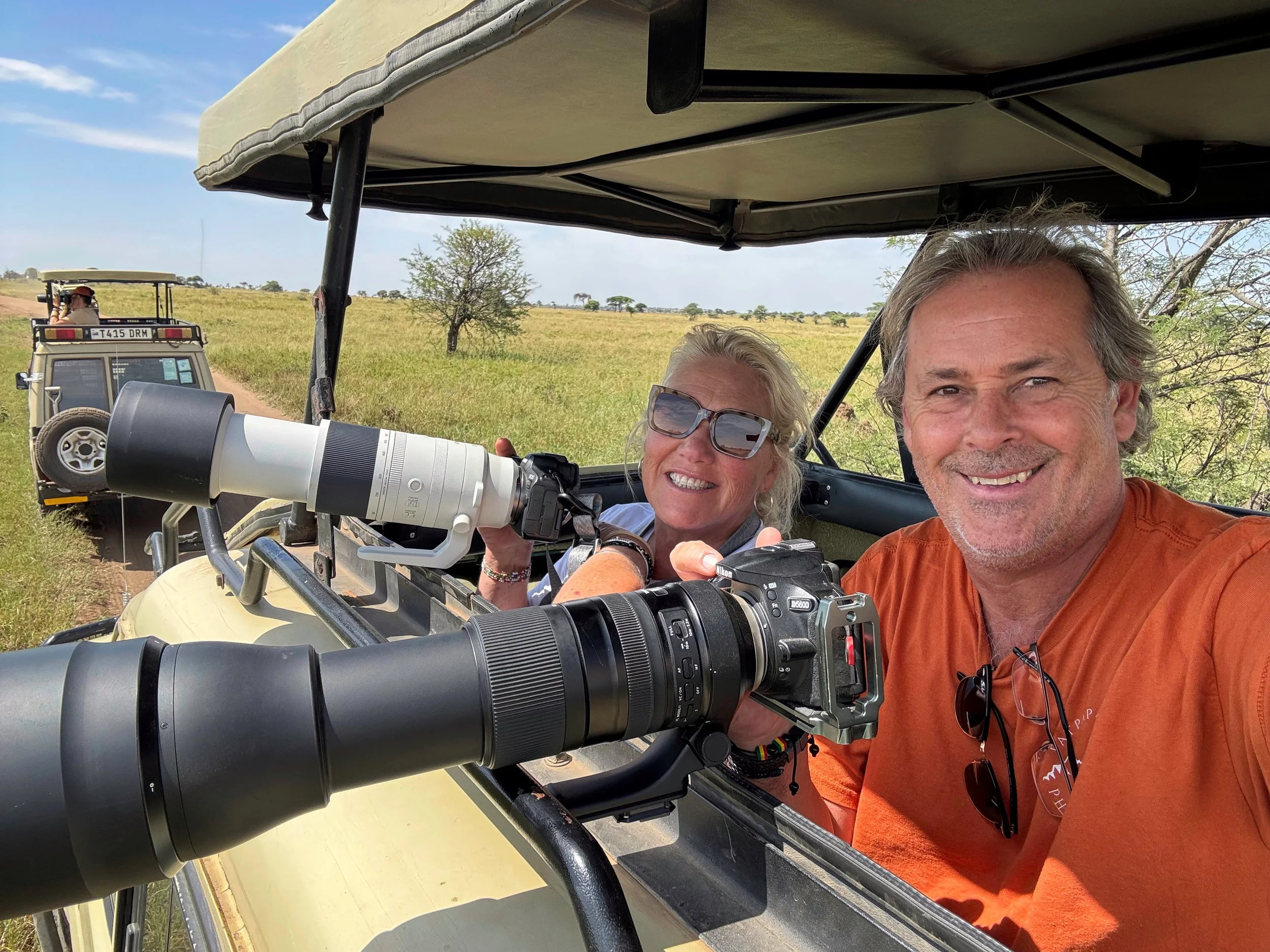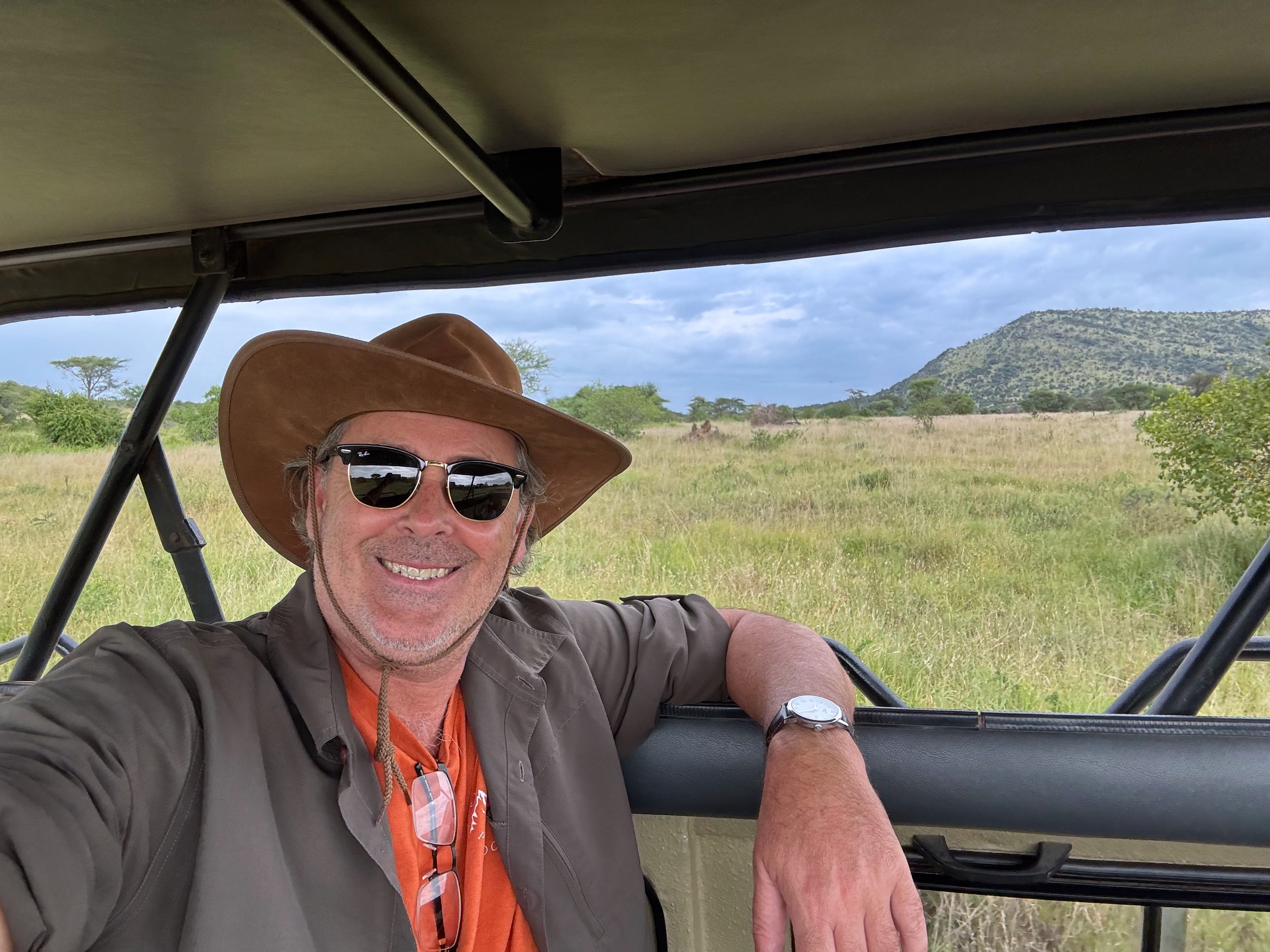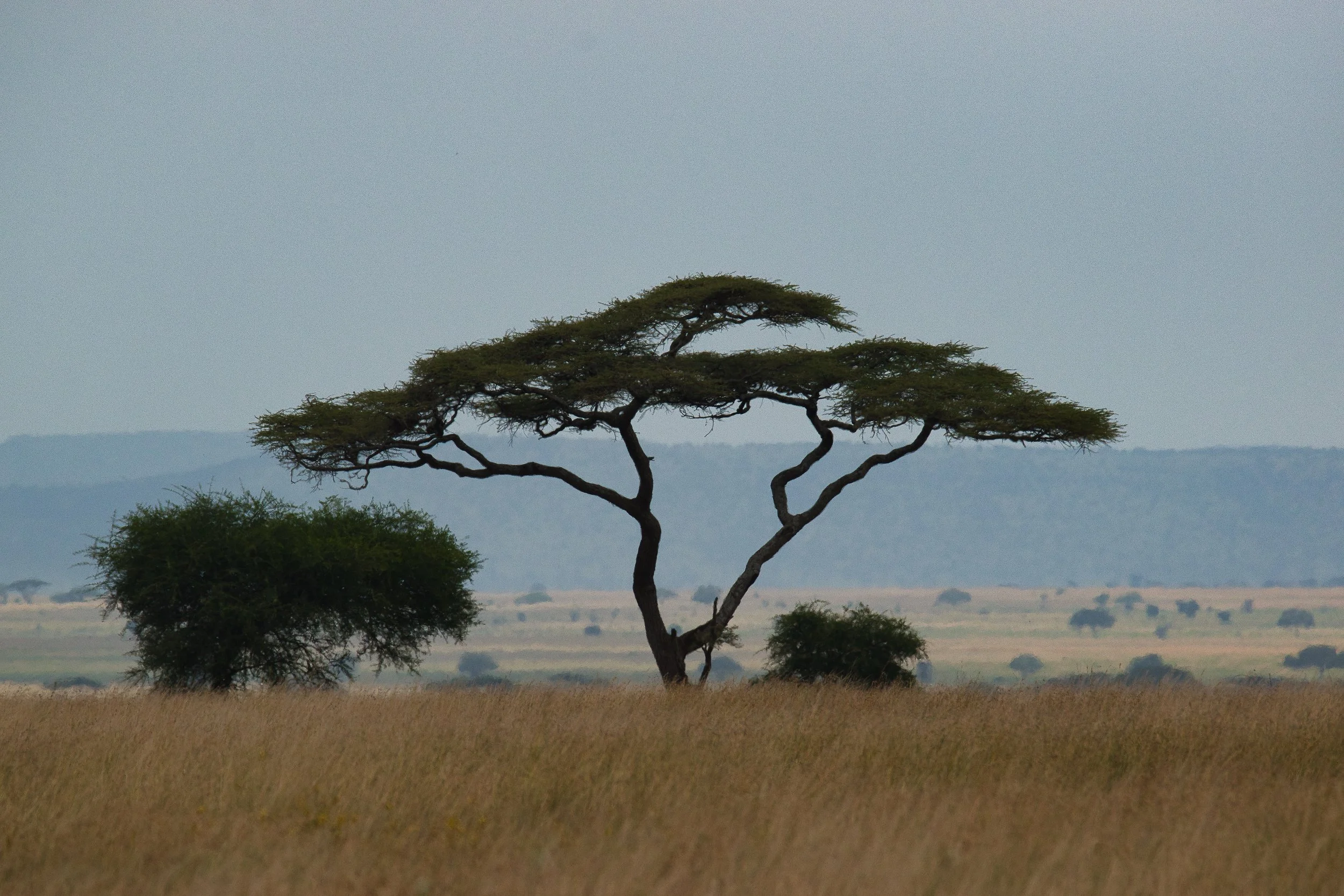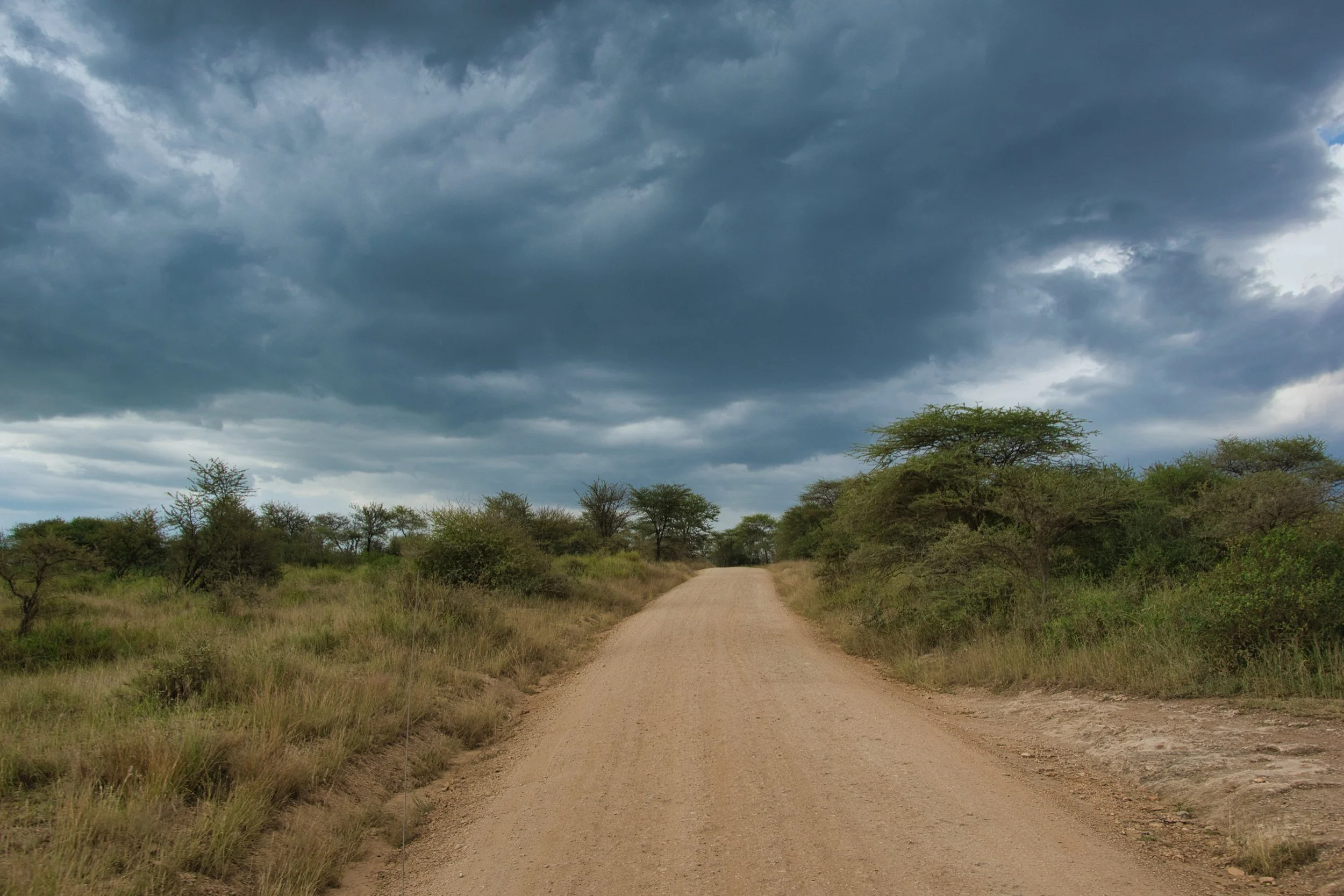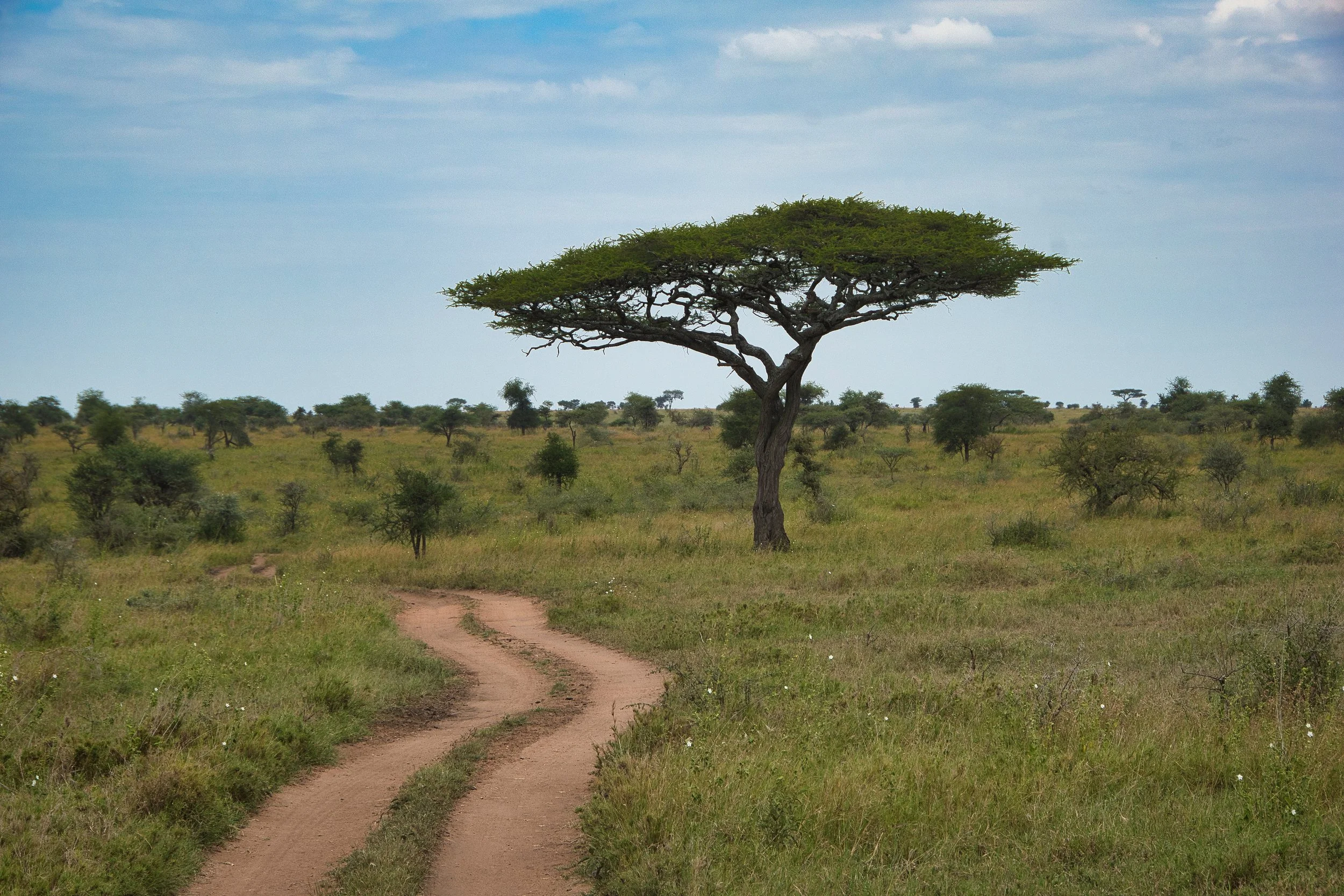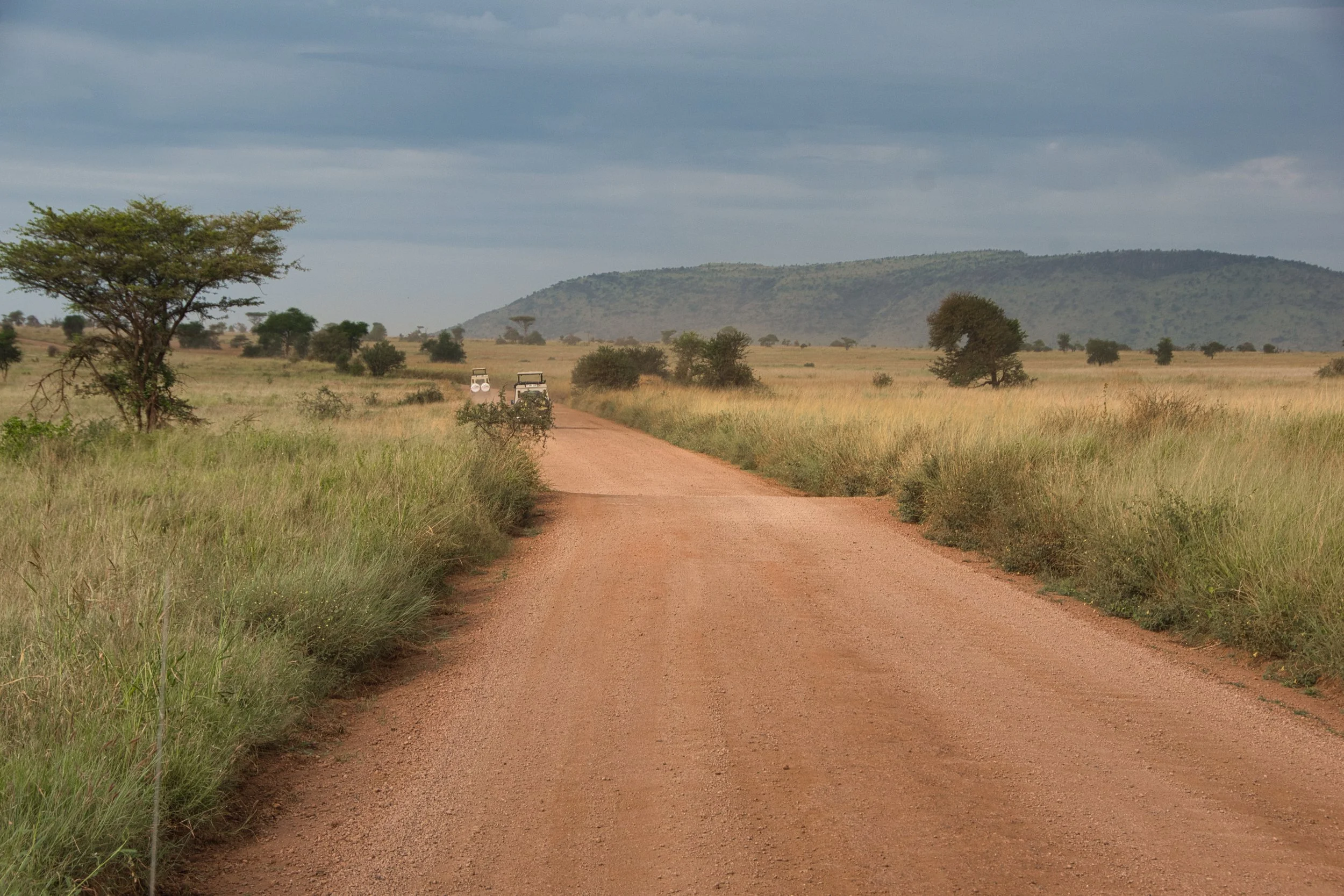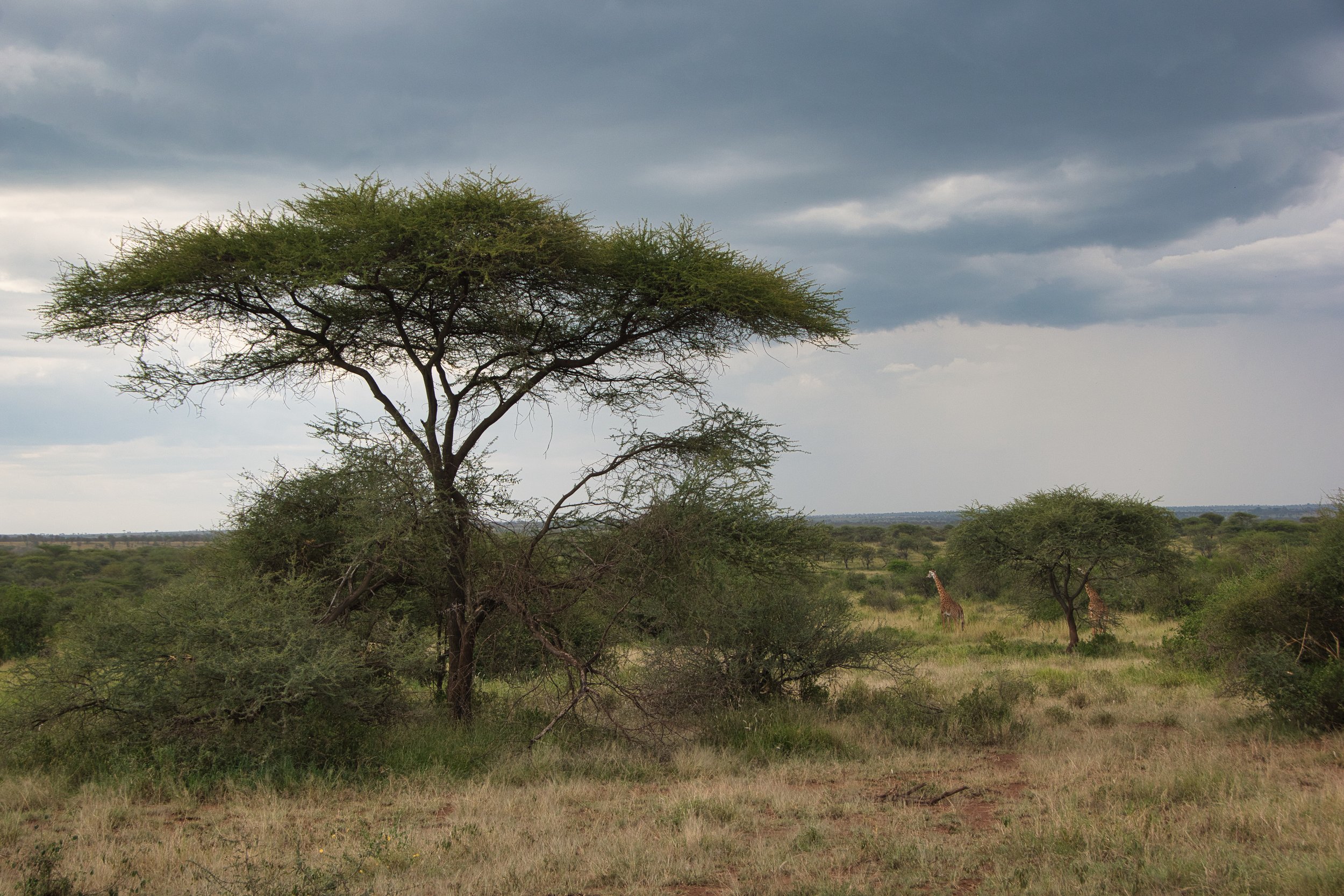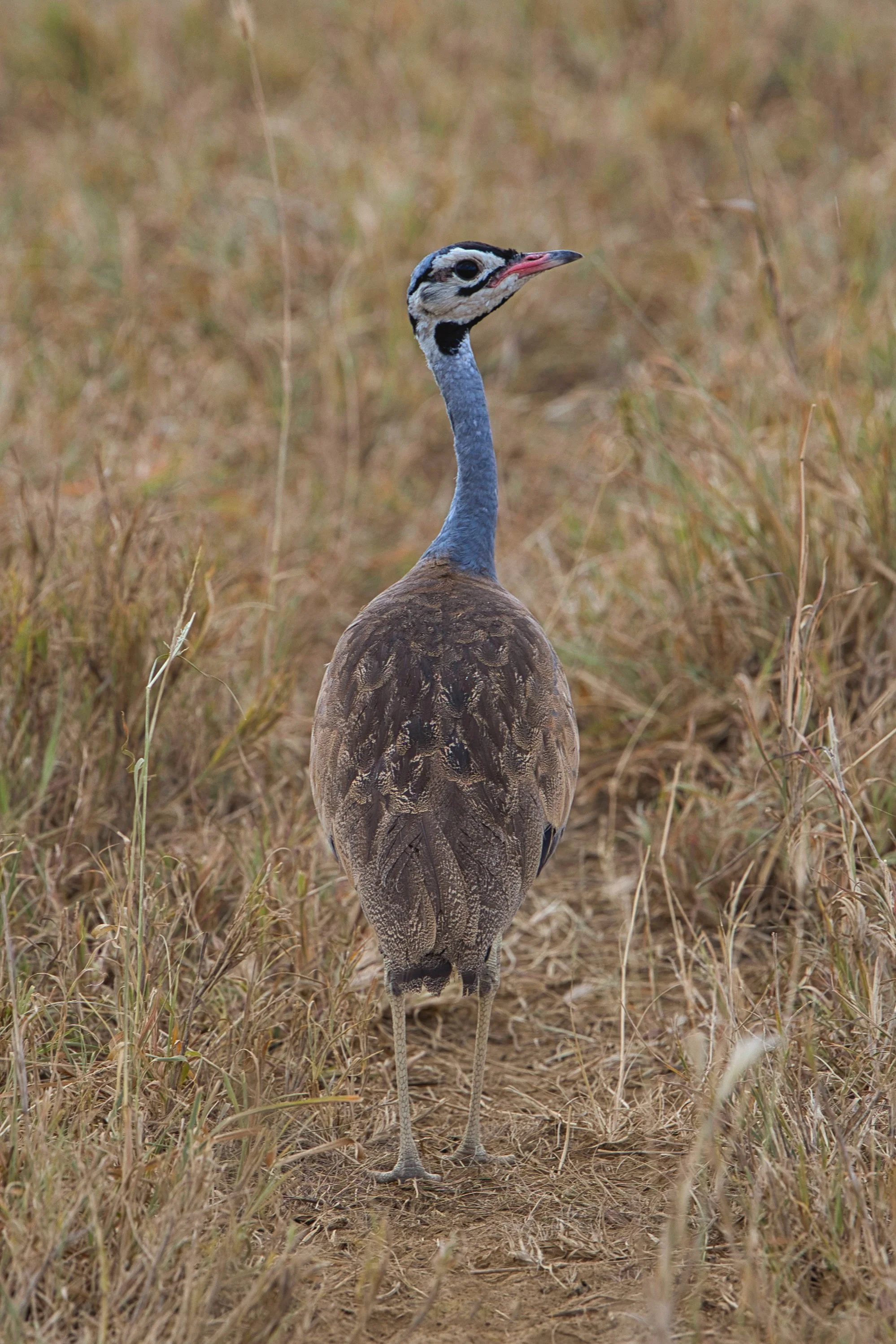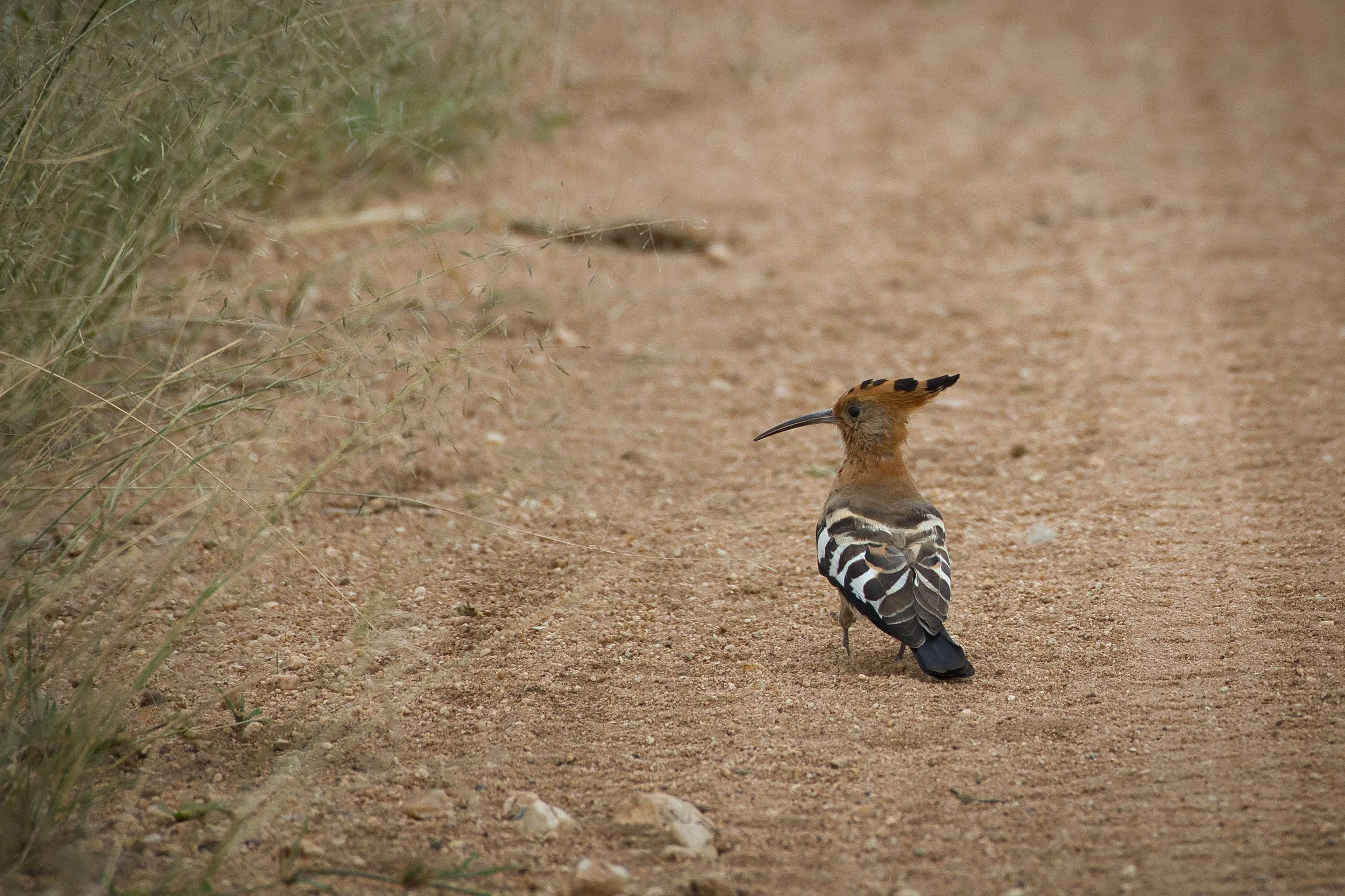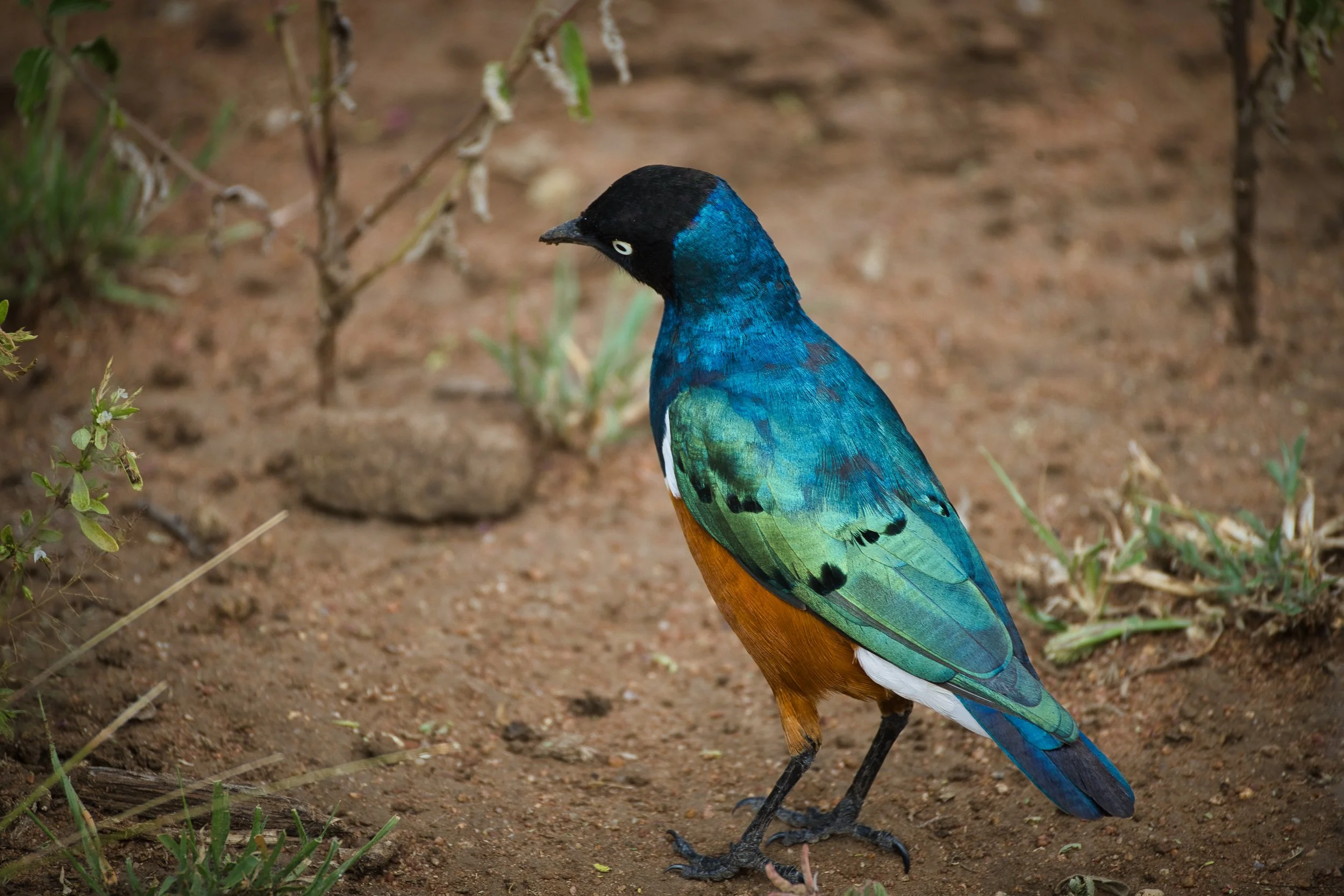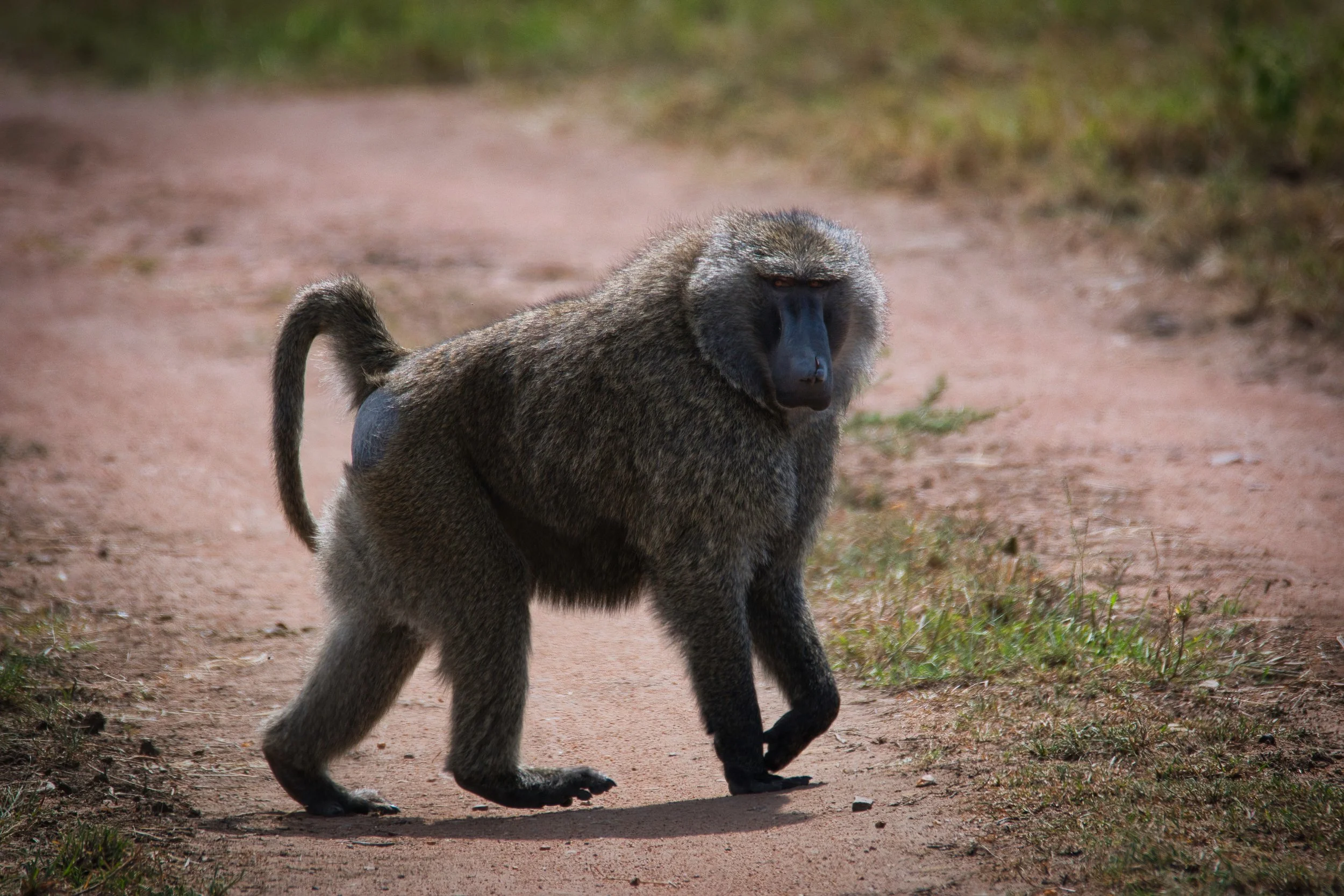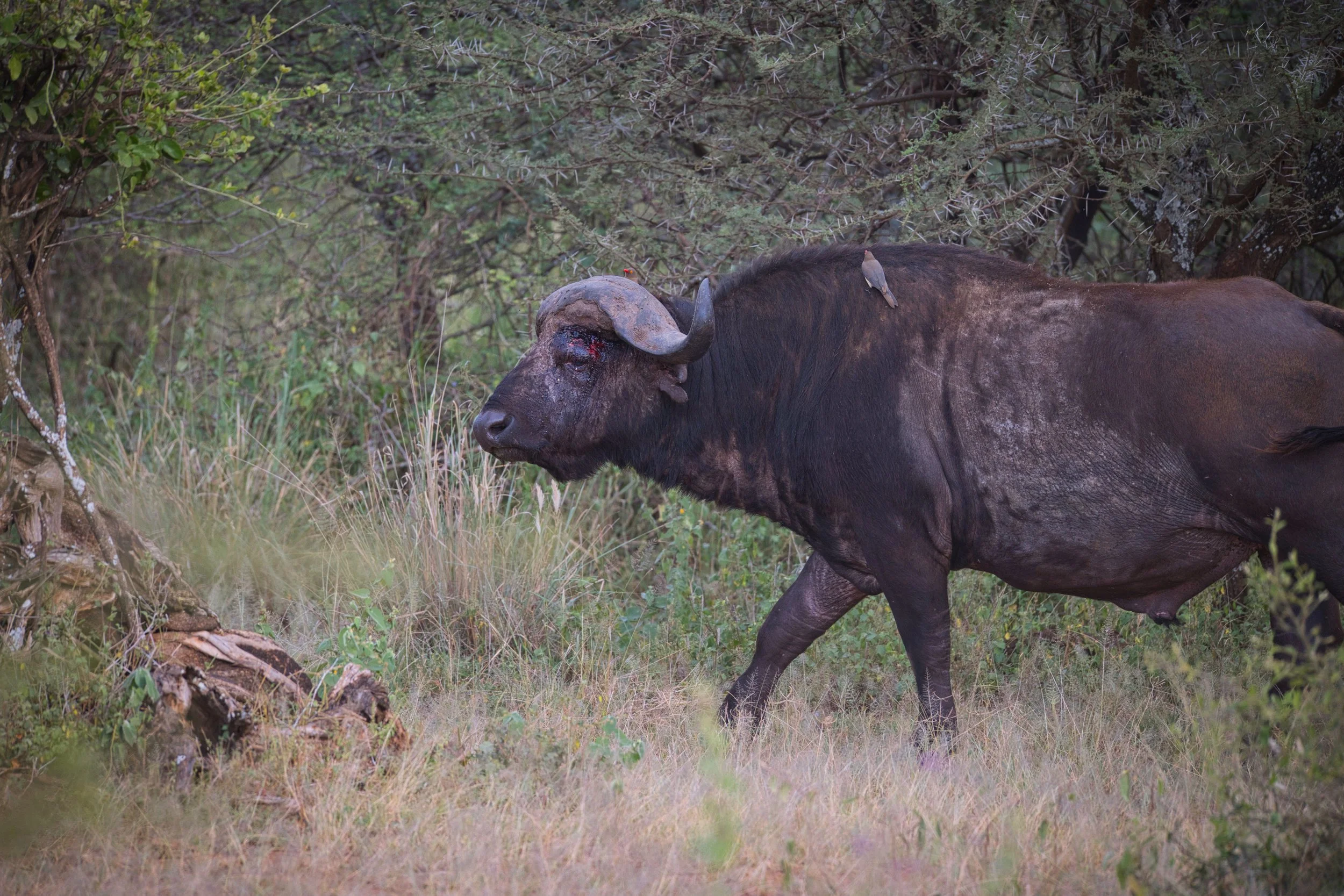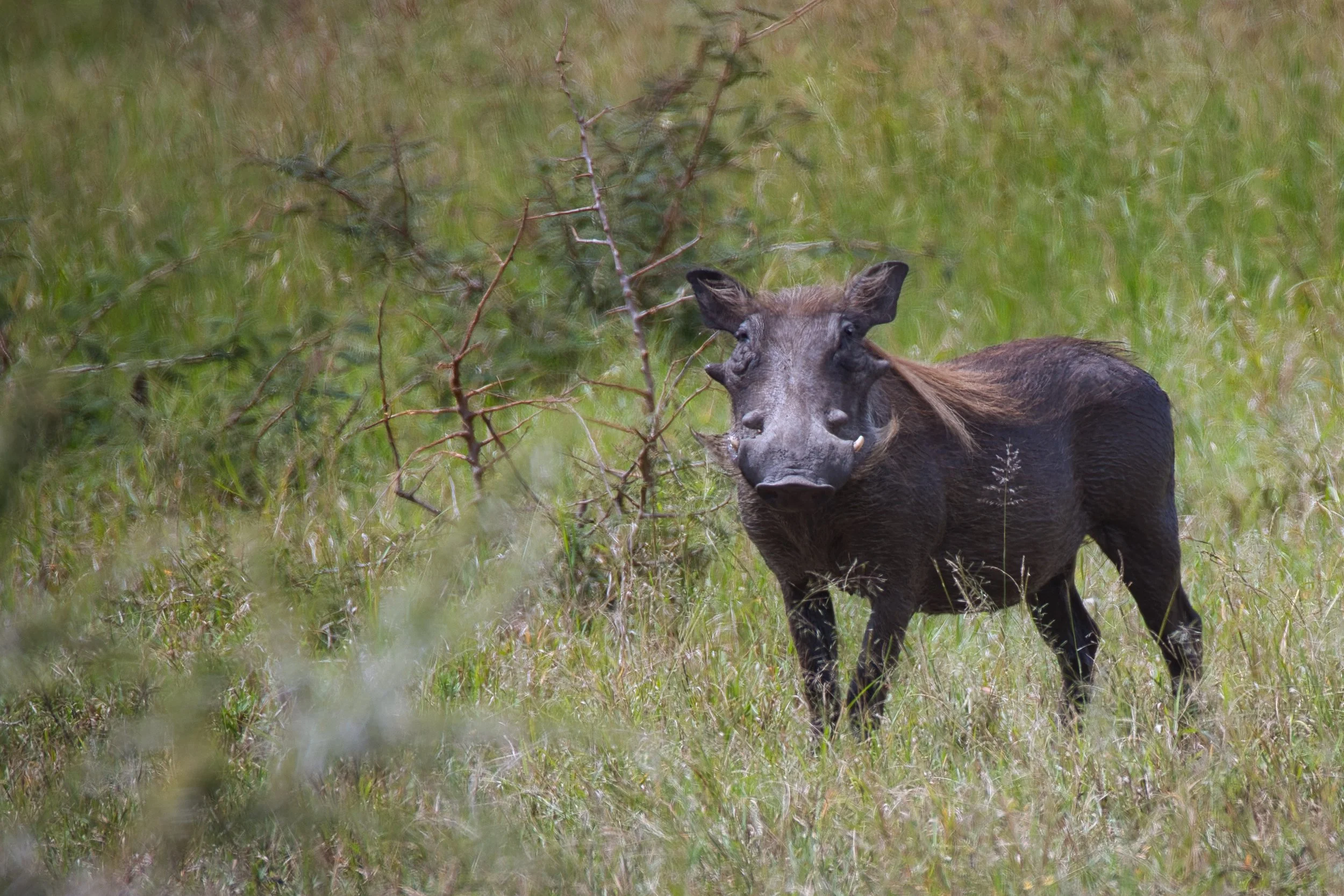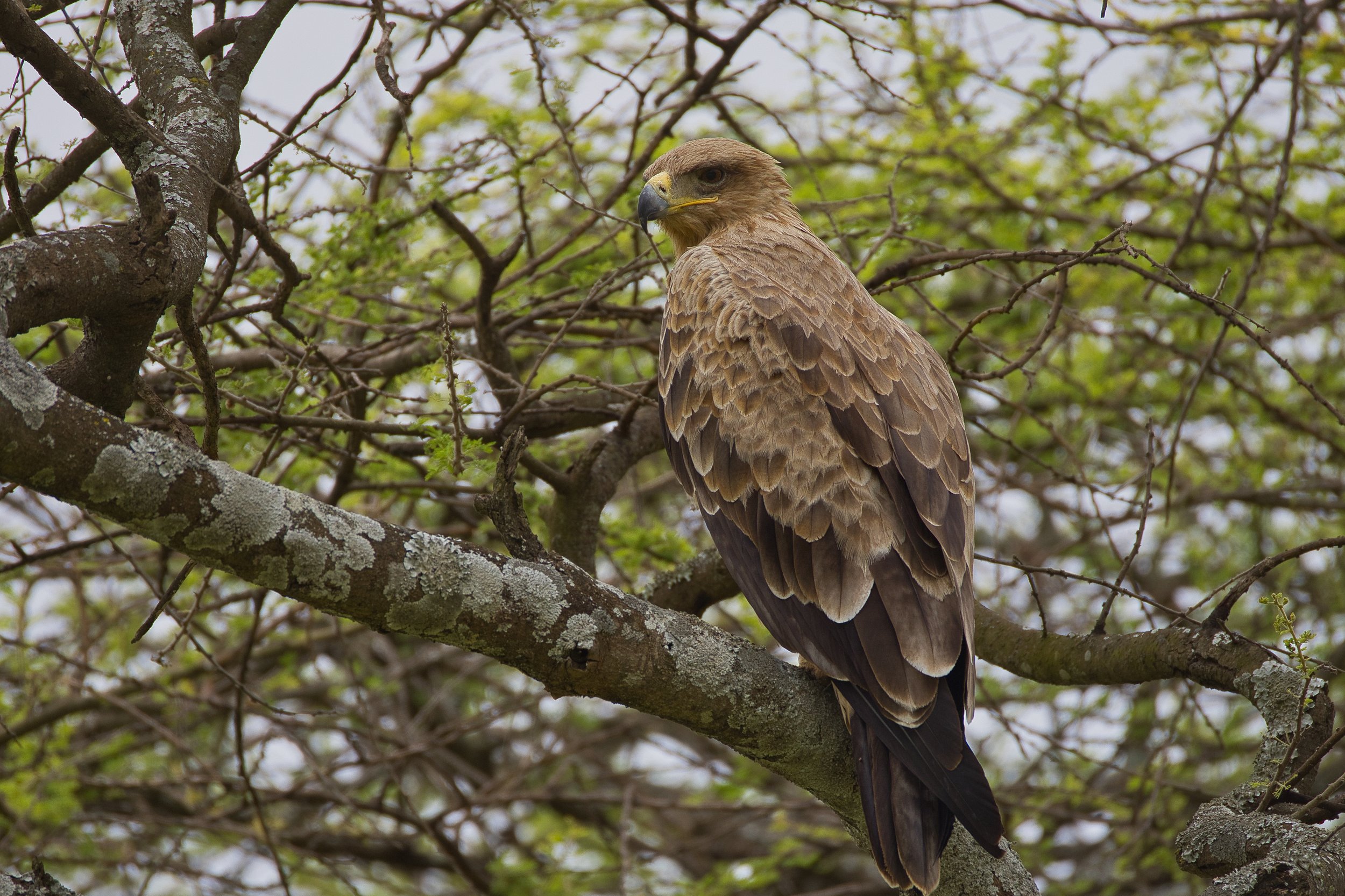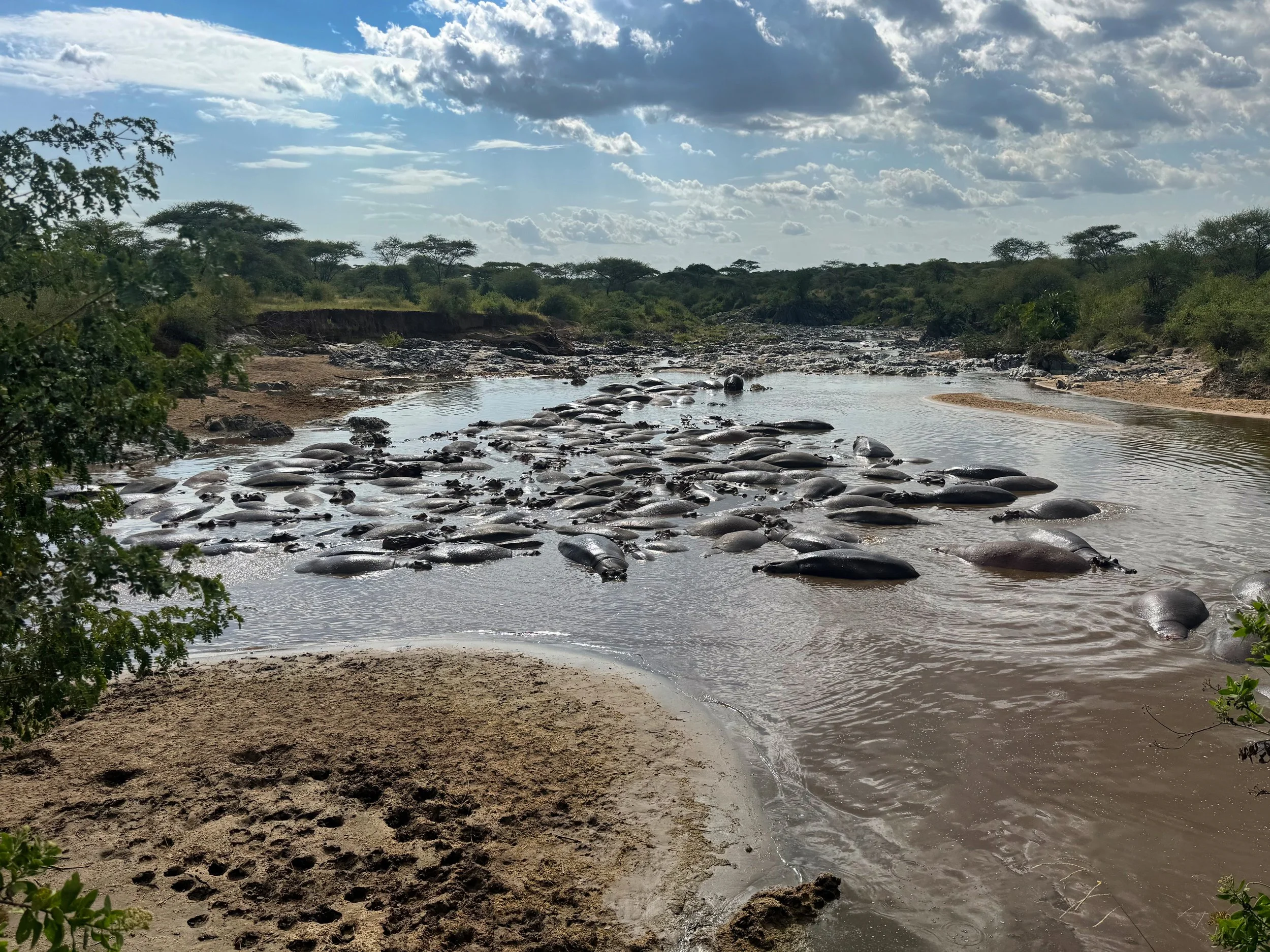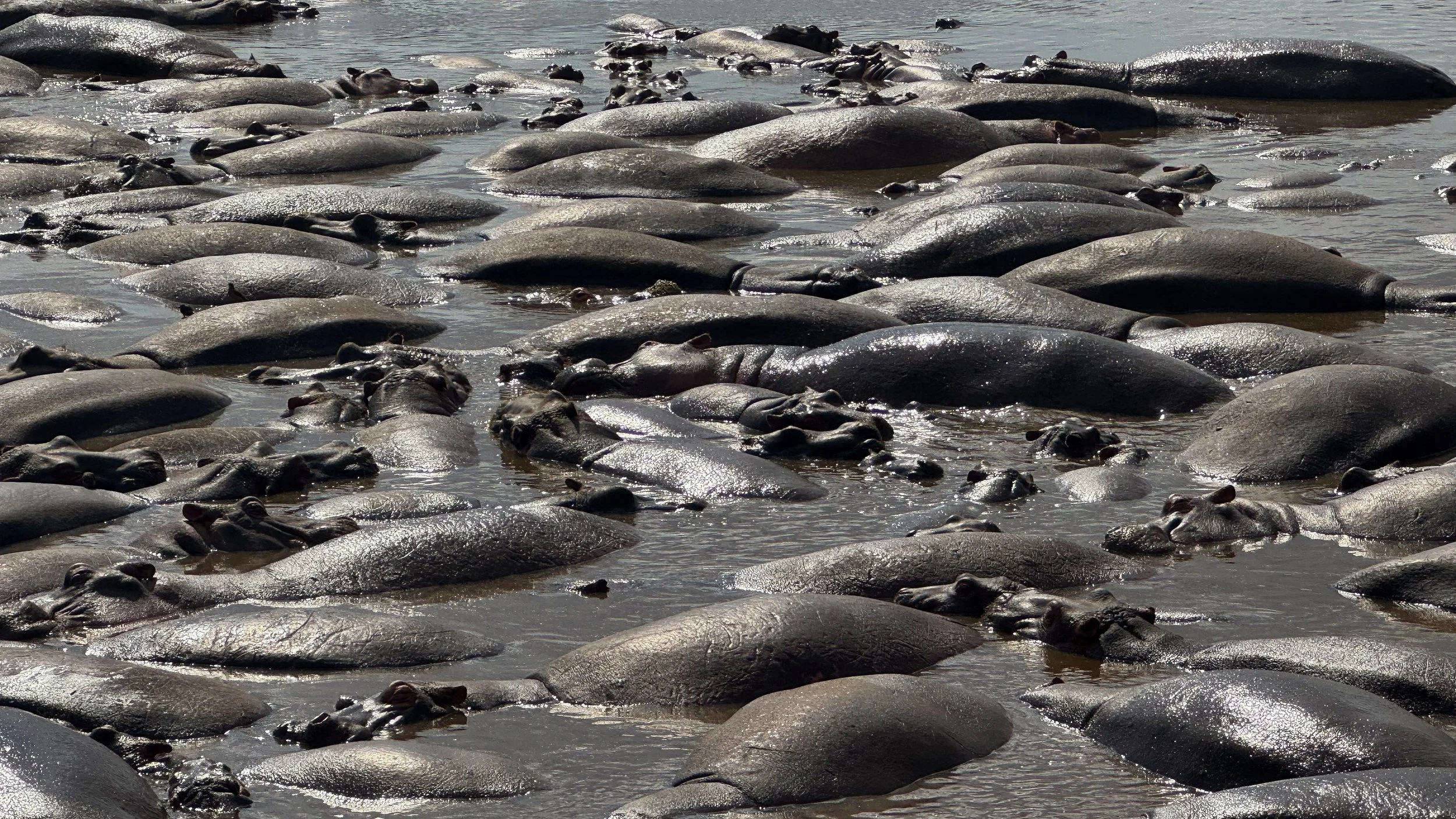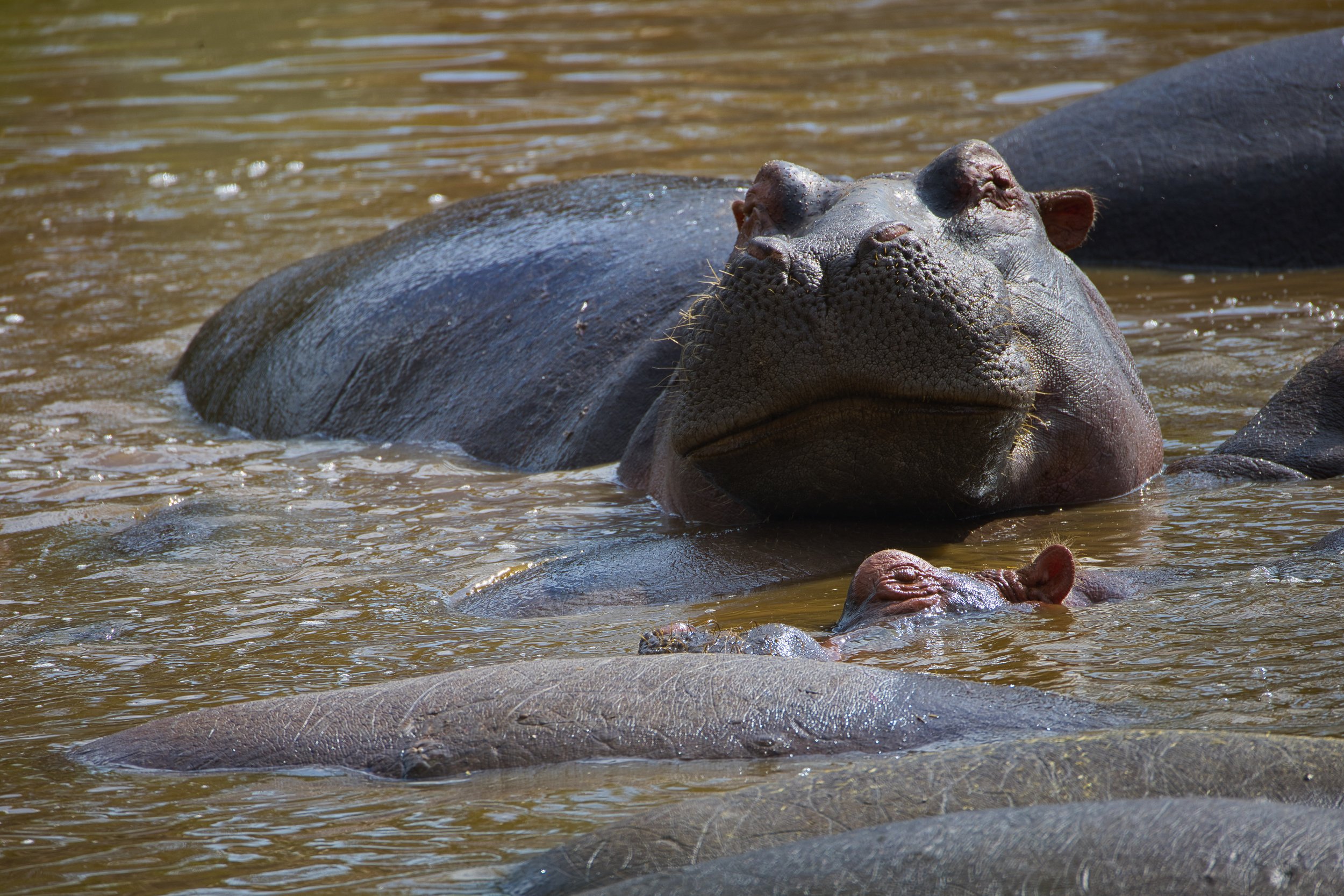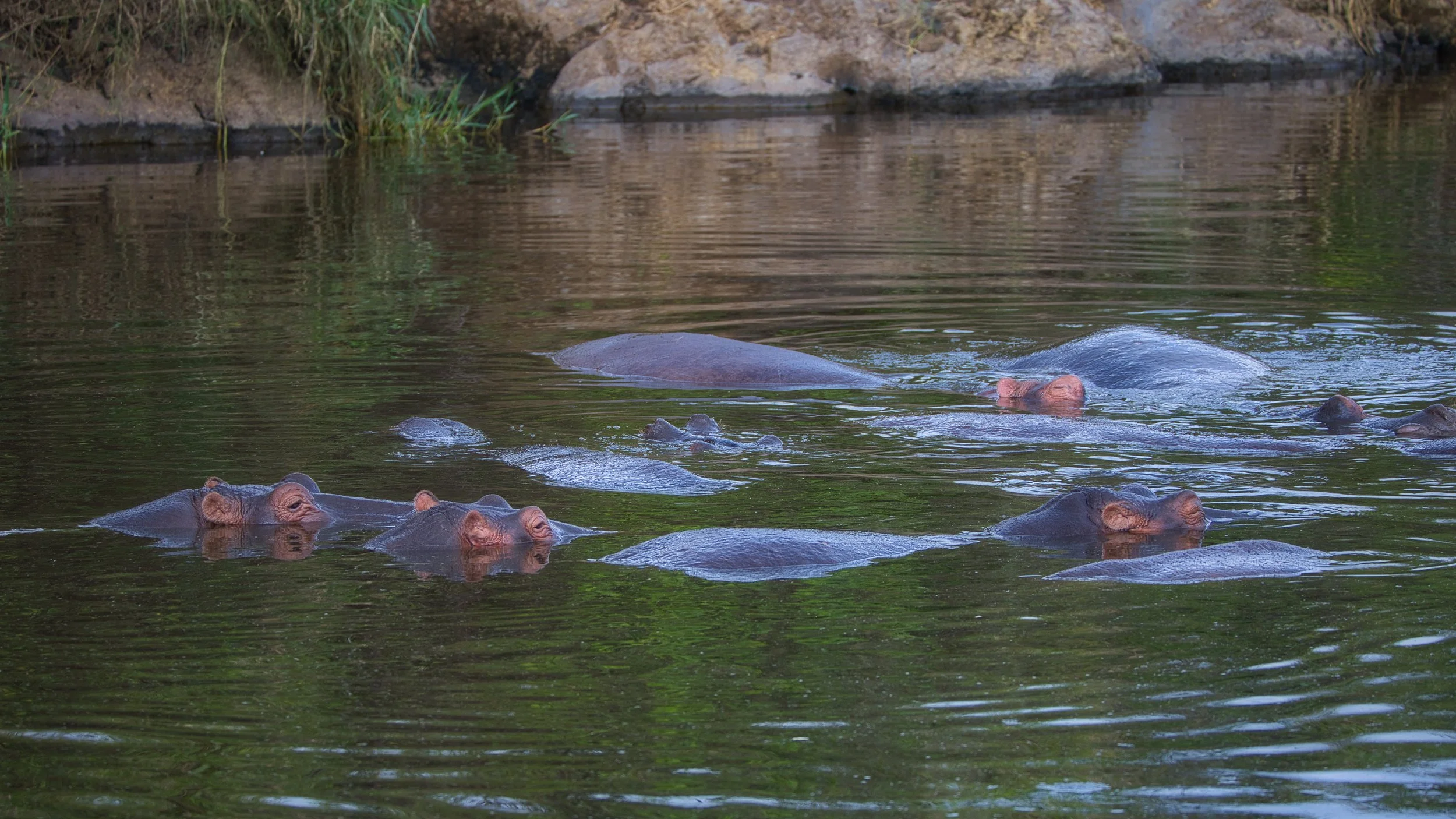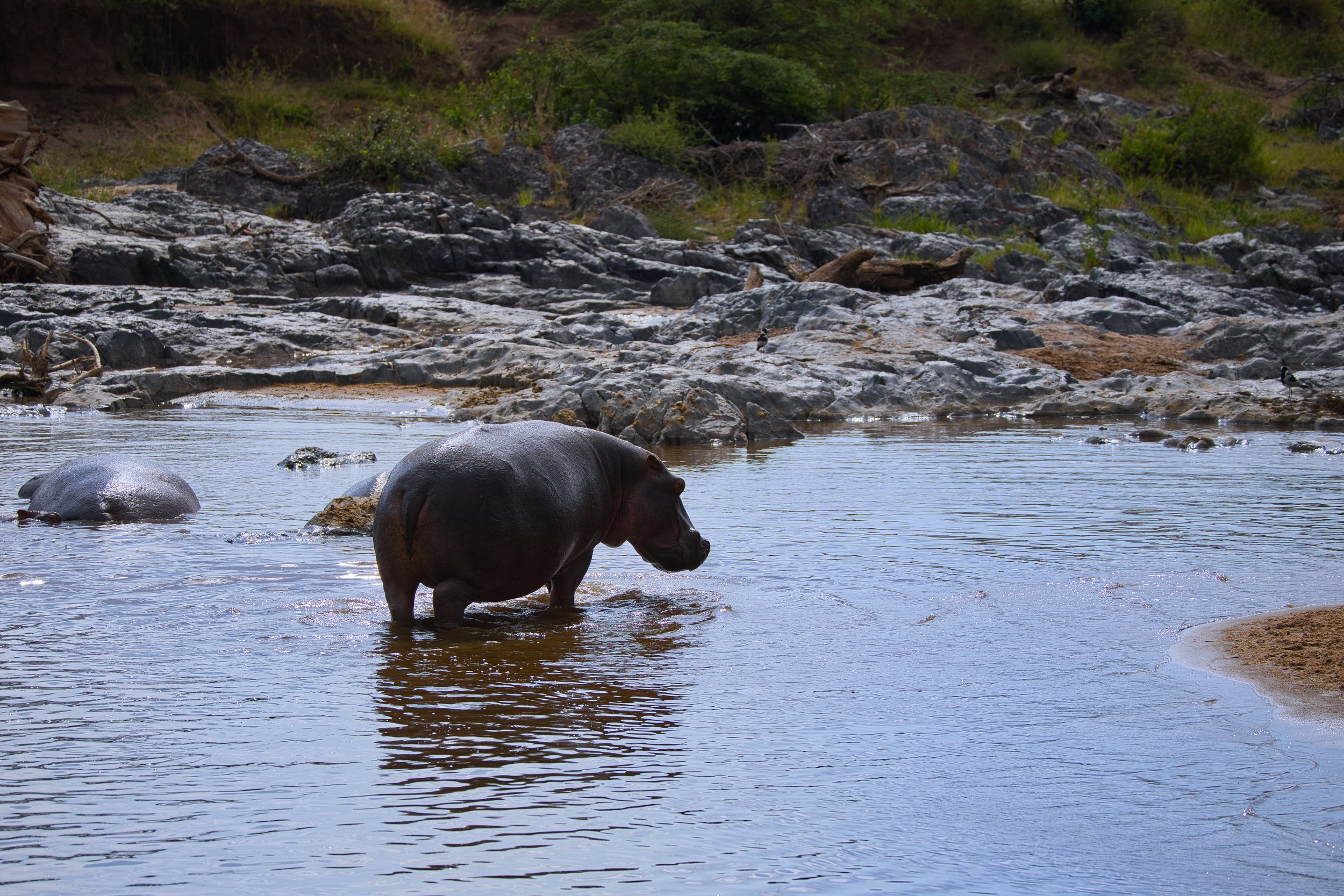Sunset XVI - The Serengeti
As cliche as this is beginning to sound, we rose this morning to another fabulous sunrise and bagged the closest we have yet come to an image squirrelled away on our list of potential photographs. An umbrella acacia silhouetted by an African sunset - well in this case sunrise. We breakfasted on the terrace on made to order bacon, eggs, pancakes and fruits while The Wizard outlined our day ahead. It would prove over its course to be an example of quality over quantity, that like the sunrise earlier yielded some of our favourite imagery of the Serengeti to date.
Departing camp we took a slightly different route than normal to fortuitously nab our first sighting of a mongoose. Camouflaged by the brown dirt of an abandoned termite mound, a Dwarf Mongoose sat twitching back and forth in search of only he best knew. As a small, social carnivore, they are known for their cooperative living and often reside in groups within termite mounds and nothing like those stereotyped in cartoons or Indiana Jones movies. They are known to form mutualistic relationships with other species to reduce the risk of predation such as foraging with hornbills who warn of approaching danger, which in turn catch the flying insects that are disturbed by the mongoose.
Living in groups of 12 to 15 individuals tenanting 20 or more termite mounds as dens, lookout posts, or as a source of food, the groups are constantly on the move never using a den site for more than a few days at a time. We only spotted the one on this occasion but did discover more later in the the day. With his soft fur ranging in colour from yellowish red to very dark brown, and his large pointed head, small ears, long tail and short limbs, he was a very cute looking critter belying the title of Africa’s smallest carnivore.
Further in the day we spotted a second species known as the Slender Mongoose. These guys are completely different looking with their silkier fur, darker colouring and beady eyes bringing a more sinister, and perhaps recognisable character to the species. Generally living alone or in pairs, the Slender Mongoose is primarily carnivorous though is an opportunistic omnivore. Insects make up the bulk of its diet but lizards, rodents, birds and amphibians are all eaten when available. It will also eat carrion and eggs, and befitting the more popular image of mongooses, the Slender Mongoose is capable of killing and subsequently eating venomous snakes.
There is a third variant found in the Serengeti called the Banded Mongoose which we unfortunately couldn’t add for the trifecta.
Continuing our safari, our next, and most opportunistic sighting was of a few ostriches out for their morning run. Known as the Masai Ostrich, they are a red-necked subspecies of the common ostrich endemic to East Africa and the second largest bird in the world. With one male and two females in the small troop, they at first darted across the road in possible fear before slowing to a more casual gallop over the plain. The male reaches heights of 2.7 metres and a weight of 145kg, while the female is typically smaller and lacking the black features more commonly found on the males.
Possessing large eyes 50 mm across and long eyelashes, the Masai Ostrich have exceptional vision despite their relatively small heads compared to their body. The skin on the neck and thighs of the male Masai is bare and pink in colour, which intensifies to an almost reddish hue during mating season which we suspect was the case during this ménage à trois. Their large size prevents the capability of flight but this is compensated by their exceptionally long and muscular legs allowing for maximum running speeds of up to 70 km/h.
Like many African animals, these ostriches were a little odd looking but absolutely fascinating to watch. It was just like a road-runner cartoon minus Wile E. Coyote and a “neep-neep”.
Next we stumbled upon a wildebeest carcass ravished upon by a team of vultures and marabou stork. This was truly a remarkable sight to behold adding credence to our comment that today was more about quality than quantity. According to the Wizard, this kill was no more than a day old and the handiwork of the many lions found in the area. The scavengers only arrive when the pride has moved on and given the abundance of blood and red discolouration of features around the birds necks, they may have only started their clean up earlier this morning.
Tanzania is home to eight species of vultures, with six of them classified as endangered or critically endangered on the International Union for Conservation of Nature’s red list. These magnificent birds play a vital role in the ecosystem by scavenging carrion, helping to control disease and prevent the spread of harmful bacteria. Unfortunately, Tanzania's vulture populations are facing significant threats including poisoning, habitat loss, and hunting for traditional medicine. Todays serving of wildebeest was attended by at least 15 White-backed vultures who are obligate scavengers with a high level of specialisation in carrion. The carcasses of large, grazing animals are their primary food source but with their beaks being medium-sized and not adapted for tearing through tough skin, they are limited to eating soft tissues such as the viscera becoming exposed after the predatory animals have finished their first course. The White-backed vulture circles the sky in search of freshly killed animals often following other scavengers and mammalian carnivores to find it.
The marabou stork is a large wading bird native to sub-Saharan Africa breeding in both wet and arid habitats. It is often called the "undertaker bird" due to its shape from behind: cloak-like wings and back, skinny white legs and occasional large white mass of hair and is often credited to having the largest wingspan of any land bird at an average of 2.6 metres. As a frequent scavenger, their naked head and long neck are adaptations to this livelihood similar to the vultures which they often feed with. In both cases a feathered head would become rapidly clotted with blood and other substances when the bird's head buries inside a large corpse so evolution has bestowed them a bare head to easier keep clean.
The marabou mainly eats carrion, scraps, and faeces but will opportunistically eat almost any animal matter it can swallow. Frequently following vultures, which are better equipped with hooked bills for tearing through carrion meat, they wait for the vultures to cast aside a piece, steal meat directly from their beak or wait until they are done. As with vultures, marabou storks perform an important natural function by cleaning areas via their ingestion of carrion and waste.
Both birds’ characteristics were on full display this morning with some vultures perched in tree branches digesting their gluttonous feed while the impressive wingspan of the marabou could be seen above as they came in to land. The vultures ripped and tore at what meat remained on the felled beasts ribcage while the undertakers stood back patiently waiting, as undertakers often do.
After a good hour watching this Serengeti banquet, Albert as always found a pocket of unknown savannah hiding what Fatpap thinks were the best elephants he has ever seen. Making this so spectacular was how close we managed to get to the gentle giants, how much we could witness just with the naked eye, and them all passing us as if invoked by a black Dumbledore to cross our road for a portrait photography session. Foraging for their massive daily intake, two combined in bending down a tree branch then literally stripped it bare of its vegetation. The teamwork was purely symbiotic resulting in the freshest leaves usually only attainable to maybe a giraffe.
Another indulged in a dirt bath and could been seen “sucking up” red dirt from the ground to then spray over his body. As our photos demonstrate, he took on this marvellous red colour making him stand out even further from the herd. Elephants are a glorious creature who on every encounter manage, as does Africa, to always provide a memorable moment.
On our way to finding an appropriate lunch spot we spied, just a little too far away for our liking, a group of lionesses sunning themself on a rocky outcrop canopied by thick and lushly green foliage. What could have easily been missed was a lazy cat slumped over the warm rocks for all to see, with more lionesses, and some baby cubs, hidden deep within the greenery. Again we stopped for a long time not only trying to grab a banger, but to just witness this naturally wonderful occurrence. Even with 800mm lenses this is the closest we could get but nevertheless are extremely pleased by the results on the day, and now.
Next came our biggest surprise of the day, and maybe during our whole time in Africa. With a few animals still on our bingo card not yet highlighted, the cheetah was the most allusive and one we were all hoping to see. Even The Wizard wanted to see a cheetah as he later confessed to being his favourite animal. So, along a road we had not yet been on, en route to a guaranteed cracking lunch spot, we chanced upon a mother and cub cheetah devouring a recently conquered Thompson’s gazelle. Literally only 8 feet from our cruiser, and judging by the carcass less than an hour old, these beautiful cats, mother and daughter, ate their lunch without a second glance to us - well maybe just one or two - while Lyndall and Fatpap without word of a lie took over 1,000 photos between them. The scene was incredible, absolutely hypnotic, even bringing Albert to silence and whipping out his iPhone 7 for this own Savannah Banger. We were so close we could hear bones cracking and skin tearing, and even without camera could see the swelling of their bellies as they overate which Fatpap could more than identify with.
East African Cheetah, Serengeti, Tanzania
The East African cheetah lives in grasslands and savannahs of Tanzania and Kenya, and mainly inhabits the Serengeti ecosystem including Maasai Mara and the Tsavo landscape. Primarily living in scrub forests, grasslands and savannah open fields where prey is available, they play to their hunting strengths which is of course speed. Renowned for being the fastest land animal and capable of reaching speeds of 110 km/h, the East African cheetah can accelerate from 0 to 60 mph in just a few seconds. This incredible speed is due to their specialised body structure which includes long, slender limbs, a flexible spine, and a long tail that acts as a rudder.
Measuring around 120cm in head-and-body length and weighing 75kg which is slighter than other African cheetahs, they are the second-palest of the species having a white-yellowish to tannish coat. Their fur is usually shorter and leaner with many round black spots except on its white underside. The spots merge toward the end of the tail to form four to fourteen dark rings followed by a white tuft at the tip of the tail, while its facial tear marks run from the corner of the eyes down to the mouth reducing the glare of sunlight in its eyes.
It was very difficult leaving this unique encounter so we didn’t. We popped the cameras down for a while and ate our lunch in the cruiser with these two gorgeous creatures just off our window. For Lyndall this was her most moving animal encounter to date in Africa, and if not evident with her camera going silent, it was through her tears of happiness.
After lunch we had back to back lion experiences, both very different but equally impressive. In a corner of the plains yet unvisited, Albert conjured a lion and lioness during their biennial choreographed ballet of repopulating the pride. Under the shade of a tree on beautifully lush green grass - how romantic - the pair lay almost hidden, and again just that little too far away for us to get a clear photograph. With the female clearly the antagonist, we learnt lions, as if on a weekend Carnival Conquest Cruise, usually mate for a period of 3 to 4 days. During this time they will copulate sometimes up to 50 times a day with each mating lasting only a minute or less. The female initiates the process and the pair will do that every 20-30 minutes during their cruise, oops, over the course of several days to not only stimulate ovulation in the female but to secure paternity for the male by excluding other males.
Albert was outwardly excited by the African porn, and considering it occurs only 4 days every 2 years, it was something uniquely privileged to witness. But we couldn’t sit around all day watching lions root so we drew a deep breath and moved on down the track.
It is often said a good guide will smell wildlife long before it’s seen and today the Serengeti Wizard proved that true. Not far downwind of HippoTown, in the lower folds of an impressively symmetrical sausage tree, Albert found another two lionesses perched more like owls. Lions don't typically climb trees as a primary behaviour but do for a few reasons including escaping insects, seeking a cool breeze, or even for a better vantage point. These guys looked adorable just loafing on the limbs with their legs drooping either side and their tails literally swinging in the breeze. The lower one visibly had blood on her jowls indicating a recent kill, or at the very least a recent feed, with the later more likely with this being their avenue of shaking off their food comas. Like all of our encounters today, we couldn’t help but just stare at these breathtaking creatures clicking our shutter fingers with only the smallest of head movement or lifting of eyes in our direction. It has been said in earlier posts that Africa never seems to disappoint and offers something new every day. And while that something new might not have been what one expected, she tantalises every sense tugging on unexpected emotions from deep within. Bloody Africa huh.
Right from day one we settled ourselves pretty quickly into a really good safari routine when it came to spending hours on the road in a confined Japanese designed vehicle. With plenty of room in the back of the cruiser to ourselves, our camera bags always lay open at the ready with Fatpap travelling with 2 Nikons and Lyndall her spectacular Canon. We had a variety of lenses mounted to each body so we could simply just pull out the lens required already mounted rather than fiddle with changing lenses all the time and perhaps missing a shot. This was not only great planning of course, but our cameras electronic contacts were regularly malfunctioning due to the level of dust intake and we were having to constantly clean them on the run, or back at camp each night. Add the easy access to all our other cameras, the Viennese waltz we have both perfected over months travelling together in campers, and a rooftop you can pop in a matter of seconds, and we were quite rightly worthy nominees for National Geographic Wildlife Photographers of the Year award.
Egyptian Geese
We added further to our animal collection throughout the rest of the day with sightings of baboons, Thompson’s gazelles - alive ones this time, warthogs, numerous birdlife, buffalo and even a lone male cheetah late in the afternoon. But the Serengeti offers more than just animals and for Fatpap that included trying to capture the quintessential African landscape image. The beauty of the Serengeti doesn’t just lie with its wildlife, it’s at every turn, every sunrise, in every tree and every bank of cloud rolling in from afar, and without the luxury of camping for a few hours in a perfect spot with the perfect light, coupled with the freedom of movement removed and limited to where Albert parks the cruiser together with always shooting from an elevated position from the back of said cruiser, he tried his best to capture that feeling in all of his landscape imagery.
Alberts last surprise for the day was something we suspect he was saving up from the very beginning. Not far from camp but in the opposite direction we’d been travelling all week, he took us to another hippo spot brimming with scores of the beasts wallowing in a natural waterhole of a still flowing, albeit slightly, river. It was much more pleasant than HippoTown but equally as impressive with easily triple the number of hippos in the bloat. Another difference was this waterhole was right next to a designated rest stop where travellers disembark their vehicle safely. The river bank was at least 10ft high on this side making it insurmountable to hippopotami, and a secure viewing platform made the view even more spectacular. On the way through we saw the aforementioned lone male cheetah by the side of road and not long after a pair of giraffes just cruising through the light scrub looking for a feed. It was a relaxed and peaceful way to end our three days in the Serengeti and yet another one failing to disappoint. Across the horizon ominous clouds gathered over the plains so we made the short journey home to not get caught out in them.
We of course made it back to Moyo before the rains and expectantly welcomed with a cold juice and damp towel. The staff here were fabulous all the time and it was lovely to arrive home to a warm welcome and genuine smile. The rain did eventuate adding yet another element to our African odyssey so we predictably sipped G & T’s under the canvas roof while the heavy overflow made tiny rivulets in the dry earth beneath. The fire was flamed when the rain abated and from Australia, Germany, Sweden and America we exchanged tales of our safari adventures and toasted new friendships. Diner was again a selection of beautifully created dishes with the owners of Moyo even shouting us a drink or two. We were off in the morning leaving both Moyo Lodge and the Serengeti for another surprise, so tonight we made the most of it by the fire before our lion escort baited us back to bungalow number 3.

